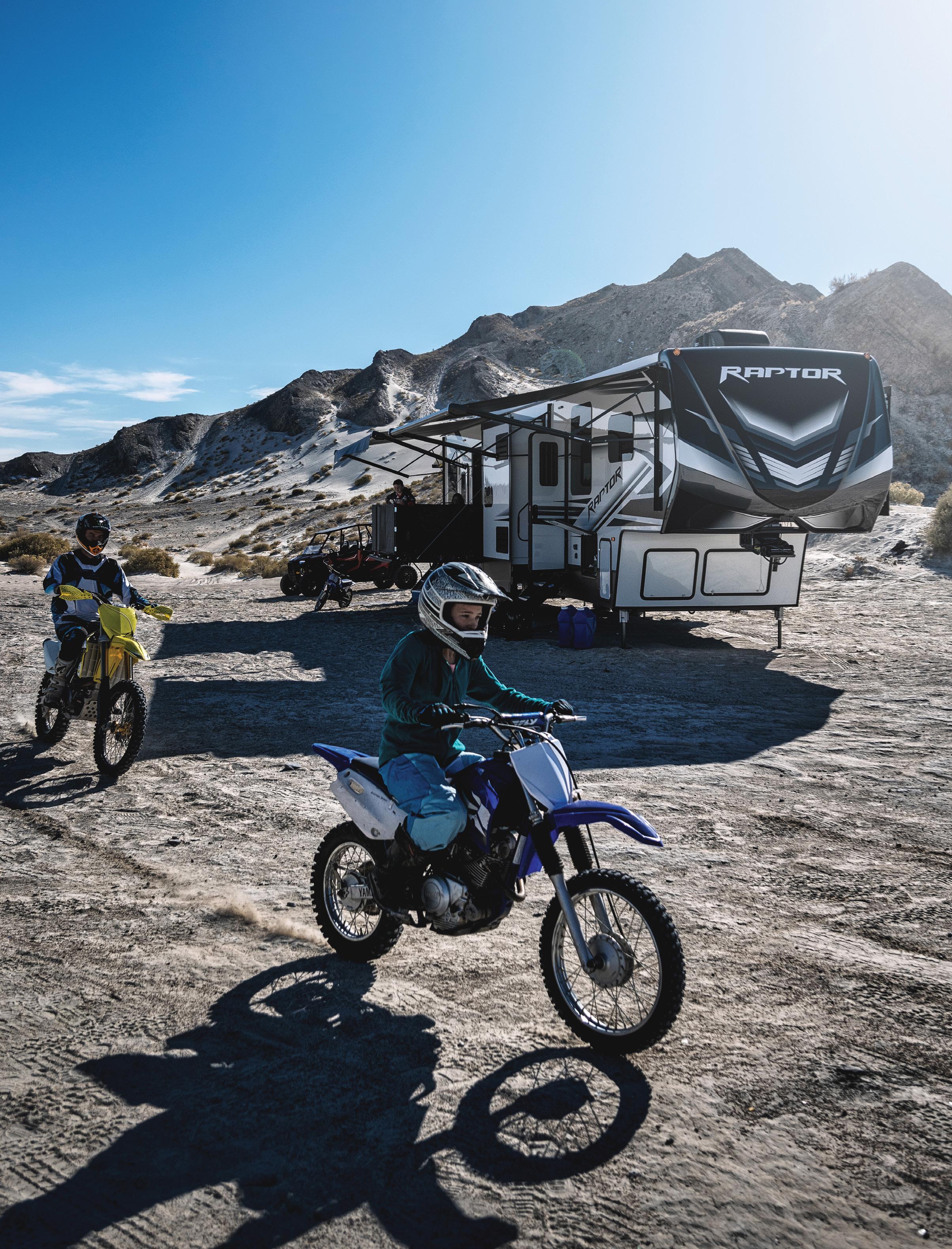
Plan a Cross-Country Road Trip Campground Memberships A Weekend in Badlands National Park HOW TO START Boondocking ISSUE 3 • MAY/JUNE 2022 One MORE Weekend GET MORE USE OUT OF YOUR RV THIS SUMMER
Route 66 ROAD TRIP ALONG
A FAMILY THAT CONTINUES TO GROW
Having a Grand Design is more than just owning an RV. It’s an experience of belonging to a vibrant, active and supportive family.
RAISING THE BAR IN CUSTOMER SERVICE
Every Grand Design RV is backed with a class-leading 3-year limited structural warranty and a customer service team known for doing the right thing.

2019 TRAILER LIFE READER’S







CHOICE GOLD AWARD IN ALL 3 CATEGORIES!

LEARN MORE...
WE STRIVE FOR NOTHING LESS THAN CUSTOMERS FOR LIFE.
ALWAYS MOVING FORWARD. ALWAYS MAKING YOUR EXPERIENCE BETTER.
Whether you’re on the road or on the water, Lippert supplies a broad array of premium RV, towing and marine products designed to enhance all of your recreational pursuits. Our team is always thinking about your next journey — pushing the possibilities of our products and services, all to better your time spent outdoors, whenever, wherever, for years to come.
lippert.com

Follow us on WHENEVER, WHEREVER, WE MAKE YOUR EXPERIENCE BETTER.

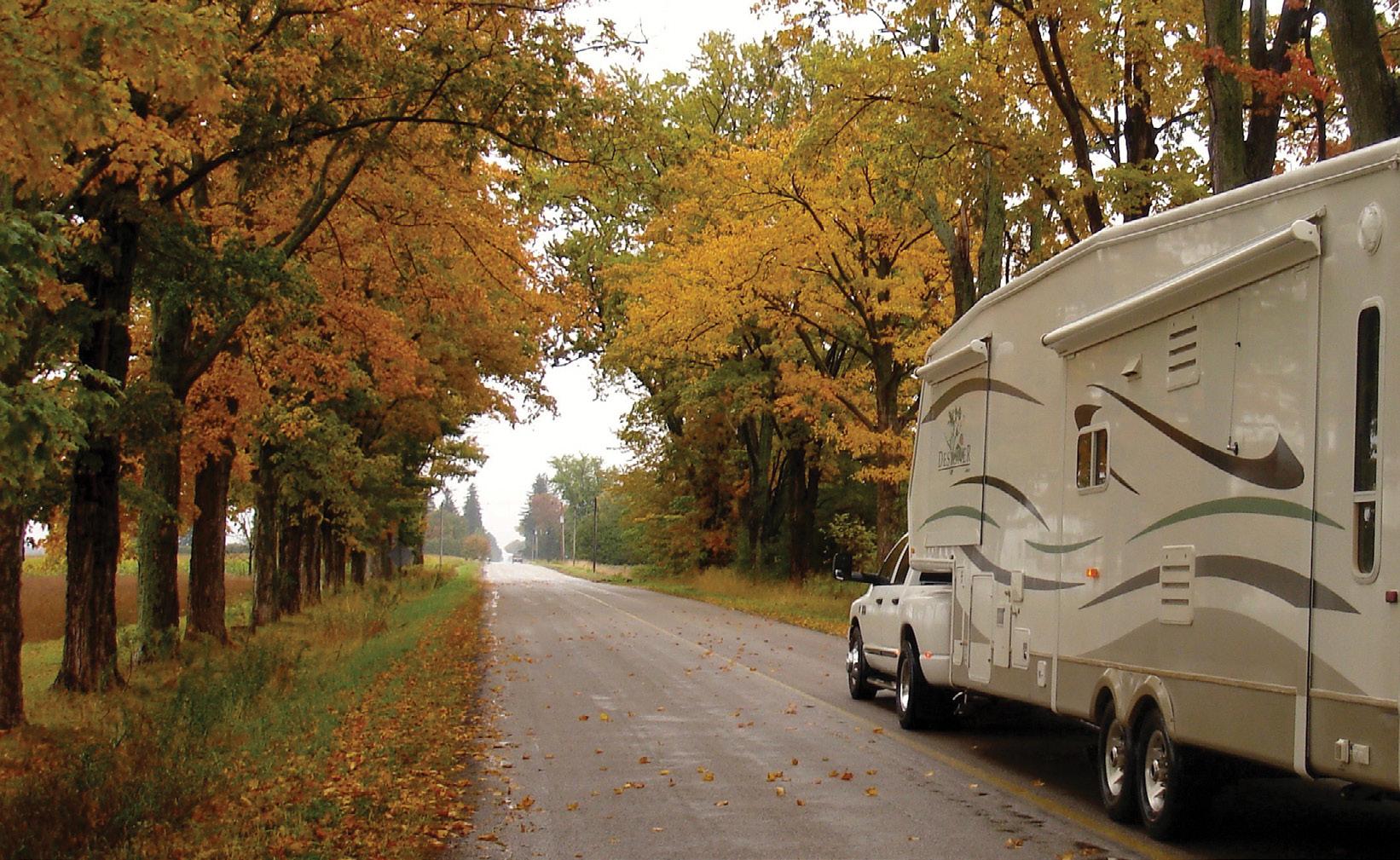


RV TODAY | 5 On the cover:
Keystone RV of a family enjoying their Raptor 429 and lots of toys while boondocking in Knolls Recreation Area in Utah. 9 From the Publisher 11 Contributors 12 Why Do You RV? Fellow readers share their reasons for RV travel! 15 Coast to Coast Planning a Cross Country Road Trip 18 From our Readers: How Do You Get Out One More Weekend? 21 Traveling the Outback Our Great Australian Circuit with a Family of Five 26 Making Our RV a Home Why We Renovated a Brand New RV 29 Electric Bikes 101 The Next Hot Tech Toy for RVers? 33 Thinking of Getting an RV? Ten Tips for New Buyers 37 Seasonal Camping Versus Full-Time RV Travel Pros and Cons for both kinds of camping! 42 RVer Approved Campgrounds Check out campgrounds in your region and plan your next getaway! 52 Campground Memberships Save Money and Expand Your Options 29 33 How to Plan a Cross-Country Road Trip Campground Memberships A Weekend in Badlands National Park HOW TO START Boondocking One MORE Weekend GET MORE USE OUT OF YOUR RV THIS SUMMER Route 66 ROAD TRIP ALONG 42 Contents
Photo provided by
GO ON A VACATION THAT MOVES YOU.



GO EXPLORE




78 Picturesque Route 66 A Travel Photographer’s Bucket List Road Trip 82 Badlands National Park The Ultimate Travel Guide 87 Must-Haves For RVers 89 Events 91 RV Yesterday 63 68 74 82 Contents 53 Visiting St. Andrews State Park Your Complete Travel Guide to one of the most beautiful state parks in Florida 56 One More Weekend How to Get More Use out of Your RV this Summer 63 Off-Grid Why You Should Start Boondocking Now 68 An RV Staycation 74 Healing Through Nature Resources for Veterans to Save Money and Get Outdoors RV TODAY | 7
LET’S Traveling to the Best Conditions for Winter Sports HUNTING

SUBSCRIBE BOONDOCKING THE GOOD, THE BAD, AND THE UGLY FINDING SEASONAL WORK ON THE ROAD UNIQUE ROAD TRIP STOPS IN AMERICA


@rvtoday

RV TODAY Magazine
Volume 1 I Issue 3 I May/June 2022
Publisher Demian Ross
Chief Editor Nikki Kirk
Managing Editor Jess Stiles
@rvtodaymag FOUR FOR RV LIVINGBUDGETS A MAGAZINE


FOR DIGITAL NOMADS


Editorial Assistant L. Merredith


Art Director Gayle Schadendorf
Operations Manager Jamie May
Copy Editor Kristin Skaggs
Advertising Information sales@rvtoday.com






RV TODAY 3916 N POTSDAM AVE #3194, SIOUX FALLS, SD 57104
Disclaimer: One of the great things about digital publications is the ability to link you directly to the products or services you want to hear more about. Some of the links in this issue are affiliate links where we earn commissions on goods or services you buy. These commissions help us to continue to publish the magazine. RV Today is also a participant in the Amazon Services LLC Associates Program, an affiliate advertising program designed to provide a means for sites to earn advertising fees by advertising and linking to Amazon.com. If you have any questions please don’t hesitate to reach out to us at info@rvtoday.com

TO THE PRINT EDITION rvtoday.com/subscribe
CONNECT #rvtoday
/rvtoday
Copyright © 2022 DNI Group LLC. All Rights Reserved. Reproduction in whole or in part without written permission is prohibited. No responsibility is assumed for unsolicited submissions. ISSUE 13 JAN/FEB 2022 TRAVEL WORK | EXPLORE LIVING powder
BY DIGITAL NOMADS
FROM THE Publisher
When I attended the RVDA (RV Dealers Association) show in Las Vegas, I had the chance to speak with Courtney Bias from Go RVing. One of the things Go RVing was working on was finding ways to encourage and educate people in hopes of getting them out one additional time per year.

That’s right—one additional time out in their RV per year. That really stuck with me.
The average RV owner uses their RV two to three times per year. When I had to put my RV in storage for a month in 2017, I had trouble finding a place to store it. When talking to the manager of the place I finally found, he said about 60% of the RVs haven’t left the facility in years.
This isn’t unique to RVs; you see it with things like boats and vacation homes as well. I believe it’s a mindset—you have to find ways to make things easier to use, or you won’t use them.
My parents had a cabin, and I noticed their usage skyrocketed after they made the decision to have everything they needed at the cabin at all times. They could basically grab their wallet, keys, phone, and some fresh groceries, and hit the road. No matter the season, they knew everything they needed would be there.
Once they removed the stress of all the time needed for packing and triple-checking that they had everything, it was possible for them to decide on any given Friday that they would hit the road right after work, and then in two hours, they would be in their little piece of paradise for the weekend.
I think most of us RV owners could find ways to make the checklist a little smaller and also look into locations for trips closer to home. Getting away is still getting away even if you’re close by, and the quality time with family and friends is worth it.
In this issue you will find some examples and stories of how to get the most out of your RV, which is really the genesis of this magazine … RV owners helping RV owners.
demian@rvtoday.com
P.S. We would love to hear from you, including suggestions for stories or regular features, letters to our editor, or ideas for what you’d like to see. Let us know what would help you and other RV owners in the future.
Email
us at collab@rvtoday.com to help us make your magazine even better!
RV TODAY | 9
Johnforceracing.com




Although John Force Racing now owns one of the most successful teams in any form of motor racing - one responsible for 21 series championship car owner, 16-time NHRA and 1-time AHRA Funny Car champion driver and 280 NHRA tour victories - force struggled early on, both financially and professionally. He was racing in a belief shared by virtually no one else that he could become champion one day.



Flash forward to now, Force is bidding to extend his record number of Top 10 finishes to 36 and the record number of different seasons in which he has hosted at least one of the NHRA’s distinctive “Wally” trophies to 34. He and his team use their Jayco Seismic Toy Hauler as their home away from home while at the track.
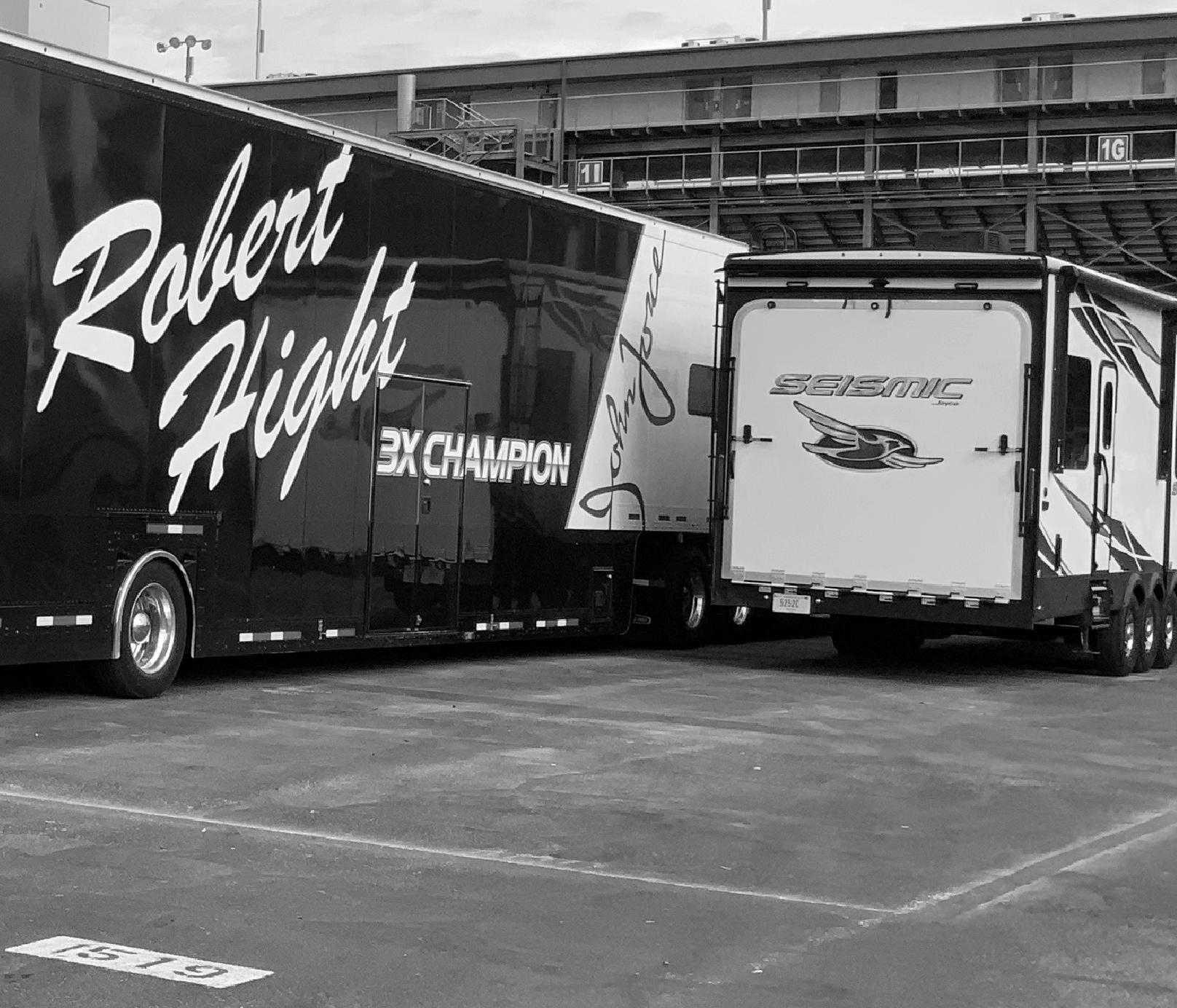
FaceBook @TeamJFR • Instagram @jfr_racing Twitter @JFR_Racing • Youtube John Force Racing
Contributors
Alexis Nascimento
Chelsea Gillespie
Lydia Blanchard
Pamela Colon
Tedy Pham
Robin Goudeau-Baxter
Peggy Dent
Larry McDonald
Danielle Isermann
Molly Totoro
Kelsey Lowman
Kristen & Jameson Sargent
Bob & Grace Bouchard

Lauren & Jon Gusanders
Tom Cox
Kristin Halls
Taylor Fortunato
Carrie Shoemaker
Cory Anders
Jazzy Skye
JR Smith
Laurie Rivers
Heather Van Leeuwen
Contributor Spotlight
Maureen Hochdorf @mommymoadventures
One More Weekend
Maureen Hochdorf is a family travel writer and podcast host specializing in helping families plan their next trip. She runs the National Park Trippers podcast and creates RV and Travel Guides on her website: MommyMoAdventures.com.
Joy Newcomb @ayj_adventures
Picturesque Route 66
Joy has been living and working from her home on wheels with her two dogs since 2018. As a photographer and designer, you can find her perfecting her craft and exploring unique places when not working with clients on ayjadventures.com

Red and TJ Breen @lovinglifehitchedup
Visiting St. Andrews State Park
An experienced traveling couple, Red and TJ create video reviews of destinations and campground locations while exploring the United States in their nuCamp Tab 400 Teardrop Camper RV.

Adam and Kathryn Frazer @adventuresofaplusk
Badlands National Park
Contribute to RV Today
Do you have a story idea, product you love or campground to highlight? Let us know at collab@rvtoday.com
Adam, Kathryn, and Kona, an adventurous married couple (+ pup!) living on the road in their selfconverted sprinter van! Find them driving all over scoping out the best coffee shops, eating tacos and ice cream, and enjoying nature. For their detailed travel guides, check out adventuresofaplusk.com and YouTube channel, Adventures of A+K

RV TODAY | 11
Why Do You
@peaceloveand familyadventures

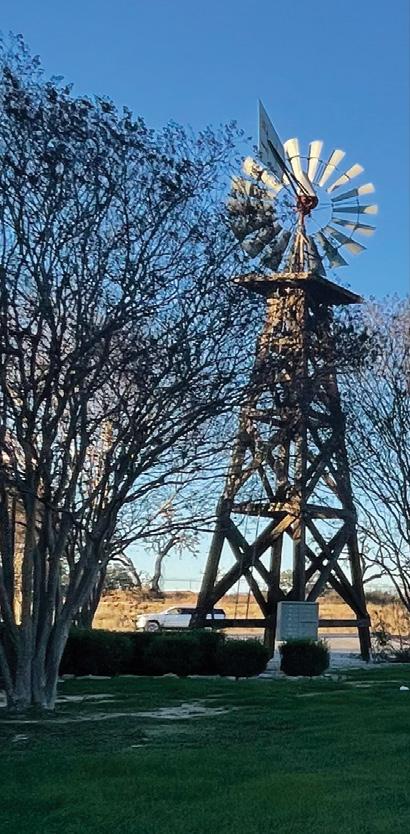

“To find where home is meant to be.”
@kristininmotion
“To
@findingfortunato “Freedom and adventure.”
@dunedin_airstream


“To see more of this beautiful country and connect with nature!”
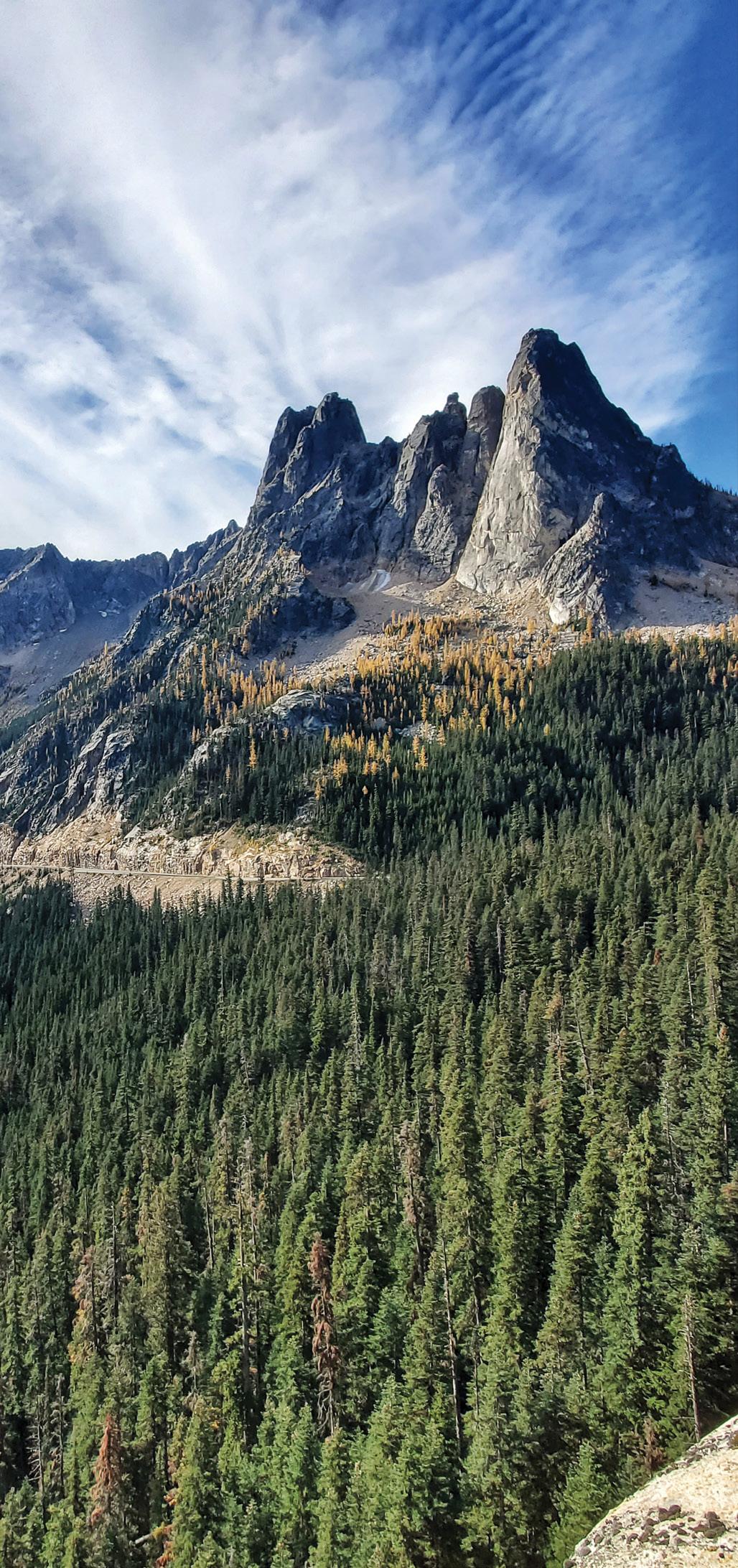
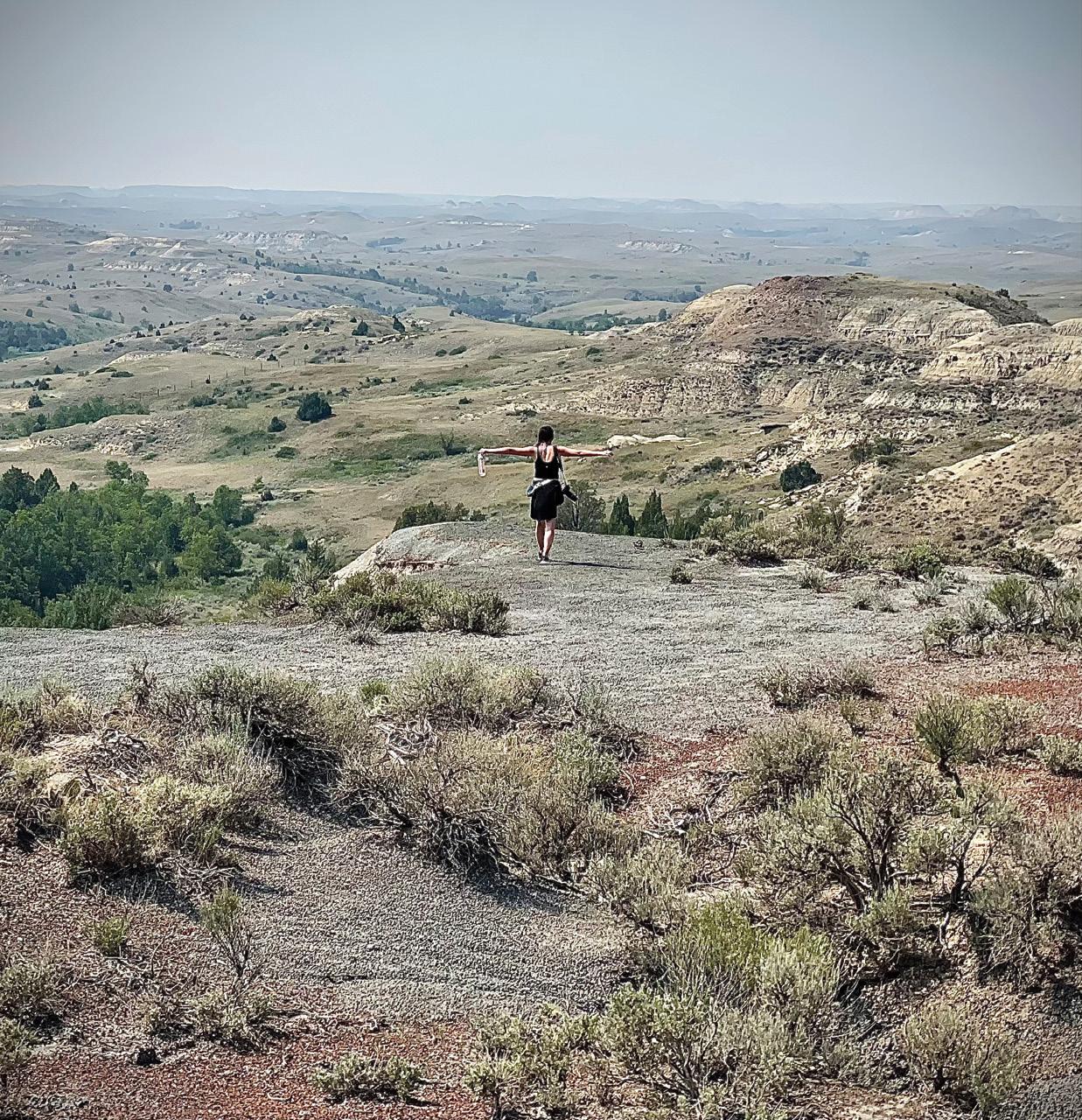
@wander.onwheels
“To never stop learning, to see the world, and to continue to challenge ourselves.”
RV TODAY | 13
escape the feeling of being stuck in oneplace—endless opportunities and paths to take!”
The World’s Only Permanent Jack Pad




Even Dedicated Wanderers Need Some Stability
Leveling Your RV Has Never Been Easier



RV SnapPads attach permanently to your RV jacks or stabilizers, so you don’t have to carry around blocks to level your RV or Motorhome.



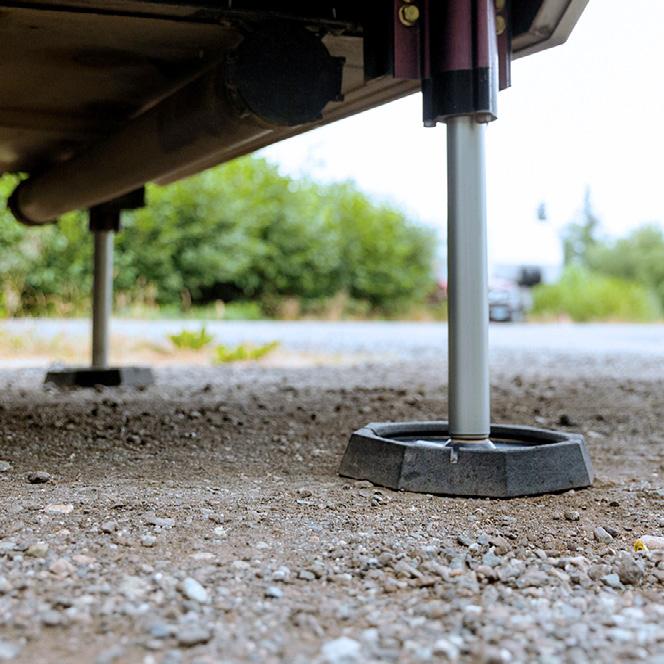
Permanently Attached Advanced Protection Highly Durable Anti-Slip Rubber
Coast TO Coast
PLANNING A CROSS-COUNTRY ROAD TRIP
By Alexis Nascimento
Planning an epic road trip is one of the best ways to see the country. Not only does a voyage of this nature offer complete freedom and flexibility, but you’ll also discover the best gems in your own backyard! Planning your first car-camping road trip can be a bit intimidating, so we spoke with three families to get their favorite tips and hacks for planning a memorable coast-to-coast journey.


MEET YOUR PLANNING GUIDES
Chelsea Gillespie, @unsettledown
Travel Style: 2020 Toyota 4Runner with a 2021 Intech Luna Rover teardrop trailer
Experience: 30 months of full-time nomadic travels, including 20 European countries and 25 states, as well as RV camping
Lydia Blanchard, @myadventuregang
Travel Style: Subaru Outback with a rooftop tent
Experience: 80 nights rooftop tent camping in 1.5 years
Pamela Colon, @miamivanfam
Travel Style: Self-converted RAM Promaster 3500
Experience: Planned two major cross-country trips for five months total

RV TODAY | 15
DETERMINE HOW MUCH TIME YOU HAVE
Chelsea: When planning trip, we schedule backward from the most desirable destination on our selected dates. If it’s a busy destination during peak season, like Glacier National Park in the summer or fall foliage on the Blue Ridge Parkway, we plan to leave lots of flextime before and after the target travel window. With young kids, we always add 30% more travel time and limit our longest days to about six hours of driving. We tend to slow travel and try to enjoy the journey just as much as the destination.
Pamela: For us, flexibility is key, and it’s why this works for our family. We keep an ongoing list of places we want to see so we can plan accordingly when we are free to travel for weekends or longer holiday breaks. We consider the length of time we have and the distances between destinations in order to plan an enjoyable and realistic trip. We’ve moved away from pre-booking campsites in favor of boondocking. This gives us the flexibility to leave a day earlier or stay a day later if our schedules allow it without having to be committed to a campsite or reservation
IDENTIFY YOUR BUDGET
Lydia: The way we travel means our road trips are inherently pretty budget-friendly. We like to camp in our rooftop tent at free spots, like national forests or Bureau of Land Management land. If we stay at a campground, we typically choose state parks, national parks, or national forest campgrounds, which usually cost between $14 and $30 per night. Our America the Beautiful pass covers entry fees at national parks and monuments, and we focus on free activities, like hiking. We cook almost all our own food and stock up on snacks at grocery stores instead of gas stations, so our food budget is almost identical to what it is when we’re home. Gas is always our largest line item. The more slowly we travel, the less we spend on gas, and the more time we can spend on the road. All in, I budget about $75 a day for our road trips.


MAP OUT YOUR ROUTE
Chelsea: We choose our destinations based on availability and level of adventure, the weather during the time of year, and the crowds of the high season. We avoid peak season to save money on accommodations and encounter fewer tourists. We love highly rewarding destinations that offer a variety of attractions for differing age levels. Food options are a plus, but the nice part about RV travel is we can cook too. This saves us a ton of money!
Lydia: I have more than 1,000 places of interest pinned in my Google Maps in the United States alone, so there are no bad choices. I find most of my inspiration on Instagram, and then look to blogs and Pinterest while planning once I have a better idea of our route. I look at how far from home we can make it given our time and how many incredible places we can string together.
Pamela: We are so grateful to those who’ve come before us! Seriously, there is so much information out there from other travelers that there is never a shortage of places to choose from. This year we chose based on the region and our route back to Florida. We were able to include bucket-list destinations like Sedona and Utah, and weave in some U.S. history with our visit to Washington, D.C., to complement our oldest daughter’s school curriculum. We like to visit places the kids are learning about at school to bring a bit of what they see in the books to life.
LEVERAGE EXISTING TRAVEL RESOURCES
Lydia: Bookmarking every hike, state park, dispersed campsite, and fishing hole that looks intriguing when I come across it makes the research phase of trip planning relatively easy. I like using a spreadsheet to plan each day, with columns for where we will drive, our hikes or points of interest, our first choice and alternate
Lydia and family
campsites, and backup plans. This makes it easy to share our plans with family members. My community on Instagram is a wealth of information and I always ask for must-visit spots in an area before we head there.

Chelsea: We are digital natives and digital nomads, so we rely heavily on the people who have been there before. We don’t want to reinvent the wheel, but we do like to head off the beaten path. Our favorite resources for boondocking and RV reservations are iOverlander, Campspot, Harvest Hosts, The Dyrt, Boondockers Welcome, the NPS, BLM sites/apps, and the U.S. Forest Service website. For gas, we use GasBuddy and Google Maps. For in-destination planning, we use AllTrails, Google Maps, Tripadvisor, and other review sites.
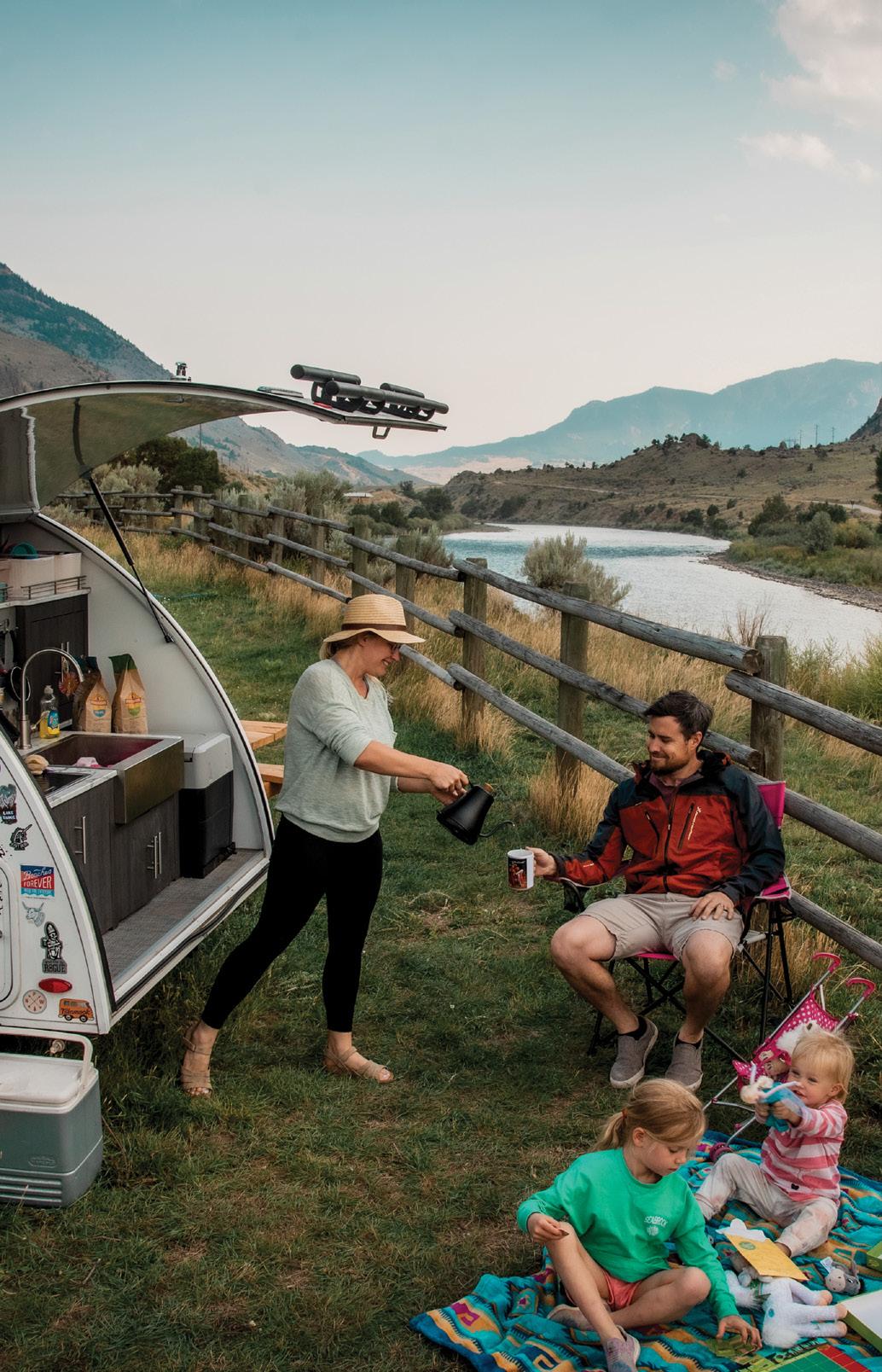
TRY WINGING IT
Pamela: We always have the van packed so we can leave on a whim and not feel overwhelmed by the planning part. If we have our basic needs—clothes, a full tank of gas, and water—we can leave without stress or hassle. This has been a game changer for us as it means we have nothing holding us back.
Chelsea: Sometimes the best thing to do is let the destination come to you. Just go and immerse yourself and plan a day or so extra to see what comes up.
Sometimes reviews online are biased, slanted toward high-traffic areas, or only bucket-list items, but the world is full of amazing things in every corner. Be like a stream and follow the path of least resistance once you arrive at your destination. Plan for the best, expect the worst, and roll with the journey.
STAY FLEXIBLE!
Chelsea: Building flexibility into your schedule can help avoid stress, which is the biggest killer of fun. Say you’re visiting Glacier National Park. One day it could rain, and another day it could be windy. If you want two days of perfect hiking and sightseeing, plan for four days in case something goes awry! That way, you can live in the moment and make memories without worrying about everything being perfect. Slow down, soak in the destination, and revel in the hard work and journey that brought you there. Your greatest asset as a family is time. Use it wisely.
Lydia: I tend to map out absolutely everything I can, plan a few backup hikes and campsites for each day, and view my itinerary as a loose framework. We love boondocking and avoiding places that need reservations, so we don’t have to follow our itinerary to the letter if we don’t feel like it. Flexibility is especially important when adventuring with kids. You never know when you’ll need to scrap all your plans and throw rocks into the water for four hours to preserve everyone’s sanity!
Pamela: A sweet spot for us has been two to three days for most locations, which gives us enough time to visit any national parks and must-see landmarks, try local , and feel neither rushed nor stuck. Sometimes we put so much pressure on ourselves to see everything, plan every little detail, and make everyone happy that we miss the opportunity to enjoy it. There is no right or wrong to RV! Don’t feel like you have to a certain mold to create whatever your travel experience looks like. For instance, before converting our van, we didn’t consider ourselves outdoorsy people who would go camping or hiking, and now we’re loving the opportunity to experience these places for the first time as a family! ■
RV TODAY | 17
Pamela and family
HOW DO YOU GET OUT One More Weekend?




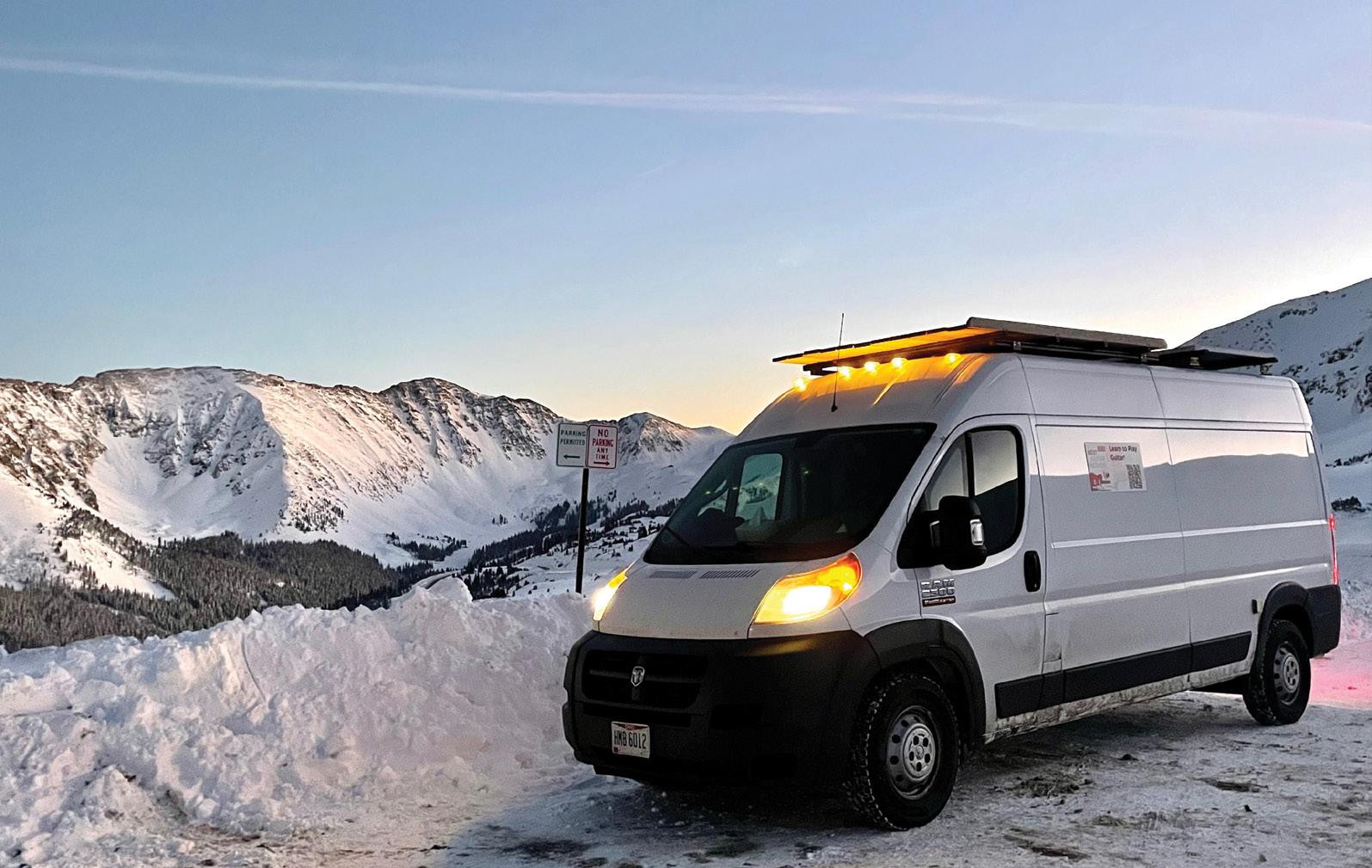





TRAVEL SMART

THE ONLY 100% AUTOMATIC SHUT-OFF SAFETY DEVICE FOR YOUR PROPANE SYSTEM.


PURCHASE TODAY | GASSTOPUSA.COM
Traveling THE Outback
OUR GREAT AUSTRALIAN CIRCUIT
By Tedy Pham
We love traveling, from small road trips to grand adventures, but a lap around Australia is something we never had in mind. We live in Australia, and I wanted to take our third girl, Evie, to New Zealand to enjoy her first autumn as a baby. We had an entire trip booked and paid for, but it was canceled due to travel restrictions.
During the COVID-19 lockdown, I missed New Zealand so much I started searching YouTube for videos about road trips around the country. Then YouTube started recommending other road trip videos, which promptly led me down a rabbit hole to videos about people road tripping laps of Australia. It was intriguing, and I started dreaming about it right then and there.
One night I said to my husband, Justin, “Since we already want to go on road trips in Western Australia and Northern Territory, instead of going for a few months, why not make it a big lap?” Justin liked the idea, but was hesitant, mainly because we have three children—a baby, a 2-year-old, and an 11-yearold. I explained I had seen many families on YouTube making the trip with babies and young children. If they could do it, we could too.

Just like that, we had decided, and the idea of traveling around Australia was stuck in our heads. There was such an allure to going somewhere and then just continuing on, without returning home. Visiting new and different places excited us, and we knew we just had to do it. We watched many more videos on YouTube to get ideas about life on the road and what it’s like living in a caravan with kids. It definitely didn’t look easy, but it seemed doable.

RV TODAY | 21
Because we enjoy our creature comforts, we can’t do road trips in a tent for a long time—I really prefer the convenience of a toilet. A pop-top caravan is not ideal for us either because of the amount of time it takes to set up for each stay.
Justin did a lot of research to figure out our perfect rig for the trip. We refinanced our home, and we bought a Nissan Patrol Y62 on Christmas Eve. The next step was to shop for a caravan. After visiting two dealers, we decided on the New Age Adventurer 21 foot. It may seem like we didn’t shop around much— and that’s because we didn’t!
With the current popularity of campervans, it has been hard to find availability. New Age Caravans had half the waiting period of competitors, some of which were up to a year long because of the high demand. We put down a deposit and picked up our brand new caravan six months later
We worked hard to save money for a year-long trip, but it wasn’t quite enough, so Justin is working part time while we travel. We consider ourselves lucky to be in this position. His company understands his situation and gave him the flexibility to work part time on the road.

Initially, we were delayed due to regional lockdowns in Australia. We picked up our caravan and it sat parked in front of our house collecting dust.

Finally, NSW opened up to travelers. Wasting no time, we started our big lap around Australia at the end of October 2021. We cruised around northern NSW, waiting for the borders to open. Originally, we planned to travel around the outback of NSW first, then visit South Australia and the Northern Territory via the Oodnadatta track, but that would have put us there in the summer, when it would be much too hot for us. Instead, we decided to go to Tasmania next, and we booked our ferry tickets immediately when we found out Tasmania was opening. We had been there a few times already, and this time we were back with a caravan to explore all of it.
Generally during this trip, we are traveling at our own pace with nothing planned ahead. We are newbies when it comes to caravan life and towing a caravan. We initially struggled badly with parking the caravan in narrow spaces, but we’ve been improving with time.


We are lucky that our little ones are easy on the road. They haven’t complained about why we keep going to different places—perhaps they’re still too young to understand! They enjoy the car rides and don’t make a big fuss when they can’t watch YouTube or play games on the iPad. In fact, they mostly just fall asleep. Right now we are enjoying cruising around on our big lap. Going to different places and experiencing caravan life with our kids has literally been a dream come true. ■
Follow Tedy Pham on Instagram @ouradventerousdays

22 | RVTODAY.COM


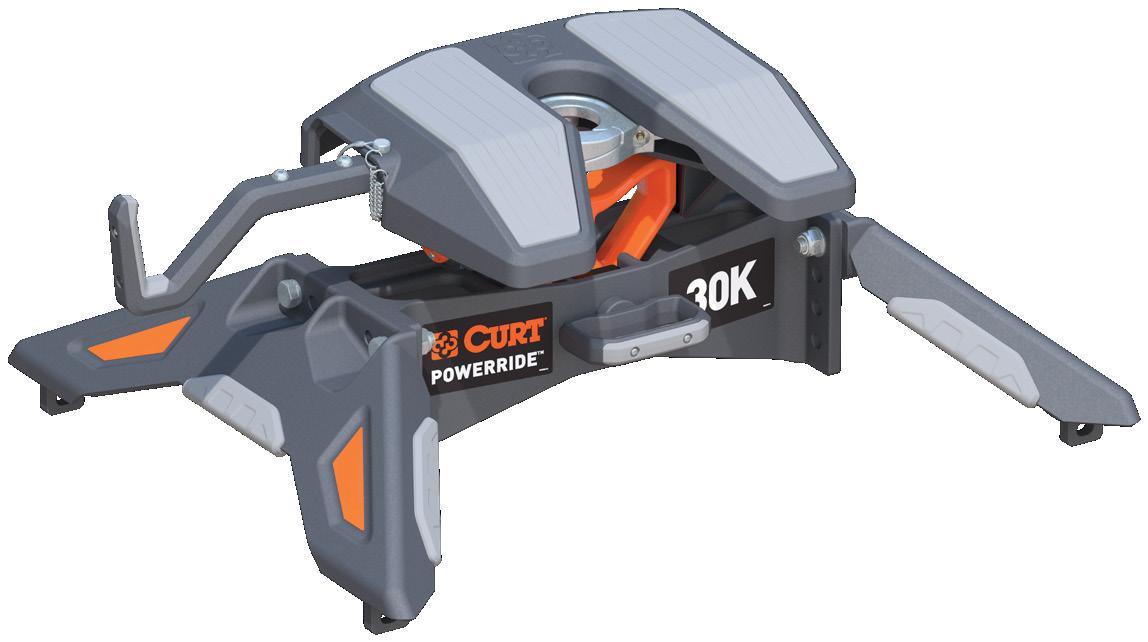

PLANET EARTH TRAVELS
1.6 MILLION MILES EVERY DAY.
ENJOY THE RIDE.
4 of North America’s Top 10 Fifth Wheel RV brands are manufactured by Keystone. (And our newest just won RV of the Year.)
 Luxury fifth wheel RVs that deliver more value, performance and delight. Now equipped with SolarFlex™. Meet Montana, Alpine & Avalanche, Cougar, Sprinter and Arcadia at KeystoneRV.com/fifthwheel.
Luxury fifth wheel RVs that deliver more value, performance and delight. Now equipped with SolarFlex™. Meet Montana, Alpine & Avalanche, Cougar, Sprinter and Arcadia at KeystoneRV.com/fifthwheel.
Making
Our RV a HOME
WHY WE RENOVATED A BRAND NEW RV


 By Robin Goudeau-Baxter
By Robin Goudeau-Baxter


26 | RVTODAY.COM
My husband, Warren, and I have been RVing full time since 2017, and we love this lifestyle of traveling and experiencing new adventures. We had owned tents, travel trailers, and a Class A before, but never a fifth wheel.
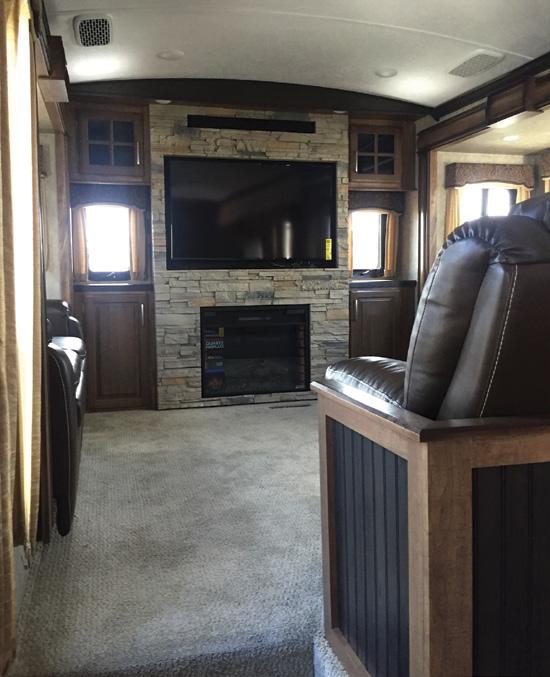
When we began our journey to find the perfect rig, we were amazed by fifth wheels and how many different floor plans they offer—the possibilities were endless! We were downsizing from a large home to about 400 square feet, so we really needed our new space to feel like home.

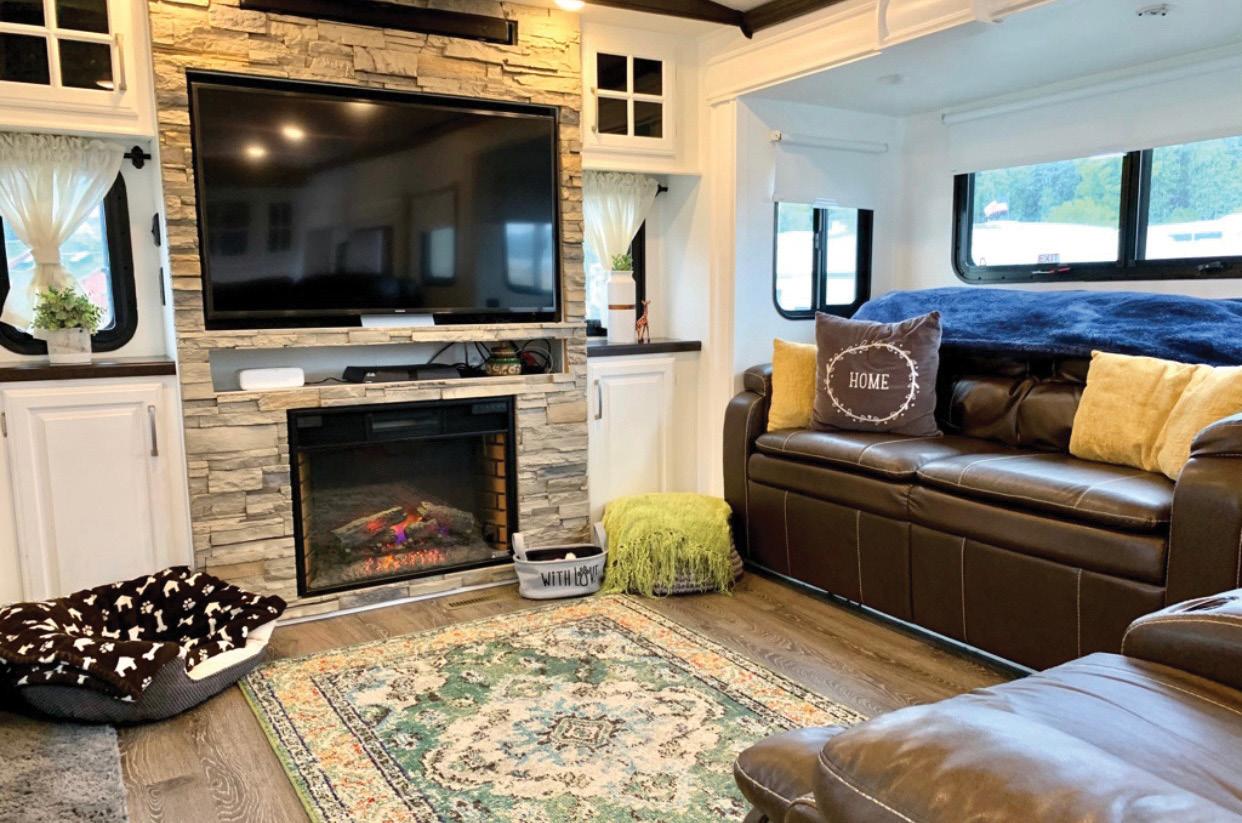
We initially bought and renovated a Keystone Montana 3790RD, and learned a lot in that process, but we eventually needed something bigger as our family started visiting and staying with us. We shopped for different options, and we kept coming back to the 2020 Keystone Fuzion 427, a toy hauler. The Fuzion provided an extra half bath, private sleeping area, ample living space, and storage in the main living area. With my real estate background and my passion for decorating, I was ready to get to work.
We laugh because even though we’ve been married for 37 years, we had very different visions. Warren is all about sports, TVs, man space, and functionality, where I’m all about glamping, office and craft space, and ripping things out. After finally
agreeing on the Fuzion 427, we needed to make some decisions.

The toy hauler met all our basic requirements, but like most toy haulers, it felt very temporary, industrial, and dark inside. The color scheme also wasn’t to our liking—the walls and cabinets were a cool gray and the floor was a warm brown with white streaks. To keep a happy wife, the option was either replace the floor or paint the walls white. Warren put his foot down on replacing the flooring, so we enlisted our family and had a painting party.
After painting the walls white, we both fell in love with the flooring. Changing the wall color brightened up the space. With natural light through the windows and from the open patio area, it was beginning to feel like a home. Plus, since we were already doing renovations, it was easy to make more changes.
As we began to look for elements like a desk and storage cabinets, I had the brilliant idea to use the toy-hauler space for a She Shed. Don’t worry about Warren—he has three other TV options and likes to hang outside. Slowly but surely, I created my She Shed that was light and airy with feminine touches. We added a small desk, two lightweight cabinets for storage, and a small futon to provide extra sleeping space for guests. Decorating the bathroom was

fairly easy—we added a picture, a rug, and towels.

Then came the patio area—by adding lightweight patio furniture, an area rug, plants, and a few other items, we created what we call “The Porch.” We love reading and having our morning coffee on the porch, as well as hanging out there with friends and family in the evening. Our motto is, “The Porch is Always Open.”
We are often asked, “Why did you purchase a new rig and then renovate it?” We feel we enhanced what was already there. We started with the basic structure we wanted, but just like purchasing a home, you always make it yours. It doesn’t have to take a lot of work or be expensive—just do whatever makes you feel at home. It’s amazing how far trailers and RVs have come with so many “sticks and bricks” amenities.
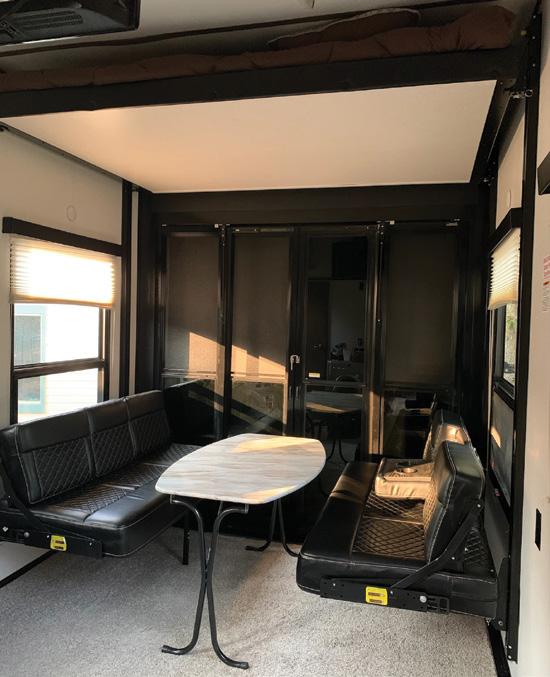

Inspiration is endless with social media, but Instagram is our go-to. We take inspiration from home renovation bloggers and downsize it to fit our rig. We love Trina and Steve @rvfixerupper because their work is amazing!


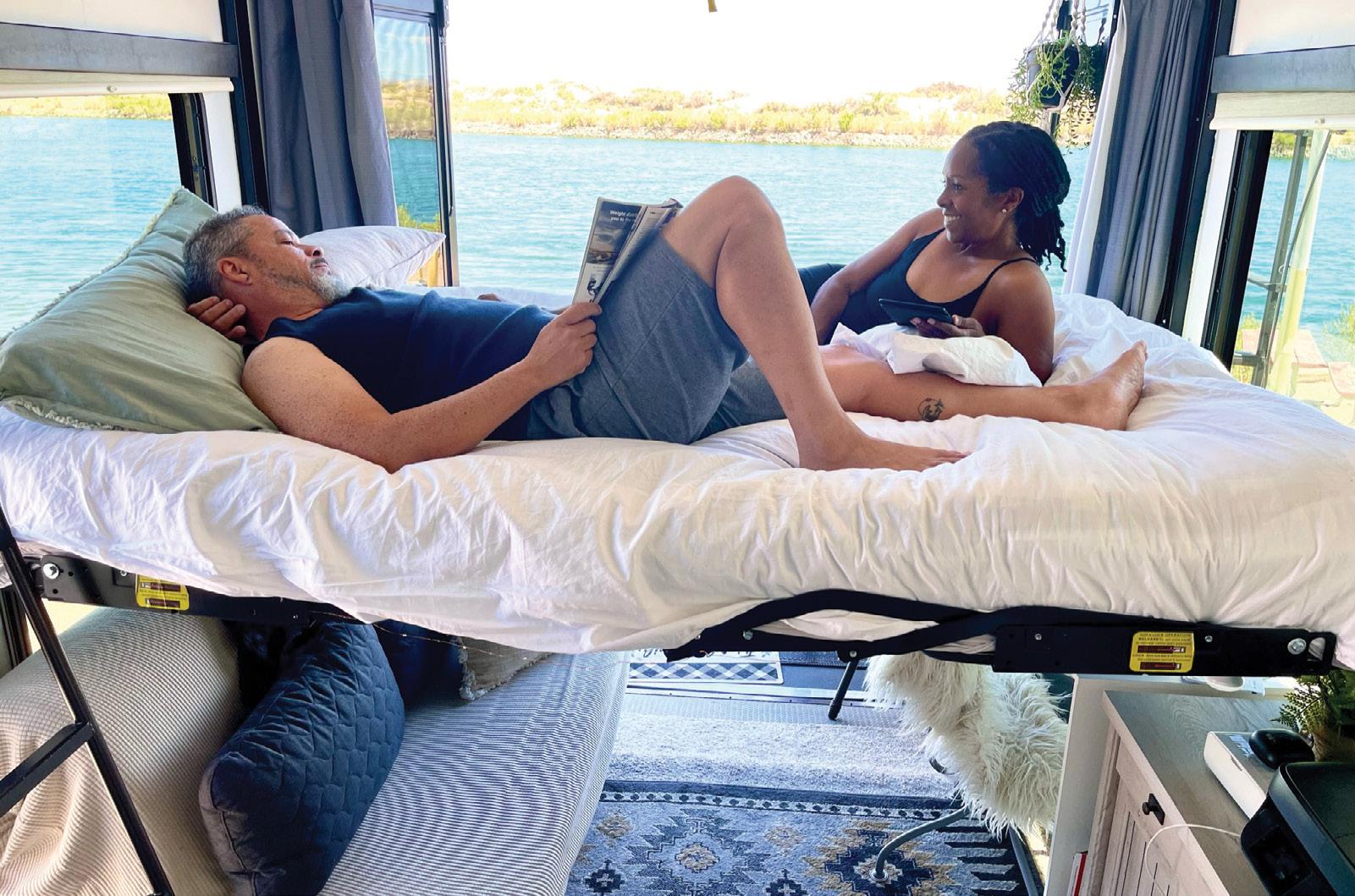

Warren and I have the same love for light, airy, spaces that are pretty yet functional with modern country flair, and starting with a neutral color palette that can be transformed with the seasons. One of the beauties of living in about 450 square feet is that you can change your color scheme or tweak just a few things to create a mini makeover. One of our dreams when we settle down is to flip RVs and share with others what we have learned. Decorating has always been a passion of ours, so it feels good when you walk into your tiny RV home and it feels welcoming. ■
Follow Robin on Instagram @parents_unleashed
28 | RVTODAY.COM
E - Bikes
Are Electric Bikes

The Nex t Hot Tech Toy for RVers?
By Peggy Dent
An electric bike (e-bike) is really just a traditional bicycle with a battery-powered motor that assists the rider with propulsion. There are two types of e-bikes—pedal assist and throttle. Pedal assist e-bikes augment the rider’s pedaling effort. In many models, the amount of extra propulsion added to the rider’s effort is adjustable and can be preset by the rider, so the cyclist still gets some exercise when riding. With the throttle variety, a simple push of a button or turn of the handlebar creates forward motion without the rider applying any pressure to the pedals. The throttle variety more closely resembles a moped or motorcycle than a bicycle, since the rider doesn’t add any effort to create forward motion.
Allison & Nick Bracken @rollingwithophelia
Different Styles of E-bikes
There are several distinct styles of e-bikes. Some look more like a 10-speed touring bike, some look like heavy-duty mountain bikes, and some have been adapted to carry a variety of loads (from an extra person to an extra 500 pounds of inert cargo). The cargo carrier e-bikes have an extended frame and low center of gravity. Some e-bikes have foldable handlebars or are fully foldable so the bike can be carried or stored flat.
Specs to Consider
Just because an e-bike can be folded into a less awkward shape doesn’t mean carrying it will be easy—weights range from 20 to 90 pounds. The power level of an e-bike is expressed in watts, and the typical wattage options are 250, 500, 750, or 1,000. This sounds like a definitive description, but there’s a great deal of ambiguity around how watts are calculated, and a lack of standardization for measurements makes the wattage designations less meaningful.
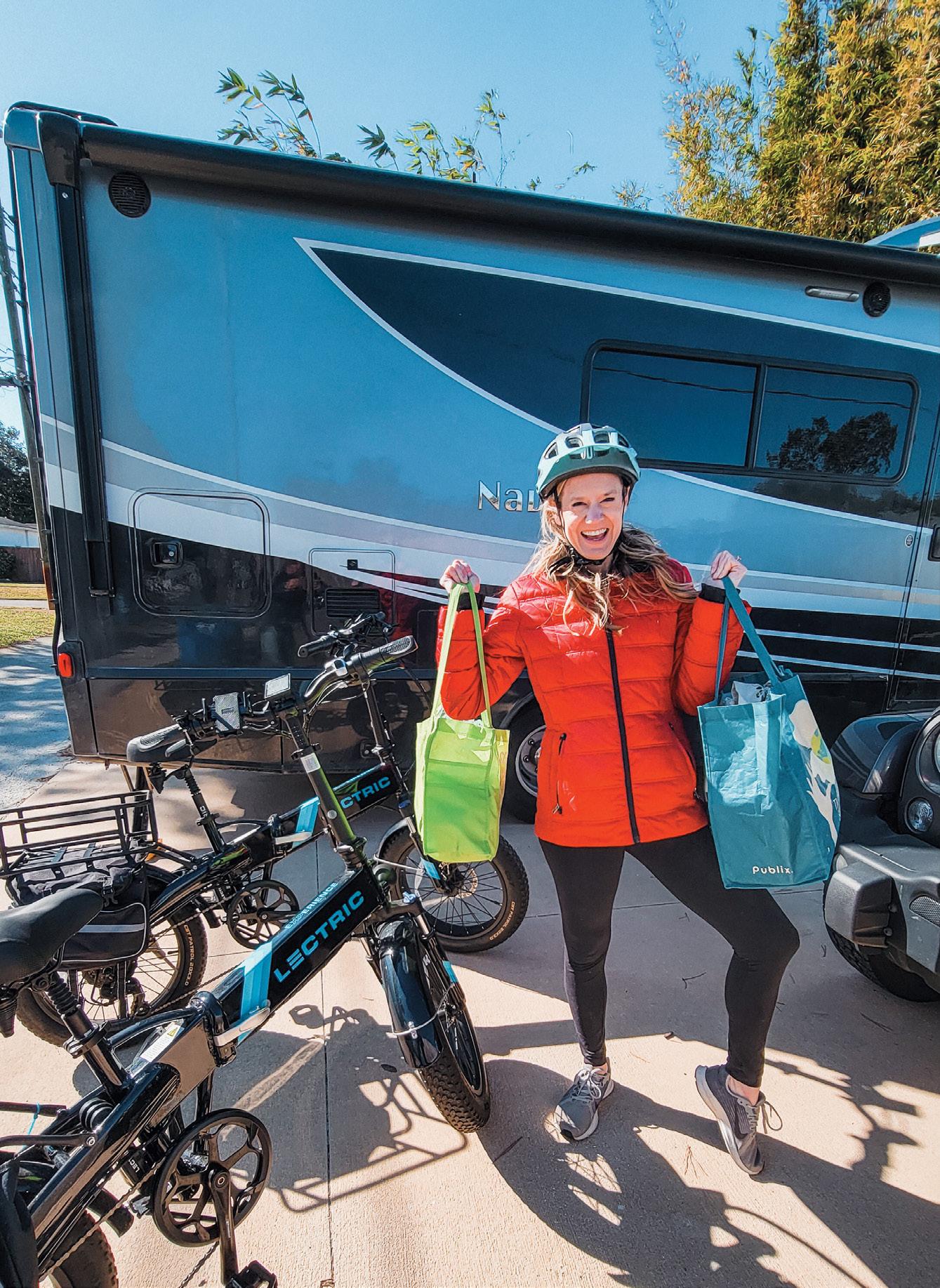
Watts are also directly linked to more meaningful attributes of e-bikes, like maximum speed, the distance it can travel, and the hours of operation before the battery needs to be recharged. Higher watts generally equal faster speeds and longer distances, but there are also other variables. So while the sales literature will describe a maximum distance—say, 40 or 50 miles—you should read that as a rough estimate. A heavier rider, extra cargo, and/ or steep terrain will translate to less battery life.
E-Bike Pricing
The range of prices for e-bikes is quite broad when you consider there are only two basic types and three general styles. Prices start around $500, and the most expensive e-bikes can be more than $6,000. Reviews tend to indicate e-bikes priced below $1,000 to $1,500 aren’t really a bargain, as you’re getting what you pay for. That’s not to say your satisfaction with a $6,000 e-bike will be three times greater than your satisfaction with a $2,000 e-bike! But buying one at the bottom price point will probably lead to problems down the road—pun intended.
Things to Consider
E-bikes are sold with a published distance range from 25 to 50 miles, but read reviews from people who own the particular e-bike you’re interested in purchasing to see what they have to say about their actual distance experience. Just like with cars and miles per gallon, the range listed in the sales materials for e-bikes is a performance standard that is hard to replicate in real life. Additionally, you should consider the weight of each model. A 90-pound bike might feel sturdier, but extra weight will add to the overall load on the battery and motor and ultimately impact the e-bike’s speed and distance. On the other hand, if you plan to ride your e-bike through rough off-road terrain, you might need the heavier mountain-bike style to safely ride in that environment. Consider where you will stow your e-bike in/on your RV, truck, or tow vehicle. Removable batteries may be a critical feature if you intend to ride for long periods of time. Taking extra batteries with you on a long ride can keep you from having to stop at a charging station. Additionally, consider safety features like headlamps, taillights, or a horn. Some models come pre-equipped with these features, and some models allow them to be added later. Some e-bikes come with convenience accessories like a cargo rack and fenders. Another feature you might want to consider is the number of gears. Some models only have one fixed gear, while others have as many as twelve. Extra gears can be important for different types of riding conditions and terrain and make the e-bike more versatile.
Katelyn Newstate @newstatenomads
In addition to the unique features listed above, there are a few finer technical points that can affect your enjoyment. Several reviewers remarked on the following technical features of e-bikes:


☐ ease of assembly
☐ location of the battery pack
☐ position of the motor relative to pedals or gears
☐ comfort of the seat and suspension
☐ ability to adjust the level of power assistance
☐ readability of the control panel
☐ ease of shifting
☐ how securely a connected smart phone mounting bracket holds the phone in place
An Alternative Mode of Transportation
These new bicycles offer RVers a unique alternative mode of transportation. Many RVers like to travel with a golf cart, but golf carts are heavy and require a trailer, so they’re not an option for everyone. E-bikes are portable, affordable, and fun, making them the probable next hot tech toy for RVers. ■
 Samantha Gardiner @toasteronwheels
Samantha Gardiner @toasteronwheels
RV TODAY | 31
Patty Gill @gills_on_wheels
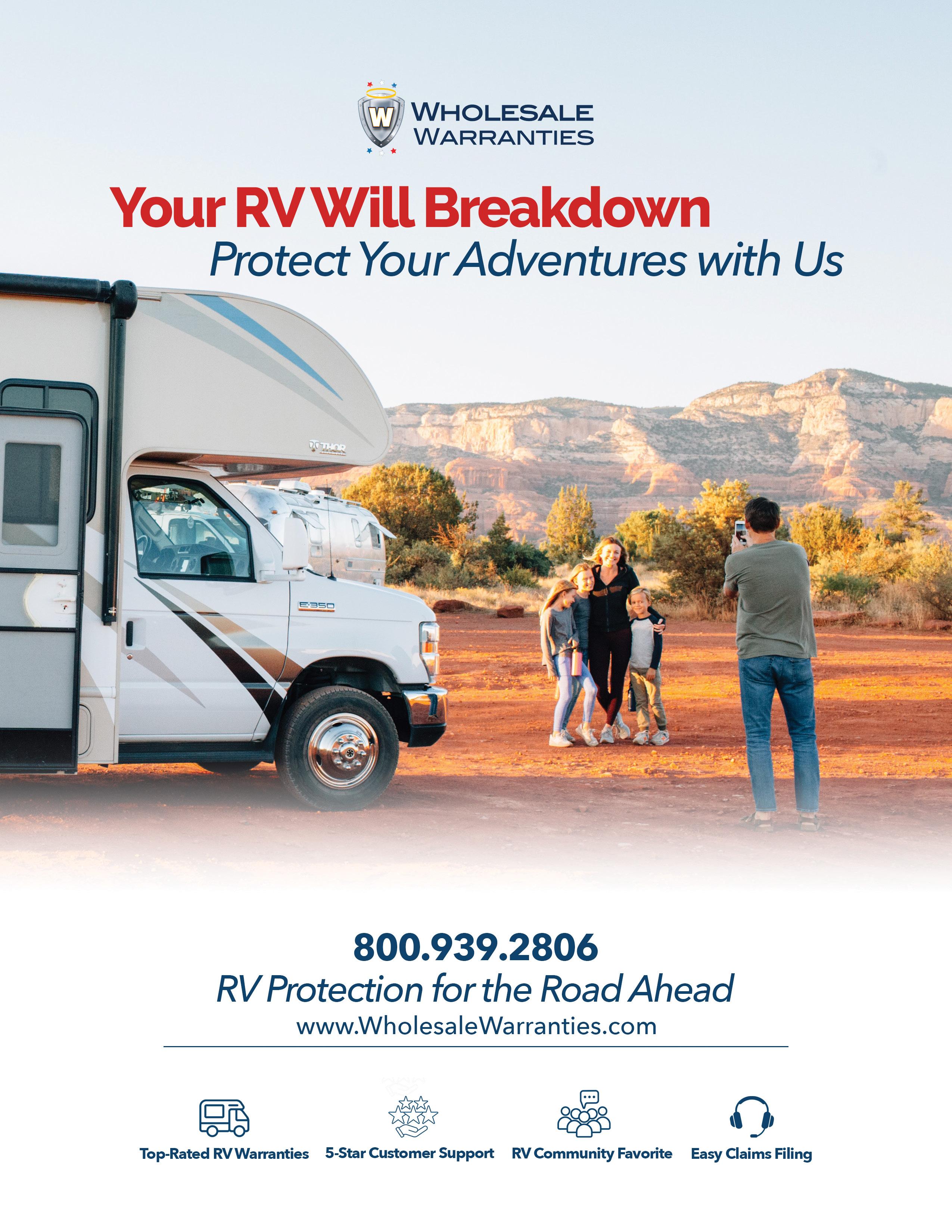 By Larry McDonald
By Larry McDonald
Buying your first RV can be a daunting task, as we all have different needs and there’s a seemingly endless variety of vehicles available. As a journalist from Canada who has been full time for 14 years with my wife, Sandy, I have several tips to share that will simplify the decision-making process for new buyers.
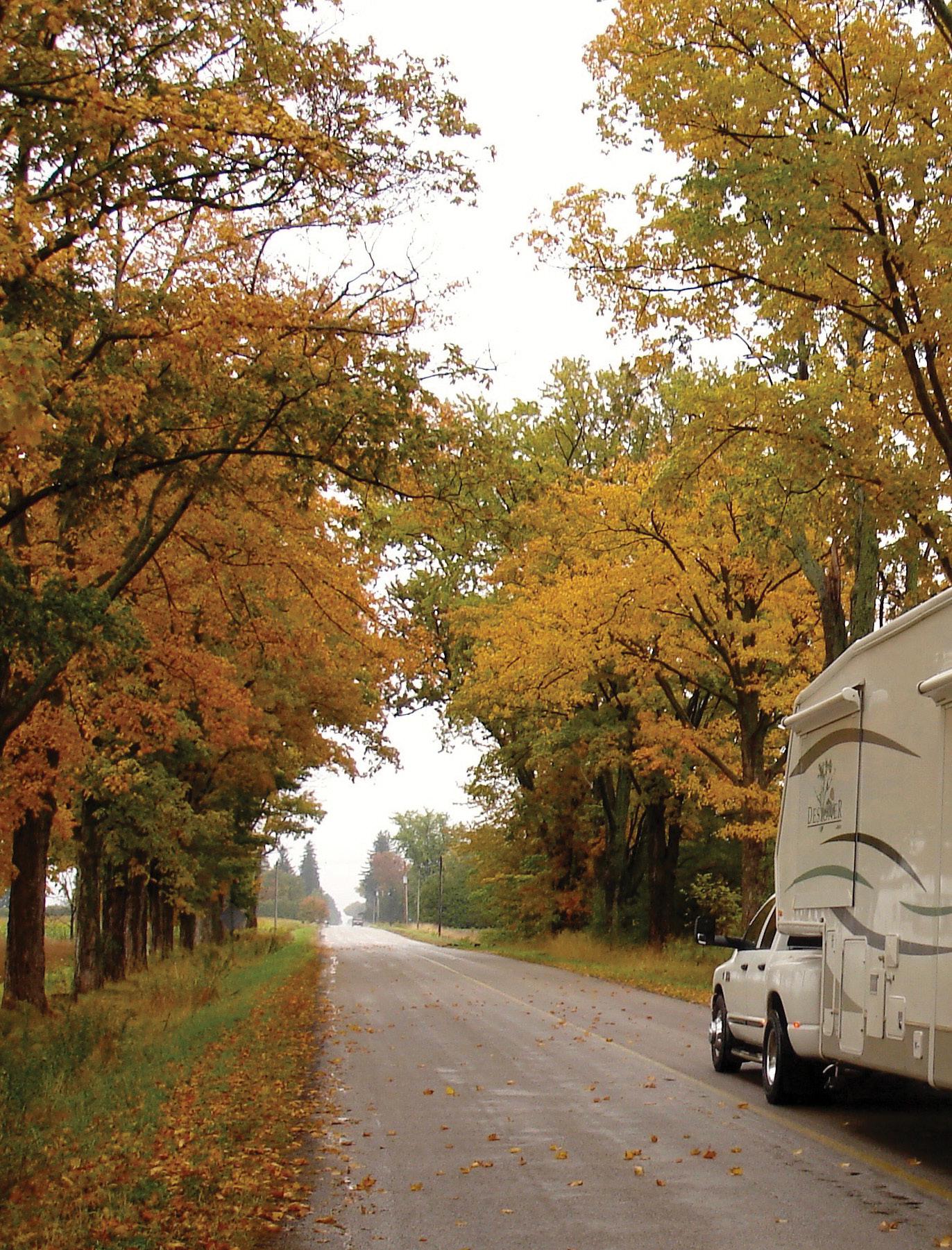
RV TODAY | 33
DECIDE ON THE INTENDED USE OF YOUR RV. Do you want to live in it full time, or do you want to hit the road occasionally for weekend adventures? Full-timers will usually require a larger rig with more amenities than people who want to camp occasionally, and a family of four will require more space than a solo traveler.

CHOOSE THE TYPE OF RV THAT MEETS YOUR NEEDS. Spend some time researching the various types of RVs. There are lots of differences between Class A, Class B, Class C, truck campers, fifth wheels, and trailers, with lengths that can range from 12 to 45 feet. Regardless of your preference, one deciding factor is cost. Newer luxurious Class As can cost $300,000 or more, fifth wheels can be less than half of that, and small trailers can be had for less than $15,000.
NEW OR USED? If finances allow, you might think buying new would be the obvious choice, but even new RVs can come with issues. Warranties may cover repairs, but repeated visits to a dealership take the fun out of camping! Also, the price of a new RV typically depreciates 10% to 20% per year in the first few years. This can be a good argument for buying a used rig—if you find one that’s only a few years old, the seller may have had plenty of warranty-covered work taken care of already.
RENT BEFORE BUYING. Various companies provide rental RVs, both drivable and towable. Of course, if you rent a towable, you’ll also need an

appropriate truck or SUV. Determine how long you’ll want to spend in the RV in order to become familiar with it, and then plan a trip. Research campgrounds and routes, and if you’re taking pets, make sure the unit is pet friendly.
Ask the rental service to show you how to hook up the electric, water, and sewer lines, which you’ll likely use at full-service campgrounds. Read the RV manual for information about the various systems electrical, hydraulic, water, holding tanks, heating, air conditioning, and propane. During your trip, keep notes of what you like and don’t like about the RV so you can decide if it’s the one for you. You can always rent a different model before you buy!
DETERMINE FAIR MARKET VALUE. If you decide to purchase a used RV, spend some time researching on sites like RV Trader, Craigslist, and Facebook to establish a fair price. You’ll notice a wide range of asking prices based on how well the rig was maintained and how motivated the seller is to close the deal. Prices are typically lower in the fall months, when camping season comes to a close, as well as in southern states, which have a larger number of RVs.
HAVE THE VEHICLE INSPECTED. As a newbie RVer, especially if you’re buying used, have the vehicle inspected by a qualified technician. They will report any issues they find, which can help you determine whether you even want to purchase it. If you feel technically competent and prefer to do your own inspection, consider using a checklist—there are many examples online—so you don’t miss anything important. For each maintenance issue, discuss who
will be responsible for the cost of repairs. If you’re going to need to fix things, don’t be afraid to ask for a considerably lower price.
NEGOTIATE WHEN MAKING AN OFFER. Once you decide on a particular RV, check nadaguides. com, which is like Kelley Blue Book for RVs, to see local market prices. Regardless of whether you’re buying privately or through a dealership, consider these negotiating tactics before you agree on a price. After your inspection, let the seller know you’re in no hurry to buy and need to think about it for a few days. That alone will spur some sellers to lower the price in order to close the deal. If you’re looking during the fall, suggesting that you might wait until next spring may result in a lower price, since the seller certainly doesn’t want to maintain the unit over the winter. Always offer 10% to 20% less than the asking price, even for a new unit, and especially for a new unit that is one year old. You’ll be surprised how often it’s accepted.
BE AWARE OF THE PAPERWORK INVOLVED IN A PURCHASE. Once a price is agreed upon, make sure the details are specified on an “Offer to Purchase” form, which is available online. This form will include all relevant information to ensure the transaction is legal and proper, with an appropriate back-out clause if conditions are not met as stipulated. Examine the title to determine whether there are any liens, which will have to be released before registration. A bill of sale is required in most states in order to transfer the title of the vehicle and show proof of ownership.
RELOCATE YOUR NEW RIG. Once you’ve made your purchase, you’ll need to get your RV to your home base. Drivers are available for hire, or you can do it yourself after making sure your insurance is valid for the rig in question. Some states require a special license for pulling a trailer over 10,000 pounds or driving a large RV with air brakes, both of which involve a written and driving exam. Your insurance is not valid without the license, which is sort of a catch-22 since the rig has to get to the DMV for the driving exam.
PLAN YOUR MAIDEN VOYAGE. Most people are very excited, and maybe a bit nervous, to begin their adventures in their new RV. Before doing so, I recommend spending a few days and nights in it somewhere close to home—maybe in your driveway or a nearby campground—in order to become familiar with living in a smaller space.
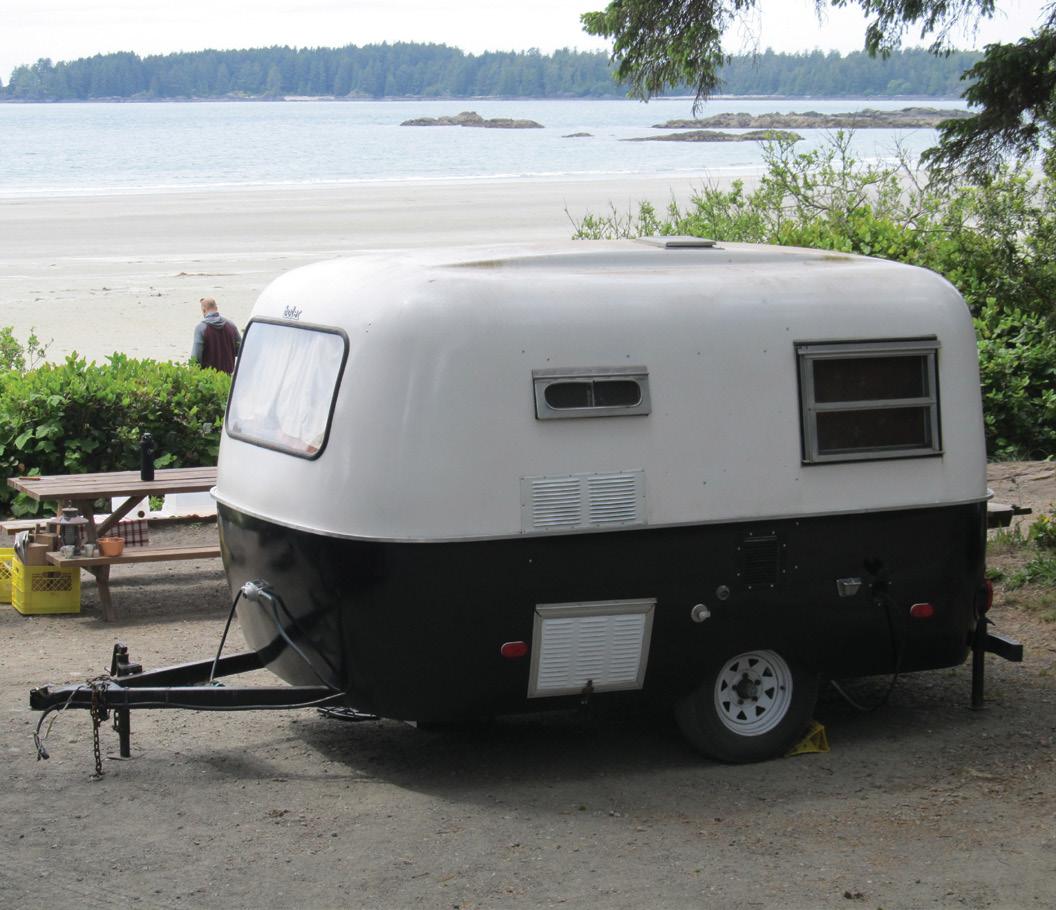
Take your time and enjoy the journey as well as the destination. Stay safe and make happy memories in your new RV! ■


RV TODAY | 35
Follow Larry McDonald online at landyachting.ca

Seasonal Camping versus Full-Time RV Travel
 By Danielle Isermann
By Danielle Isermann
There are pros and cons to living in an RV full time as opposed to camping seasonally, and ultimately, it all comes down to what fits you and your family best. Here are some of the things you’ll want to consider if you’re on the fence.
RV TODAY | 37
Seasonal Camping
PRO: CAMPING WITH THE COMFORTS OF HOME

Camping seasonally is great for beginners who are curious about the lifestyle. It requires less commitment than full-time RVing because it’s more of a vacation. It’s a great opportunity if you aren’t ready to make the leap to full time, because it allows you to camp while still having the comforts of your own home. Camping part time is also the best option for people with a steady job that can’t be done remotely.
PRO: LESS VEHICLE MAINTENANCE You won’t have to do as much maintenance on your rig since you won’t be using it as frequently as a full-timer would. RVs have a lot of components that last longer when being used intermittently than they do when they’re used nonstop. This is financially beneficial, as wear-and-tear maintenance can be costly.
PRO: EASIER TO PLAN Short trips are easier to plan because you only have the logistics of one destination to worry about. It can be overwhelming to keep planning week after week, but if you camp occasionally, the planning is an exciting stage of each trip! If you’re hoping to camp in popular locations, you may need to plan earlier as things tend to book up quickly.
CON: LIMITED TIME CAMPING If you really love camping, it may be frustrating to only get out on long weekends or for one two-week road trip per year. Sometimes it’s impossible to get out on a trip, or to go as often as you’d like, due to other obligations. As a seasonal camper, you have to really make it a priority to plan trips and actually go!
CON: CAMPGROUND CLOSURES Seasonal campers who live in northern climates don’t have the option to camp near home year-round due to winter weather and campground closures. This requires driving farther to warmer climates in order to find campgrounds that are open year-round.
CON: RV STORAGE Another factor to consider is storing the RV when it’s not being used on trips. Many neighborhoods don’t allow RV parking, which requires added RV storage facility costs, not to mention the inconvenience of transporting it to and from your home before and after camping trips for packing and unpacking.

The benefits and drawbacks of full-time RV living and seasonal camping really depend on individual circumstances. Several factors are at play, including finances, climate, and employment, and each has an effect on which style of travel you might enjoy more. It’s important to remember that whichever path you choose, both types of camping allow you to spend time making memories and enjoying the outdoors. It doesn’t really matter how you camp, as long as you’re spending time with your loved ones in places you love.


Full-Time RV Travel
PRO: WORK REMOTELY If you can work remotely or have a travel-friendly job, such as travel nursing, then living in your RV may be a great fit for your lifestyle. Remote work can be adapted to an RV office, especially if you can find good internet coverage. Moving around to different contract positions allows you to have your pick of locations.
PRO: ELIMINATE DEBT It may pay off financially to live in your RV full time, as you can incur less costs than you would in a traditional home. This is an approach many families take in order to become or stay debt free, because it eliminates their mortgage, property tax, homeowner’s insurance, and utilities.
PRO: FREEDOM TO EXPLORE Most families love the freedom full-time RVing gives them because it allows them to see the country and travel to a variety of places. You can change locations more frequently without too much planning, and you’ll never have to worry about packing your bags, because everything is already right there. RVing full time allows you the opportunity to connect with your family and make lifelong memories.
CON: EXPENSES ADD UP There are costs that come with living on the road. You’ll be paying for gas, campground fees, RV maintenance, entertainment, and food. Keep in mind that things can and will go wrong with your RV or vehicle, and they can be quite pricey to fix. Miscellaneous expenses can also add up quickly during travel.
CON: YOU’RE ALWAYS MOVING Some campgrounds impose limits on length of stay, so you may be forced to move after a certain period of time. This can get hectic, especially when trying to find your next place to go. You also may have to adapt quickly if severe weather is in the forecast.
CON: SMALL LIVING SPACE When you’re traveling full time, you’ll definitely have less space for living, and it can feel a little cramped inside if you run out of places to store your belongings. Most families adjust to the changes and still enjoy traveling full time, but it’s something to keep in mind if you have a lot of stuff. ■
RV TODAY | 39
A NEW JOURNEY BEGINS
Just like every great road trip, sometimes life takes you in a new direction. At Heartland, we’ve launched a new journey to make our RVs better than ever. We’ve doubled down on seeking out the highest quality materials, creating fresh and inviting interiors and giving every unit the kinds of finishing touches you’d find in a new home.
Every unit goes through a top-to-tails inspection with a quality assurance expert—in fact, we have an 89,000-square-foot facility dedicated to walking each RV through a series of checklists to ensure it works exactly as it should. And with updated floor plans incorporating features our customers love best—spacious bathrooms, designer kitchens, furniture meant for cuddling up together—we’re confident every trip in a Heartland will be a happy one.
After all, that’s what RVing is all about: hitting the road with people you love, having adventures, making memories. So when you buy a Heartland, just focus on taking the journey of a lifetime. We’ll take care of the rest.
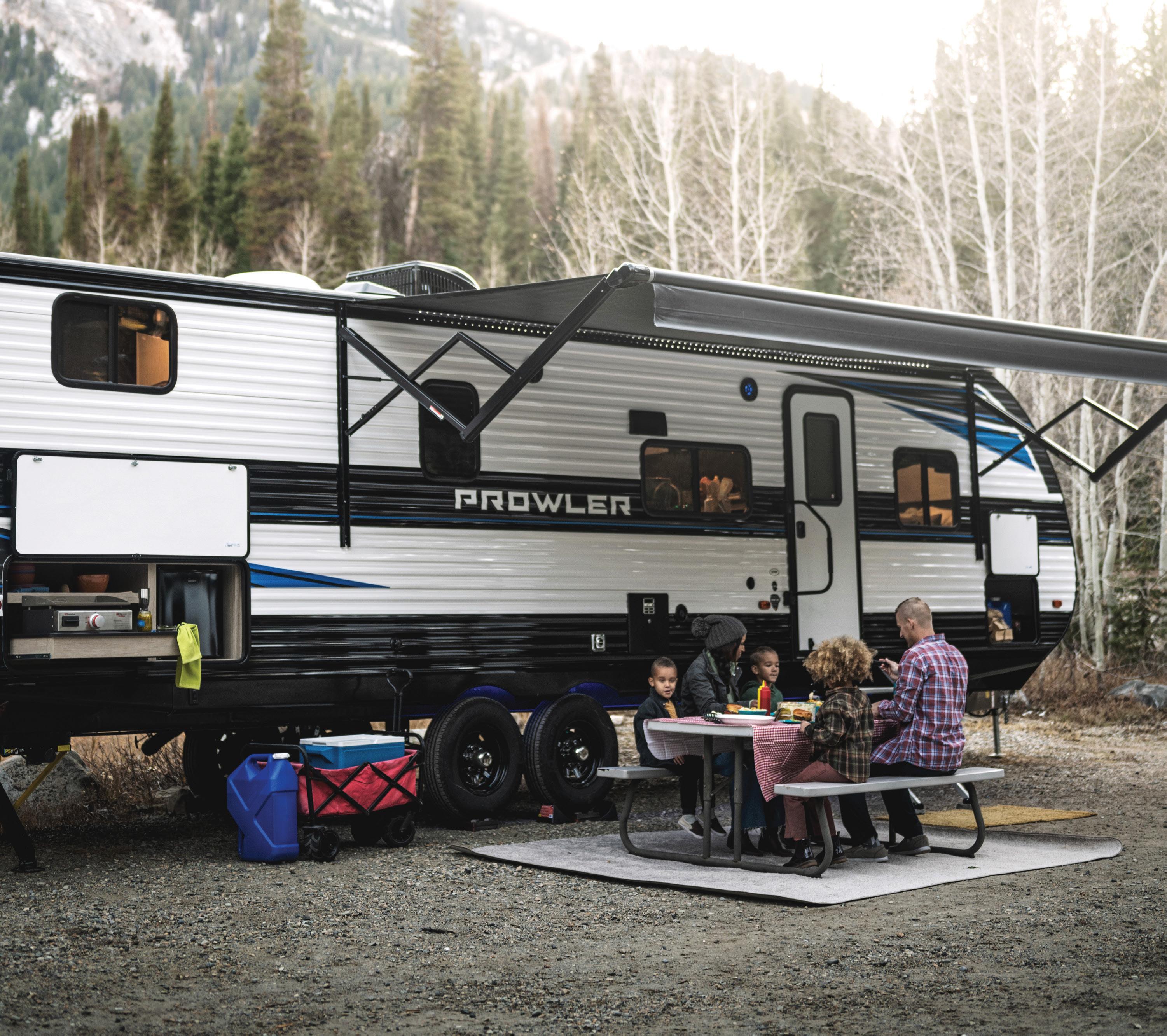

Experience the all-new Heartland online and check out 360-degree model tours, detailed floor plans, all-new features, galleries of updated decor and more.
Just visit HeartlandRVs.com.


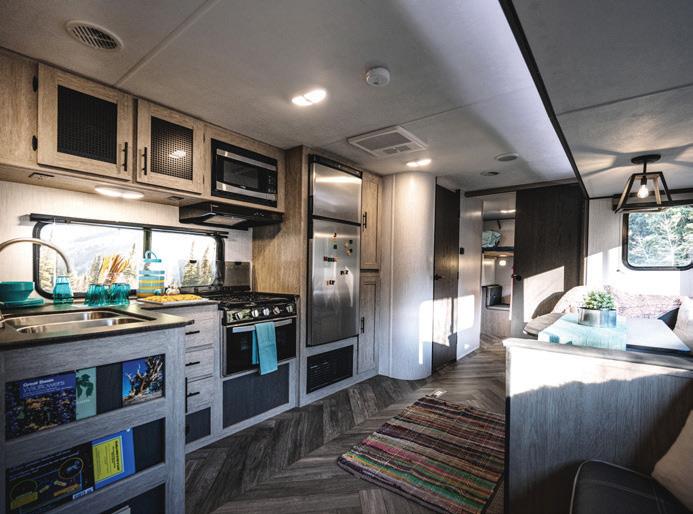


er Approved
























Planning a cross-country road trip or staying local? No matter where your RV travels take you, RV Today readers are sharing some of their favorite campgrounds from around the country.





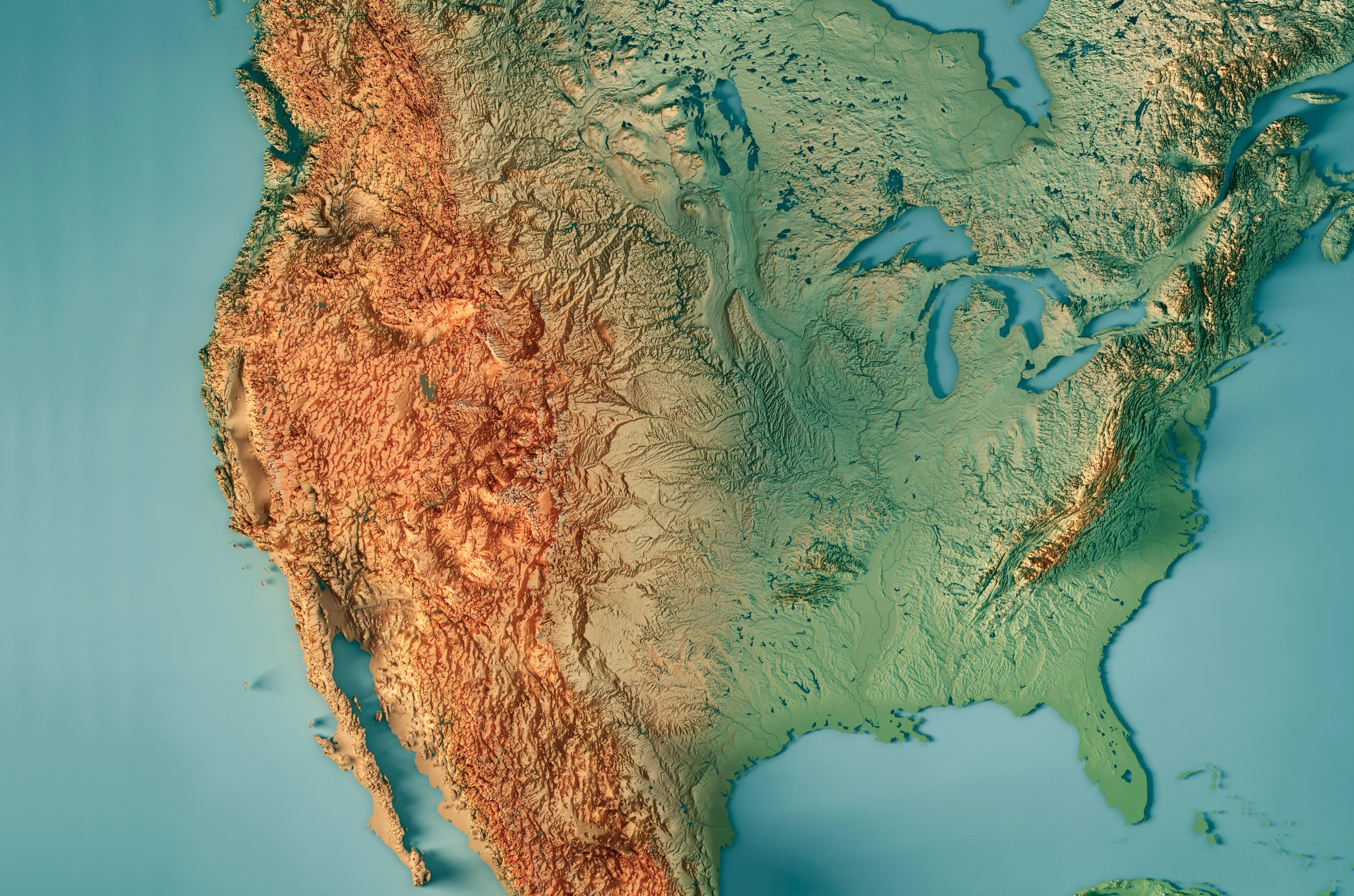
$ Up to $30 / night










$$ $31-$60 / night
$$$ $61+ / night
FAST FACTS
Full Hookups

Big Rig Friendly Playground
Dog Park
Pool
Wi-Fi
WEST SOUTH MIDWEST
42 | RVTODAY.COM
COST
Sam Owen Campground
Carlsbad State Beach Campground
Silver Falls State Park
Campgrounds














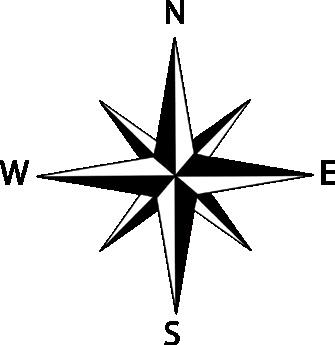
























Have a campground you’d like to share? Send an email with subject line “Campground Highlights” to collab@rvtoday.com for more information on how you can share a spot in an upcoming issue.
Elkhart Campground
Carolina Pines RV Resort
Cedar Bluff State Park
Bennett Spring State Park
Cedar Sage Campground, Guadalupe River State Park
Maxwell-Gunter Air Force Base FamCamp
Lake George RV Park
Mount Desert Campground Camping on the Battenkill
Sam Owen Campground

Sam Owens Park Road, Hope, I D 83836
Our favorite aspect about Sam Owen campground is the breathtaking scenery. The campground is nestled in a densely wooded forest with trees as far as you can see. The campground rests beside Lake Pend Orielle, which might be one of the most beautiful places in this country. It is dog friendly which is a big plus for us, and it has plenty of other outdoor family activities nearby.
Beautiful Lake Pend Oreille is right next to the campground with beaches, boating, etc., and there are tons of hiking trails nearby. This is not too far from Coeur D’Alene, Idaho.

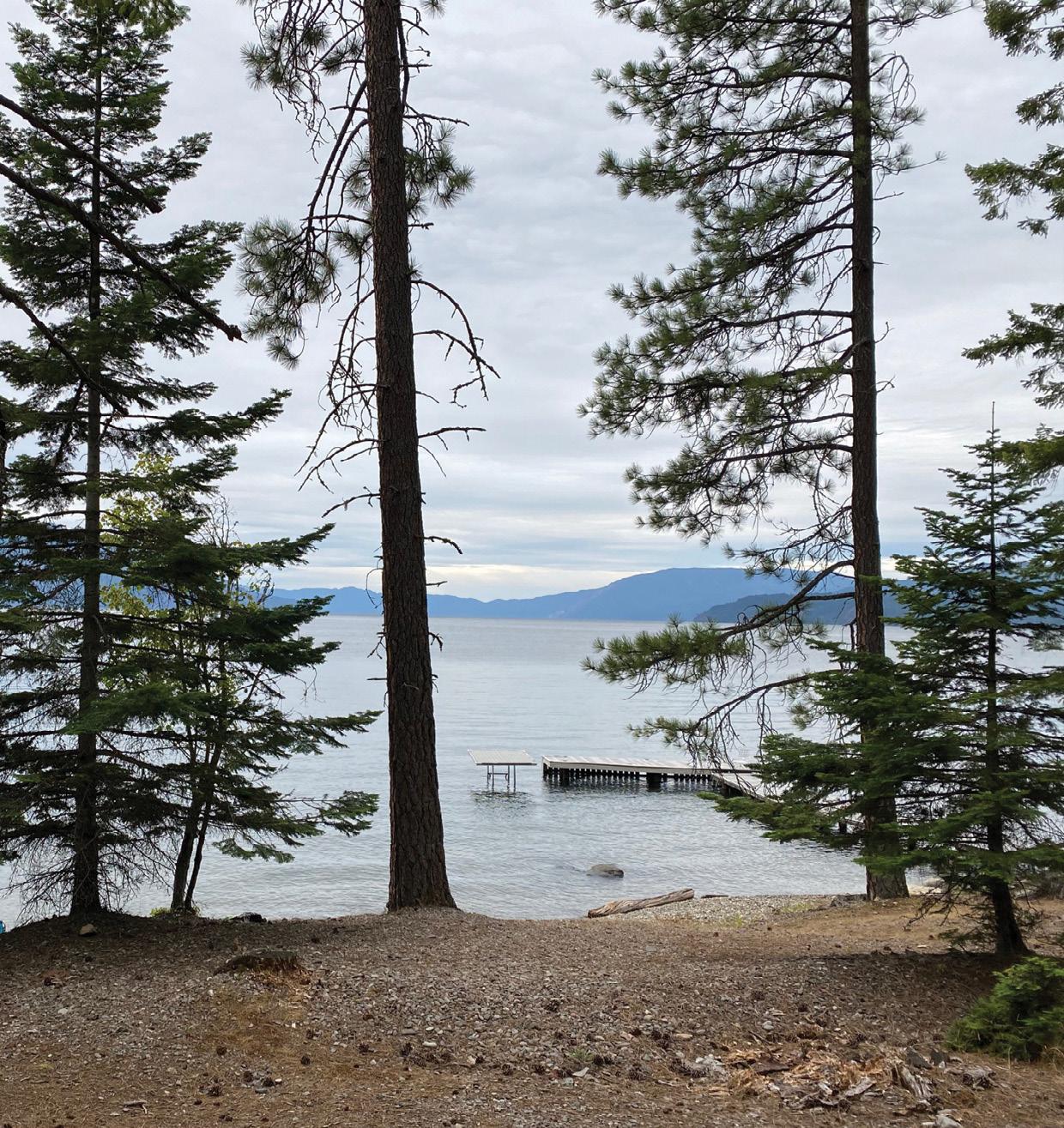
Carlsbad State Beach Campground
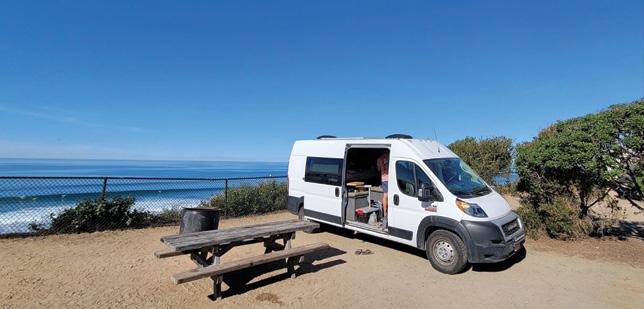
7201 Carlsbad Blvd., Carlsbad, CA 92008
With some of the best surfing in southern California nearby, it’s no wonder why Carlsbad State Beach

Campground is almost always booked out. Reservations can be made 6 months in advance, through an online reservation system. Only 13 of the 223 campsites have hookups, and they are much harder to reserve. There are, however, several dump and fill stations throughout the campground. Sites are laid out along the bluff, with a direct ocean view and access to the Carlsbad State Beach below. The best experience camping here is the opportunity to watch a beautiful sunset over the Pacific Ocean, right from your campsite.
Carlsbad State Beach is very popular for surfing, swimming, boogie boarding and fishing. The three mile stretch of sand offers limitless opportunities for beach combing and relaxing in the sun while listening to the waves crashing onshore. The beach itself has very limited amenities, but a walk up the stairs into the campground gives you access to restrooms with running water, trash and recycling facilities.
With the city of Carlsbad just a short drive to the north, campers can grab a surfboard and wetsuit rental for the day. The campground has a camp store and a cafe that sells grab and go food like pizza and loaded fries, but a trip into Carlsbad for dinner is an option too. Fun day trips from this campground include the Oceanside Pier, watching sea lions in La Jolla, and hiking around nearby Carlsbad Lagoon or Batiquitos Lagoon.
Contributed
west
$
by Jess Stiles
$$
44 | RVTODAY.COM
Contributed by Lindsey Maxey
Silver Falls State Park


20024 Silver Falls Hwy SE, Sublimity, O R 97385
Silver Falls State Park is known as the “crown jewel” of the Oregon State Park system, and it’s easy to see why. Located about sixty-five miles south of Portland and twenty miles east of Salem, the park – including the campground – is a forested, mossy, waterfall wonderland that is meticulously maintained. Our campsite was an extremely long back-in site with an electric and water hookup. The sites are paved, which is great, with all the rain the area receives. The restrooms are super clean, and there are individual shower rooms, which are equally clean. Campground amenities include firewood and ice for purchase, a playground, a dump station and a pet-friendly nature trail. Site types include RV, tent, group, horse, and cabins.
A short drive from the campground is the South Falls Day Use Area, which has a swim beach, additional playground, off-leash dog area, gift shop, restaurant, and wifi available – although we had no issues with cell signal anywhere in the park. We visited in early November, so while we experienced almost nonstop rainy weather, we also got to experience an almost empty campground and amazing fall colors!
Silver Falls State Park is the largest state park in Oregon and offers more than thirty-five combined miles of multi-use trails for hiking, horseback riding, and mountain biking, as well as a four-mile paved trail for biking. However, the main draw is the waterfalls –There are ten waterfalls of varying shapes and sizes throughout the park. Some are easily accessible, others require a bit of a hike, but all are found along the Trail of Ten Falls. The Trail of Ten Falls is a seven-pointtwo-mile loop trail that weaves through a gorgeous forest that is often alongside a creek and, at certain points, behind a couple of the waterfalls themselves. It’s not overly difficult, but there are multiple shorter loop and out-and-back trails that will take you to many of the falls if a long hike isn’t your style. Of note, the cleanliness of the campground carries over to the trails. We used a vault toilet at one of the trailheads, and it was the cleanest vault toilet we had ever seen.
Contributed by Missy Late
$
midwest $$
Cedar Bluff State Park
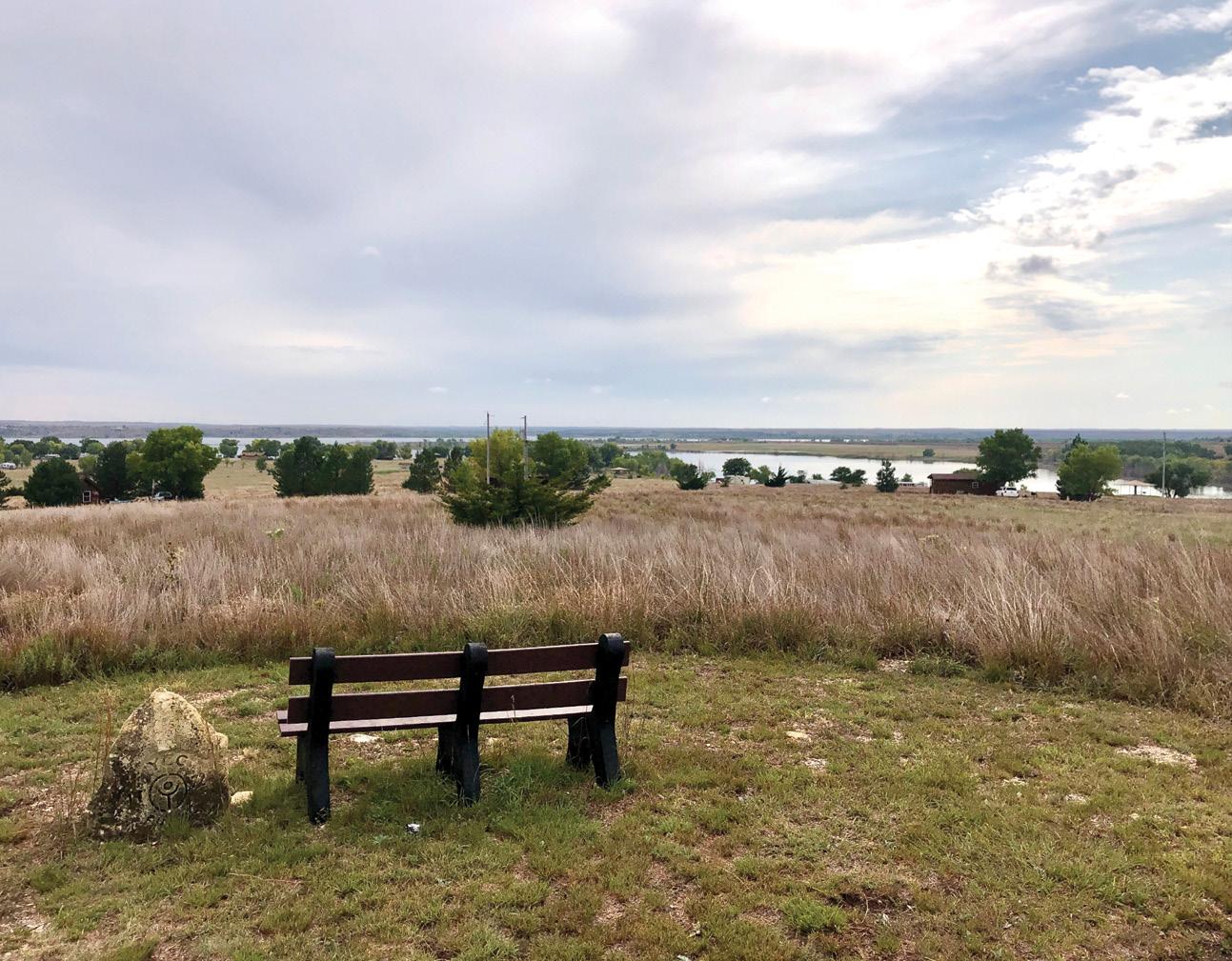
32001 KS-147, Ellis, KS 67637
If you’re looking to unplug and spread out, this is the place! Cedar Bluff State Park is away from the busy city and far from noisy highways. You can see for miles and sit under a blanket of stars at night. This park is divided into two unique areas along the shorelines of Cedar Bluff Reservoir. The park offers many opportunities for outdoor activities, including camping, boating, fishing, skiing, swimming, kayaking, paddle boarding, hiking, biking, and picnicking.
Features:
● 22 full-hookup sites, 97 with electricity, including a group area, and nearly 100 primitive sites. Some sites have concrete or asphalt.
● Two playgrounds, a BMX track, and an archery range

● Numerous boat ramps and fishing docks, and a youth and disabled fishing pond

● Fish cleaning station, two dump stations, and three bath houses
● Six rental cabins (three modern, three rustic)—all include electricity, air conditioning, heat, water, and restrooms
Features:
● One full-hookup site, 36 with electricity, and 50 primitive sites
● Five-mile hiking trail
● Boat ramp
● Cleaning station, two dump stations, and bathhouses
We really enjoyed our stay here. The sites are spacious, and the park is very spread out with easy access in and out. It’s in a more remote area, so Wi-Fi signals were spotty throughout the park, but we found plenty to do walking the nature trails, biking around the park, sitting at the beach or pond, and exploring the Castle Rock Badlands and Cedar Bluff Overlook. This would be a great place to kayak or paddle board also.
There’s a small gas station with a store near the entrance of the park, but the nearest town is about 30 minutes away.
Contributed by Brenda and Jeff Michniewicz
Bennett Spring State Park


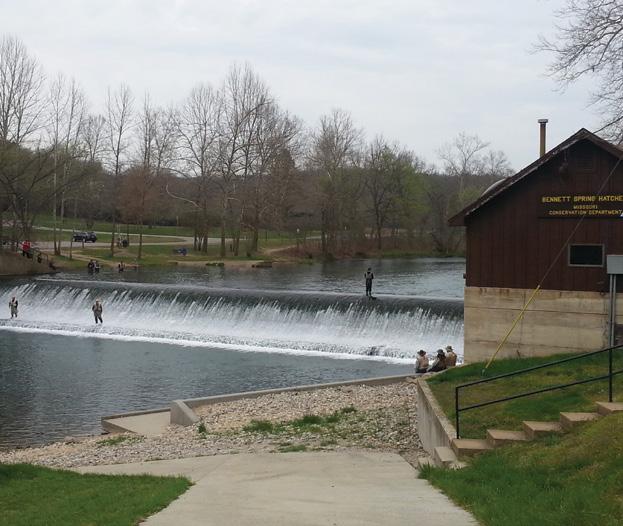
26250 Highway 64A, Lebanon, MO 65536

After one visit, this became one of our favorite state parks. We pulled into the campground, picked out an awesome paved site, and knew we were going to love our stay. The park has 143 campsites spread across five loops, so there’s a wide variety of camping options, from basic sites to sites with full hookups. Some are reservable and some are first come, first served. There is much to do here, but fishing is the main draw as this is one of Missouri’s “trout parks,” with a hatchery and release sites.
We came to camp, fish, and hike, but there’s also canoeing, a nature center and museum, dining facilities, an Olympic-size swimming pool, and more. When we weren’t fishing, we were walking through the woods enjoying some of the 20 miles of trails, which range from a leisurely walk along the stream to mountain trails with picturesque views of the Ozark Mountains. The camp store is quite large and has food, souvenirs, fishing lures, and everything in between. Many of the facilities date back to the 1930s and were constructed by the Civilian Conservation Corps (CCC), so they have great historic charm.
The nearby town of Lebanon has a nice historic downtown and plenty of shopping, fuel, restaurants,
and grocery stores. Check out the Route 66 Museum, which is a re-created gas station with interesting exhibits. There’s an outlet store south of town with a large selection of kitchen items, featuring brands like Case, Wüsthof, Lodge, and more, plus locally-made walnut bowls. We also love visiting the Missouri Cheese Outlet.
Elkhart Campground

25608 County Road 4, Elkhart, IN 46514
Elkhart Campground is a seasonal campground in the heart of the RV Capital of the World—Elkhart, Indiana. Open from April to October, the campground is easy to navigate for RVs of all sizes. It also offers beautifully manicured landscaping so you can enjoy the Midwestern weather outside your RV.

They have 250 pull-through sites with more than 130 full-hookup sites—most ranging between 70 and 80 feet long. They even have cabin rentals if you have friends or family visiting during your stay. It’s in the heart of the city, so anything you might need is just minutes away.
Because Elkhart is the RV capital, many RV manufacturers offer tours of their facilities. You can step back in time by walking inside vintage RVs at the RV/MH Hall of Fame, and even visit the library onsite to see their extensive archive of all things RV. Elkhart is also in the heart of Amish country, so you can visit Shipshewana, Indiana, for delicious Amish treats!
$
RV TODAY | 47
Contributed by Nancy Walters
$$
$$$
Carolina Pines RV Resort


5800 Highway 90, Conway, SC 29526
From the moment we entered Carolina Pines, it blew away our expectations. My husband and I visited as a vacation on their off season, and quickly fell in love. The park was quiet and had all the amenities you look for in a resort-style park. We enjoyed the free mini golf, arcade, mini bowling, and maybe too many very yummy cocktails on our trip. We honestly didn’t want to leave! Being that Carolina Pines was extremely dog friendly, our dog Mabel even enjoyed the two dog parks and dog wash. Just a wonderful place in a beautiful area to make the perfect getaway spot!
Carolina Pines is about thirty minutes from Myrtle Beach and North Myrtle Beach. My husband loves to fish, so we visited the fishing pier on North Myrtle Beach a couple times with great luck. North Myrtle Beach was a huge stunning beach with many areas to park. This beach is very dog friendly too, so our big dog loved seeing the ocean for the first time. There’s also some shopping in the area, from Broadway at the Beach to Barefoot Landing. Carolina Pines has it all!

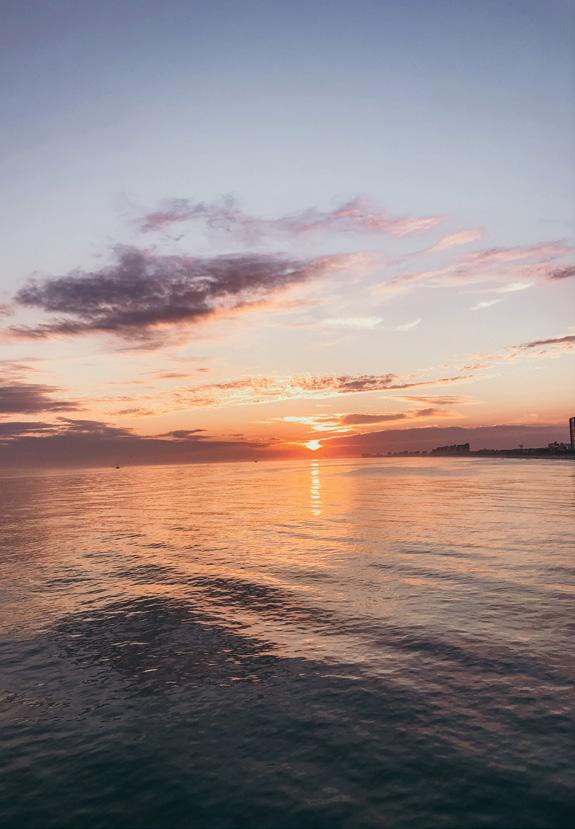
Cedar Sage Campground, Guadalupe River State Park
3350 Park Rd 31 , Spring Branch, T X 78070
The Cedar Sage campground is designed for smaller rigs – There is a twenty-foot limit due to how the sites are laid out but a campground for larger rigs is available at this park, too.

There’s a small parking asphalt pad and then the sites extend out to the side or behind the pad. There is a raised dirt platform area for tents or screen tents. Each site also has a fire pit and a large picnic table. All the sites have the same sized parking pad (which seemed quite level throughout the loop), but the space beyond that
pad varies quite a bit. Some are quite large and others, a bit small.
Most of the sites seem to be good for privacy and all are well spaced so you shouldn’t feel cramped even when the campground is busy. The bathrooms in this campground are relatively new – They are well-designed and clean. Plus, they have shower rooms that are separate from the bathrooms. The showers had great pressure and plenty of hot water.
The park boasts miles worth of trails – some that take you along the Guadalupe River, and all of which are enjoyable. The trail system at Guadalupe River State Park is a great way to spend your time, or you can just sit and relax by the beautiful river.
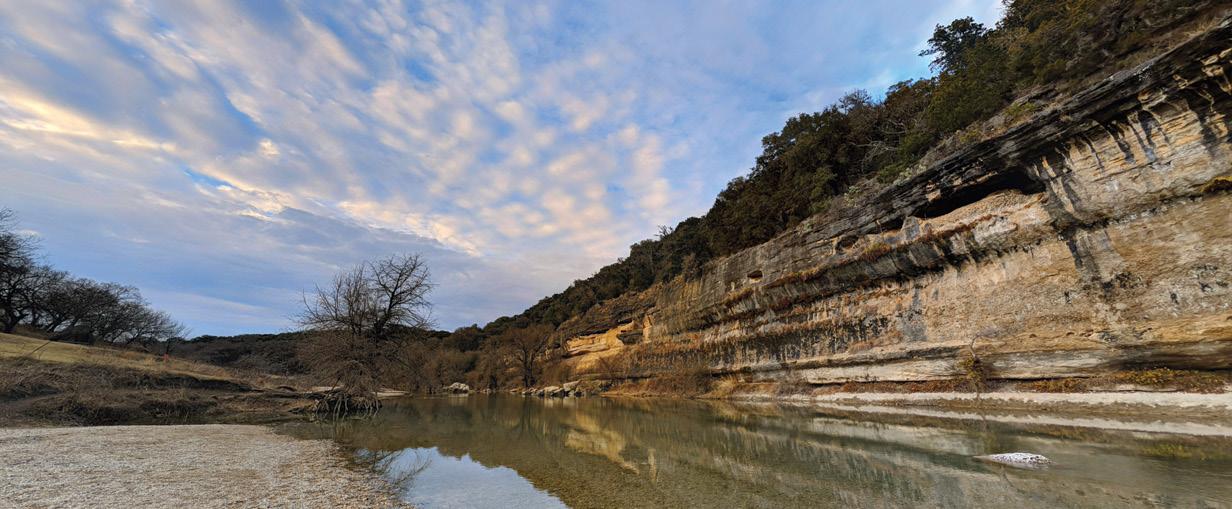

$
south
Contributed by Ari Adler
Maxwell-Gunter Air Force Base FamCamp
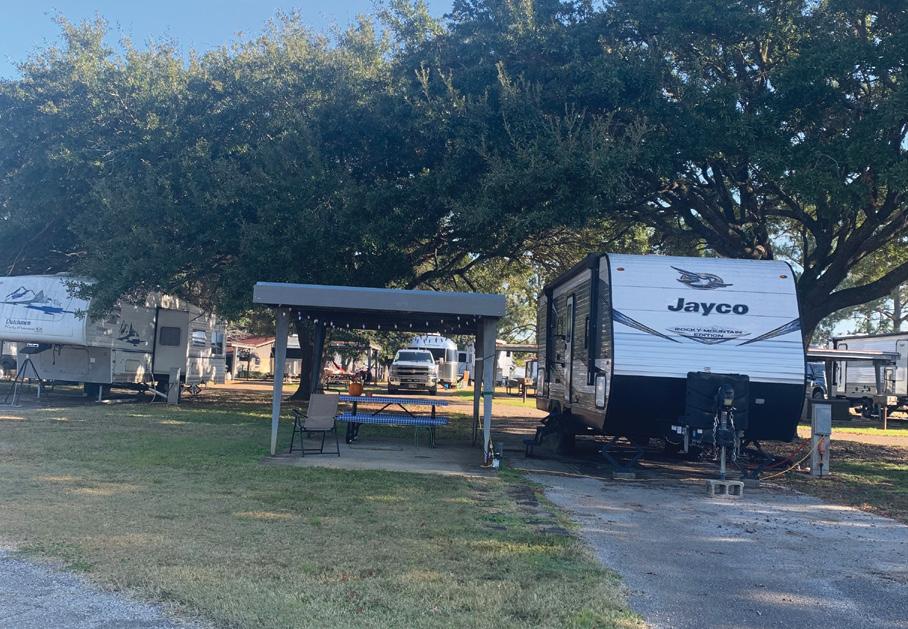

390 March Road, Montgomery, A L 36112
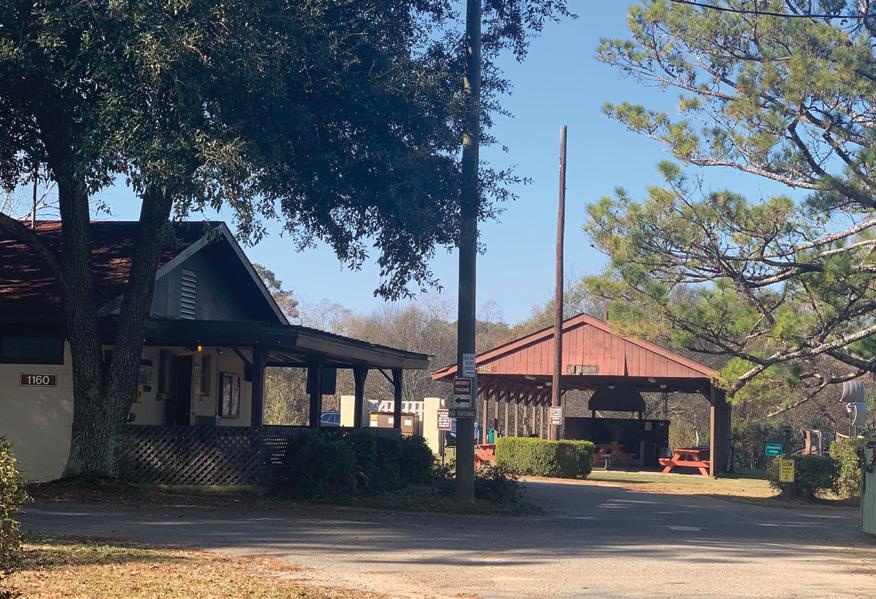

We loved staying here! There is actually a large amount of camping before you get to the trail head. The road is busy during the day with ATVs and vehicles driving up to the trail head. It is also dirt and a little washboard, along with some side roads that can be a bit washed out. We made it slowly over potholes to some of the primo spots so this is a small price to pay for gorgeous free views! We had no problem at all in our twenty-five-foot Winnebago Class C motorhome, and we ended up moving around three different times during our two weeks here! This is such a convenient location – twenty-five minutes to Vail, Frisco, or Silverthorne. Because there are cell towers at the top of the pass, we had great Verizon wireless and no connectivity issues. We highly recommend this spot.
Montgomery, Alabama and the surrounding towns have a great deal to see while you are visiting. For history, the capital of Alabama has the only lynching museum/memorial. Also, located in this town is the Rosa Parks Museum, which can be found right behind the bus stop where the bus boycott began. Also, the Legacy Museum located here shows a timeline and history of slavery. Martin Luther King, Junior’s church can be found steps from the capitol building. About an hour away is Selma, Alabama, which was a pivotal part in the Civil Rights and Voting Rights Movement. This is where the voting rights march started, and the Edmund Pettus bridge where Bloody Sunday happened. If you like history, these two towns are a must stop.
$
RV TODAY | 49
Contributed by Patty Gill
$$$
Lake George RV Park


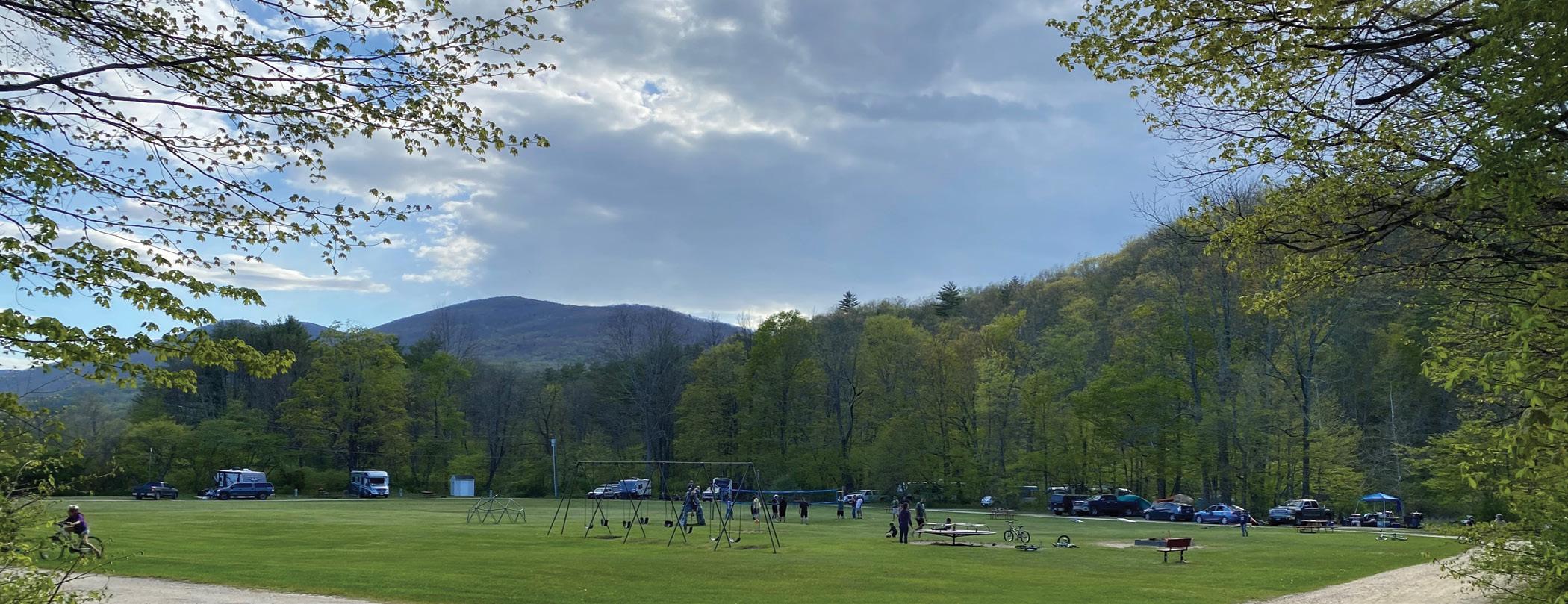

74 NY-149, Lake George, N Y 12845
Lake George RV Park is one of the most pristine RV parks in the Northeast. They have a variety of amenities that include two outdoor pools, an indoor pool, a jacuzzi, a gym, a pickleball and tennis court, a cafe, and even a theater on site for live entertainment and movies. There is never a shortage of activities to do at this park. It is well maintained and the staff goes the extra mile to make your stay exceptional. The best aspect about this campground is that you never have to leave.
The infamous Lake George, New York is about a five minute drive from the park. It is one of the cleanest, most beautiful lakes in the country. Lake George Village is the town located on the lake where you will find great local restaurants and shops.

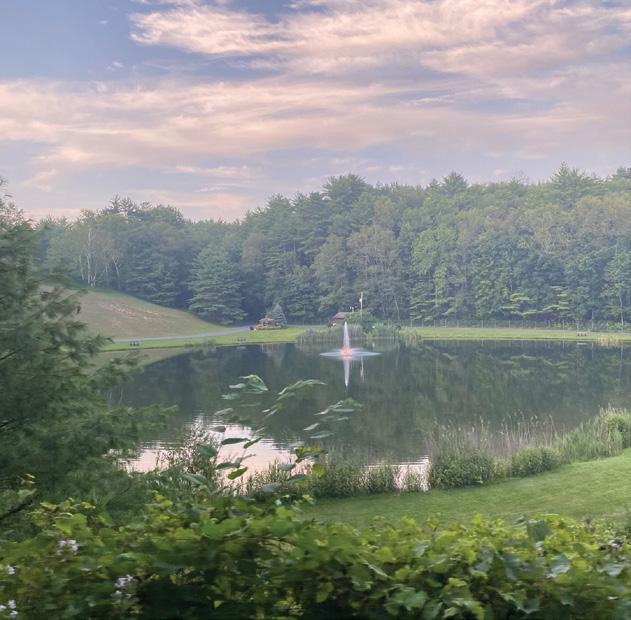
$$
Camping on the Battenkill
48 Camping On Battenkill
Arlington, V T 05250
Camping on the Battenkill has been a family favorite of ours for years. It has a state campground feel with lots of large wooded sites. There are not many flashy amenities, but that is why we love this particular campground. It is a place to go for peace, relaxation, and nature focus. It is directly on the Battenkill River where you can enjoy kayaking, tubing,
and swimming. While the playground is a bit dated, it is located in an open field where all of the kids throughout the campground love to gather and play. There are nice flat roads and trails throughout the campground, which also make it great for biking. If you love quiet, family-friendly campgrounds then this place is worth checking out.
There are several quaint shops in the area that stock Vermont favorites such as maple syrup and cheeses. We love visiting the Chocolate Factory and Sugar Shack for some delicious treats. The Manchester Outlets are a short drive, which can be a great rainy day activity. If you are looking for more adventurous activities, Mount Equinox offers a skyline view for driving and hiking.
northeast
Contributed by Stacy Maxon
50 | RVTODAY.COM
Mount Desert Campground
516 Sound Drive, Mount Desert, M E 04660

Mount Desert Campground is a private, family-owned campground nestled on Somes Sound adjacent to Acadia National Park on Mount Desert Island, Maine. Commonly touted as Acadia’s best camping, it’s been our family’s favorite campground since we first arrived for a workcamping job there in the summer of 2015. That first summer it only took us a few moments to realize that we have never seen such a beautiful campground anywhere. There’s stunning water access, a super long floating dock for crabbing, mountain views, lush forests, gorgeous moss and ferns, birds, and the cleanest campground bathrooms you could ever imagine. The only downside is the sites are tiny (max trailer length is twenty feet). However, there are kayaks and paddleboards to rent, a clubhouse with coffee and goodies to buy, and a sweet office (and staff) to talk, too.

Acadia National Park covers many parts of Mount Desert Island, and you’ll find Mount Desert Campground has a central location to the entire park for hiking, biking, and water sports. After spending five full summers here, I truly know why we keep meeting people who say, “My family’s been coming here every summer for the past twenty, thirty, forty years, or more.” At first I honestly thought they didn’t have much creativity for vacation planning, but now I’m actually one of them.

$$
Contributed by Celeste Orr
Campground Memberships
SAVE MONEY AND EXPAND YOUR O P T IO N S
If you’re looking to travel more than occasionally, you may benefit from campground memberships. The word “campground” brings a specific image to mind, but these programs feature a range of location options, including private properties with picturesque landscapes and resorts with activities and car rentals. While saving money might be the top priority, there are other perks as well.
Campground MEMBERSHIP
Boondockers Welcome
boondockerswelcome.com
Owned by Harvest Hosts, this company offers free overnight parking on private property for those who travel in self-contained RVs, with nearly 3,000 locations in the United States and Canada. One annual fee covers unlimited stays. Plus, if you have the space and would like to become a host, your membership is free!
Escapees RV Club
escapees.com
Focusing on community, this company offers memberships to those who are passionate about travel. While membership gets you access to the RV parks, the additional benefits shine more—they include a mail forwarding service, a job exchange, roadside assistance, and educational programs. No matter your age or vehicle, you will be welcome.
Harvest Hosts
harvesthosts.com
Whether it’s a special experience or a unique location, travelers can find an array of stays that fit their personalities. From wineries, distilleries, and breweries to museums, golf courses, and farms, stays are more than just picture-perfect. Requirements are minimal—tent camping is not allowed and your traveling home must have a selfcontained toilet and water tank. Other than that, you can support your hosts by purchasing their local goods, which means either a gift you can pass along or a gift for yourself.
Passport America
passport-america.com
Focusing on benefiting both campers and campgrounds, Ray E. Fernandez started Passport America in 1992. He describes his program as a “win-win.” Members pay one rate for discounted campsites, which encourages them to extend their stays. Meanwhile, campgrounds receive free advertisement, which attracts more campers who tend to settle there longer. Today, Passport America has more than 1,200 campgrounds spanning across North America.
Resort Parks International
resortparks.com
Resort Parks International gets its name because it partners with resorts. Each resort still runs its own show, but members get various amenities and benefits that include savings on hotels, car rentals, tours, cruises, and more. Not the resort or condo type? Members can also receive discounts on certain campgrounds, find locations with RV access, or trade in their tents and homes-on-wheels for cabins and cottages.
Thousand Trails
thousandtrails.com
Priding itself on being “one of the largest networks of RV resorts and campgrounds in North America,” Thousand Trails believes in blending the words “nature” and “resort.” Nature preserves are made a bit more lavish by adding resort-style benefits, including family-friendly events and activities. Interested in taking a peek before becoming a member? There are resorts and campgrounds open to non-members, too.
52 | RVTODAY.COM
COMPLETE TRAVEL GUIDE
 By Red and TJ Breen
By Red and TJ Breen
FUN FACTS
● Florida ranks fifth in the country in total number of state parks, with 191
● The original park property was purchased from the federal government in 1947 for $2.50/acre
● Contains five distinct ecological landscapes, including beach, pine forests, and coastal plant communities
● Theodore Tollofson (“Teddy the Hermit”) wrecked his boat on the shore in a 1929 hurricane and homesteaded the area for 25 years
Just 3 miles from Panama City is St. Andrews State Park, one of the most beautiful state parks in Florida, and definitely our favorite in the panhandle. The park is located at the end of a peninsula, with the Gulf of Mexico on one side and St. Andrews Bay on the other. This proximity allows you to experience the perks of both bodies of water via just a short walk.
HOW TO GET THERE
Getting to St. Andrews State Park is not complicated for even the most unseasoned travelers. You can take State Road 30 or U.S. Route 98, with Thomas Drive leading you into the park from either way. If you’re in an RV or towing, we recommend using U.S. Route 98 to avoid the crowded tourist area adjacent to the Gulf of Mexico.
WHERE TO CAMP
Each of the park campground’s 176 sites has water and electric hookups and can accommodate RVs up to 40 feet in length. Amenities include modern bathrooms, showers with hot water, and laundry facilities. The camping spots have extremely limited shade and are not private or wooded. Most sites are on sand and stone, with a few on concrete slabs. The campground is neat and well cared for, and the restrooms were clean and well maintained when we were there.
Reservations can be made through the Florida State Parks system at reserve.floridastateparks.org. You can book up to 11 months in advance, and they fill up fast, so we recommend booking early.
RV TODAY | 53
Seascreamers Offshore at Shell Island
THINGS TO DO
With about 1.5 miles of beach, there is plenty of sandy territory to spread out and enjoy. If lounging in a warm, calm pool of water appeals to you, there is a wonderful wading pool inside the jetty. This bayfront beach area, part of the Grand Lagoon, is a perfect spot to enjoy a relaxing swim without the concern of waves and deep waters. Be on the lookout for marine life—we spotted a number of jellyfish while we were there.
A small population of white-tailed deer is only one of the many wildlife encounters you may have while exploring this ecologically-diverse area. The 1,200-acre park boasts five distinctive landscapes. Be sure to take the time to venture out to Gator Lake, a man-made lake known for its multitude of inhabitants, from great blue herons to alligators.
You can enjoy an array of water activities in the park, including paddling, kayaking, boating, snorkeling, surfing, and fishing. There are even some boat tours! Fishing is permitted from the jetty and also from the fishing pier, so you can try your luck at reeling in fresh fish for dinner. A saltwater fishing license is required; more information can be found
on the state’s website.
There is a boat ramp and concession area located in the Grand Lagoon portion of the park, where you can purchase snacks, souvenirs, bait, and limited grocery items, as well as rent chairs, umbrellas, snorkeling gear, canoes, and kayaks. Unfortunately, there is extremely limited parking in the boat ramp area.

When visiting St. Andrews, we highly recommend taking the tour to Shell Island. A 15-minute ferry ride takes you across the bay to a “boat access only” beach with pristine white sands and the turquoise waters of the Gulf. Along the way, keep an eye out for dolphins playing in the wake of the boat—we saw several, as well as a sea turtle.
Splashing into the blue water of the gulf is exhilarating, but the search for treasure is rewarded with some of the best shelling we’ve ever found—the island definitely lives up to its name. There are no restrooms, food, or water available on the island, so you must pack your provisions in and out. The Shell Island Ferry departs every hour between 10 a.m. and 2 p.m., and reservations are encouraged.
If your preferred activities involve dry land, you
St. Andrews State Park Campsite 54 | RVTODAY.COM
won’t be disappointed either. Hiking options include two half-mile hikes to Heron Pond or Gator Lake. These hikes are short, but the wildlife you may encounter makes them far from boring.
Bike riders can take advantage of 2 miles of paved roadways within the park. Remember that Florida law requires helmets for riders younger than 16. During our stay, we took the opportunity to ride our bikes in the park as well as stroll the roadways, and traffic was generally pretty light.

The park also has four picnic areas, plus remnants of two gun mounts that were part of the coastal protection system during World War II.


Just outside the park you’ll find restaurants advertising the catch of the day—very tempting for us seafood lovers. We highly recommend stopping in to Shrimp City Seafood Market for some fresh gulf shrimp. You can order them raw to cook at camp or have them steamed there. We opted for some steamed with Old Bay Seasoning. The shrimp was so tasty and fresh we went back twice in one week, and the She Crab Soup was the best we’ve ever had.
An 11-mile drive takes you to Pier Park, the panhandle’s retail and dining destination. This hub

of activity is full of shopping options, from small boutiques to large chain stores, and it’s a great place to find souvenirs. Some of the restaurants have a view of the gulf from their balconies. Whether you come for a couple of days or a week or more, St. Andrews State Park is an amazing destination. Spending a week in this park was the highlight of our summer adventure, and waking up with a water view from the back window of our teardrop camper was a sight to remember for a lifetime. ■
 Follow Red and TJ Breen on Instagram @lovinglifehitchedup
Beach on St. Andrews Bay
Gulf of Mexico Sunset
Pier View of Panama City Beach
Follow Red and TJ Breen on Instagram @lovinglifehitchedup
Beach on St. Andrews Bay
Gulf of Mexico Sunset
Pier View of Panama City Beach
HOW TO GET MORE USE OUT OF YOUR RV THIS SUMMER
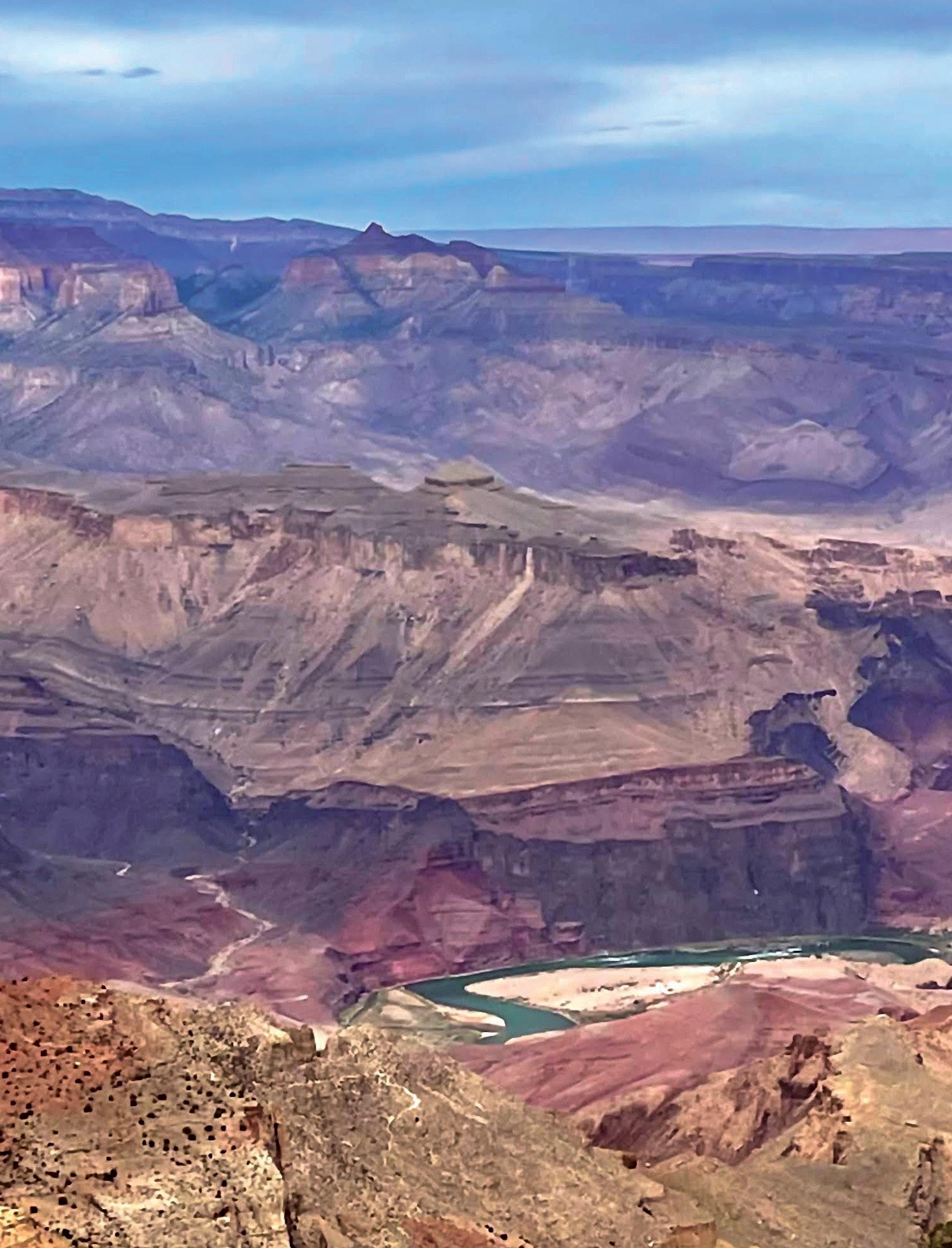
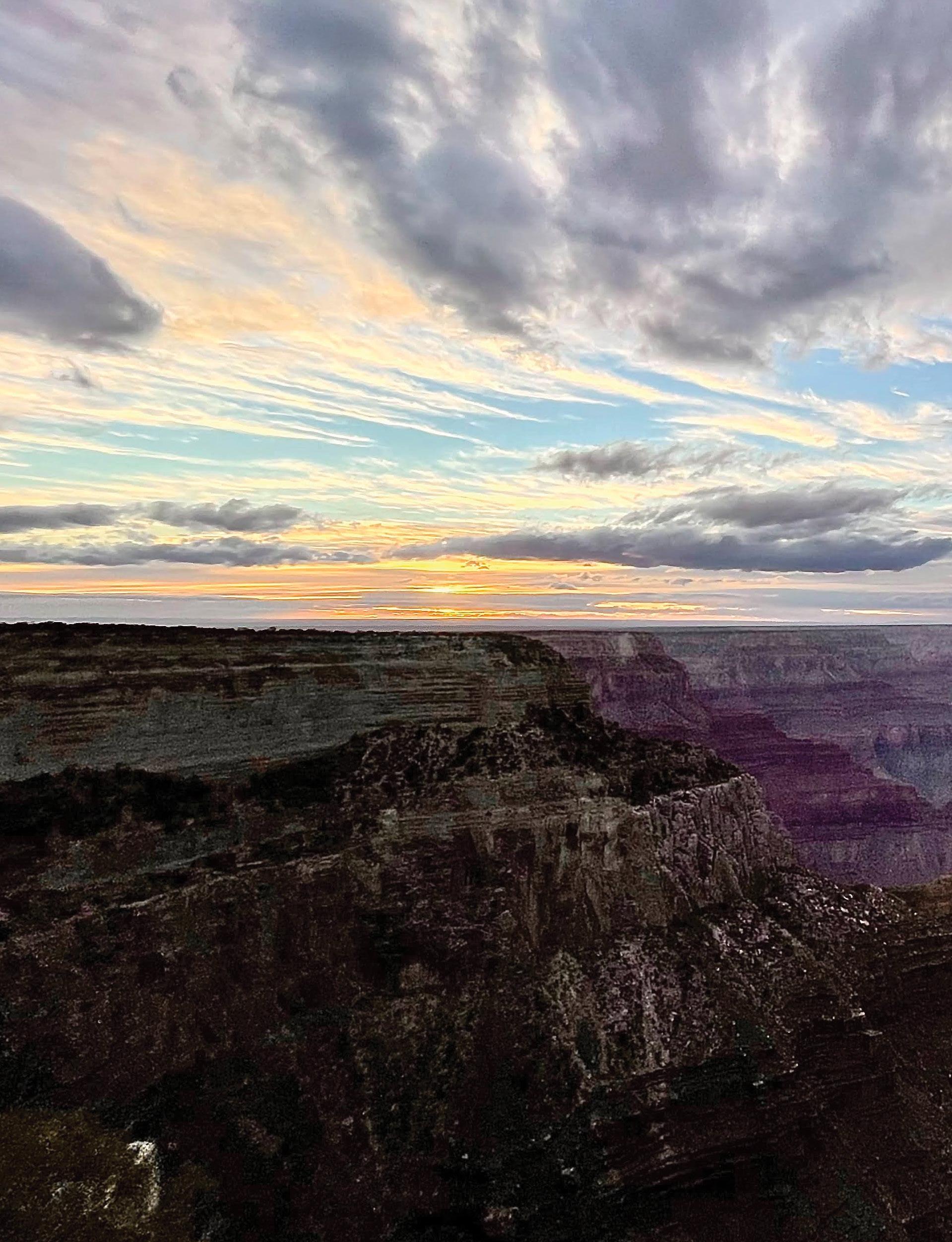 By Jess Stiles
By Jess Stiles
56 | RVTODAY.COM
One MORE Weekend
The average RV owner uses their RV between 20 and 25 days per year, which works out to about eight weekends annually. That means we’re only spending 7% of the year in our RVs! While statistics vary slightly, our takeaway is that RV owners might need some ideas for how to get out more, even if it’s just one more weekend each year. We’ve compiled some expert tips that we hope will help get you and your family out camping more often this summer

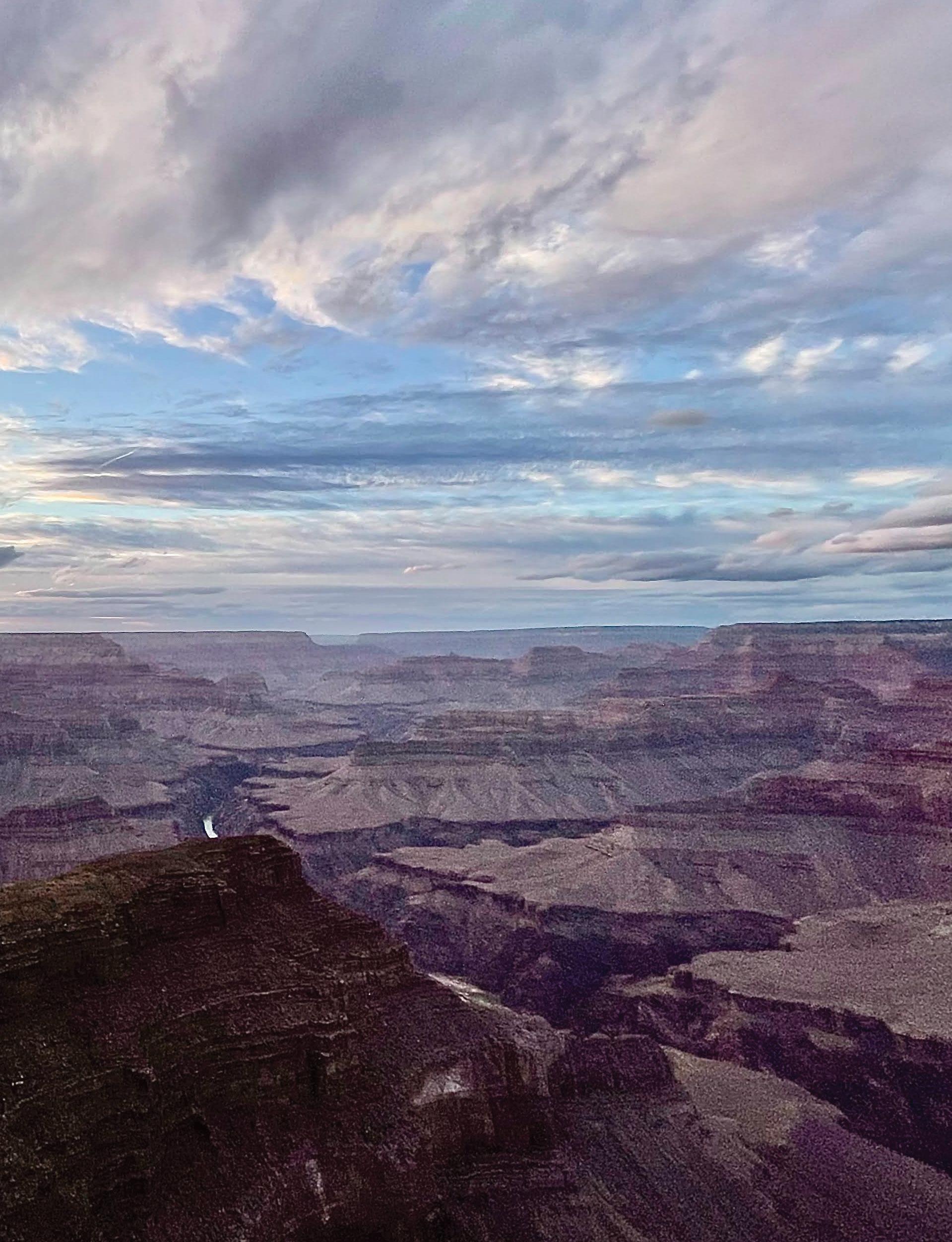
Camping Checklist
☐ Prepping the RV
☐ Tire pressure
☐ Propane tank fill level
☐ Battery charge level
☐ Appliances are in good condition and functioning properly
☐ Solar system and /or generator are functional
☐ Water tanks are ready to use
☐ Insurance and registration are current
☐ Roof seams are still sealed and in good condition
☐ Safety devices are working properly (fire extinguishers, smoke detectors, and CO2 monitors)
☐ Lights and gauges are working properly
☐ Adequate supplies for water tanks (holding tank chemicals, gloves, etc.)
☐ All electrical plugins and water hoses necessary for campground hookups
☐ Wheel chocks, jumper cables, tools, and emergency equipment are in good condition
☐ For trailers: towing apparatus, towing mirrors, lights, and leveling jacks
☐ For motorhomes: inspect RV engine for leaks and fluid levels (transmission, power steering, coolant, oil, brake fluid, and windshield washer fluid)
What to Pack
☐ Bedding and pillows
☐ Towels, toiletries, and first aid kit, including prescription medications
☐ Dishes, pots and pans, cooking utensils, sponge and dish soap, cutting board, trash bags, paper towels, coffeepot, s’mores supplies, tablecloth
☐ Books, toys, games, and inflatable water accessories like kayaks or paddle boards
☐ Outdoor rug, camping table and chairs, bug deterrent and sunscreen, hatchet and lighter, flashlight or headlamp, outdoor portable cooktop, and cooler
Don’t Forget to:
☐ Bring the key to your trailer
☐ Leave a house key with the neighbors
☐ Have directions to your campsite
downloaded
☐ Prepare travel day music, snacks, and games
How to Stay Organized for Fast Load and Unload
–
Molly Totoro @travelintotoros
Keeping your RV prepped and having a process to load and unload makes a world of difference in getting out to camp more often. When you follow the same steps to get ready every time, you can always be sure you have everything you need for a trip. And when you get home and unpack your RV, following a process ensures all the right things leave the RV, and stuff that’s supposed to stay remains.
Molly and her husband are self-proclaimed RV newbies, but you wouldn’t know it from their level of preparation when it comes to getting ready for upcoming trips in their 2001 Holiday Rambler.
Molly said:
● I bought several large plastic tubs and designated one for each room in the RV; for example, I have one for pantry supplies, one for bath items, and one for cleaning supplies.
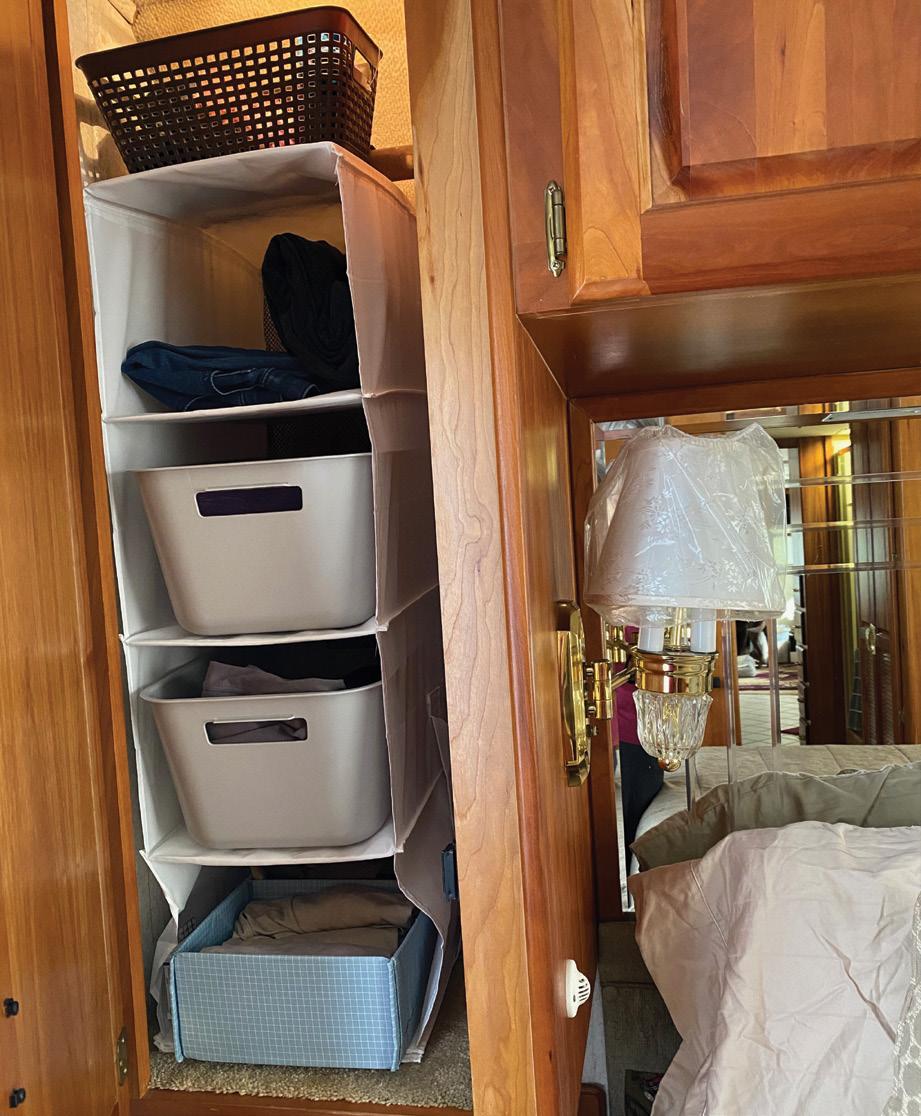
● We set up a six-foot folding table in the garage.
● Once a bin is filled in the house, I take it out to the garage and store it underneath the table.
● We reserve the top of the table for additional items that we know we want to take with us on the next trip, but that don’t belong in the bins. My husband would visit our rig in storage once a week or so and take those items with him.
● I also purchased bags and stored all the linens, pillows, etc., in them. When we get back from our trips, I take the bags of dirty linens to our basement for washing. Then, once I’ve washed, dried, folded, and returned them to the bags, they are ready for the next camping trip!
Family Friendly Tips
– Kelsey Lowman @lowmanfamilywanderings
BE FLEXIBLE
“A spot opened up at Douthat State Park for this weekend.”
“Where the heck is Douthat State Park?”
“It’s three hours away, it’s an open spot, it fits the rig, and it has full hookups.”
“Sounds great! Did you check the weather?”
This is the exchange we have every time we look for a last-minute weekend spot. We’re flexible and check several destinations for canceled reservations. Booking at the last minute means condensed packing and planning, and though it can be exhausting, it can also relieve some of the anxiety of trying to fit everything, because you have to prioritize the essentials.
USE A PACKING LIST
Create a good, personalized list with the basics you use for every trip. We like to use notes in Google Keep with both me and my husband as collaborators so we’re able to add and mark off items as needed. We’ve kept our notes and used them over and over so we don’t have to rewrite each time.
PACKING CUBES
Next, I throw in the laundry and get the packing cubes ready. These are great for organizing clothes for each person. I have a couple of extra cubes for the baby’s necessities, like diapers, extra blankets, etc. These usually get restocked once we’re home and stay packed up between trips.
PRE-COOK MEALS
Since weekend trips are incredibly quick, we pre-cook food so we aren’t pressed to get set up and cook a whole meal. If we’re going somewhere with good restaurants nearby, we plan where we’ll go the first night to reduce stress—the “rig backup” argument can get heated enough, depending on how much crying is happening in the backseat!
LOAD THE RV EARLY
Finally, we take a load of everything to our RV the day before we leave. Travel days are tough, especially for families with kids. We try to reduce the time in the car as much as we can, and preloading the trailer is key!



RV TODAY | 59
Create a Bucket List
– Maureen Hochdorf @mommymoadventures
As RV newbies, we like to plan our trips around bucket list national parks, along with travel gems in the surrounding area. With more than 4,000 national parks worldwide, the options are endless! The Grand Canyon has always been high on our list, so we decided to cross it off with a 10-day Arizona road trip.

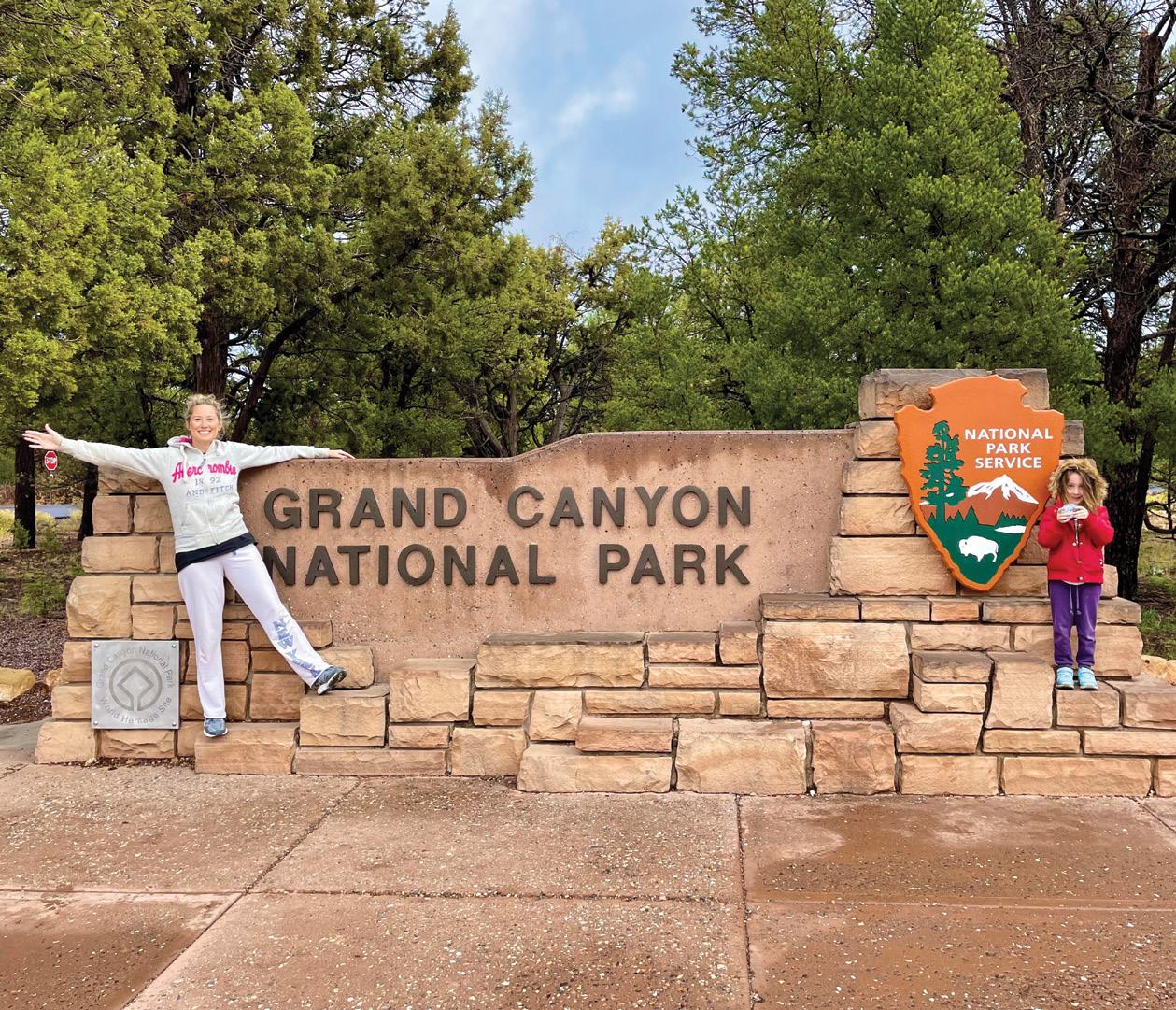
Starting in Phoenix, we made our way north, visiting sites such as Montezuma’s Castle, Walnut Canyon, and Wupatki National Monument along the way. Sedona and Flagstaff were also incredible stops, but reaching the Grand Canyon was the cherry on top.
We stayed for two and a half days at Trailer Village RV Park, the only full hookup campground inside the South Rim. The campsites are nice and spacious. There wasn’t much Wi-Fi, which allowed us to focus purely on quality family time without interruptions.

During our incredible time at the Grand Canyon, we did mostly rim-trail hiking, saw lots of mule deer, completed the Junior Ranger Program, and witnessed the most glorious sunset over the canyon. We also experienced a family first—both my husband and daughter saw snow falling for the first time. Waking up to those beautiful falling flakes was a magical moment we’ll never forget!
In hindsight, we could have easily stayed a few more days, but we focused on the South Rim this time and did not venture over to Grand Canyon West. Just another great reason to return!
For our next bucket list trip, we are planning on spreading our wings and taking a European RV trip from Paris to Rome. We’re looking forward to seeing the Matterhorn, the Swiss and French Alps, and Italian national parks, including Parco Nazionale Gran Paradiso and Cinque Terre. Stateside, we want to take a western national park trip that would include Utah’s Mighty 5, Yosemite, and Yellowstone. There are so many sights to see!
For our next bucket list trip, we are planning on spreading our wings and taking a European RV trip from Paris to Rome.
Create Your Own Holiday Weekend
RVing families tend to camp when the kids are out of school, which often means being limited to a handful of three-day weekends throughout the year. Some folks have started making their own holiday weekends, centered around birthdays, anniversaries, or a favorite time of year to visit a specific place. Reserving a certain weekend for a specific trip means one more weekend per year that’s guaranteed to get you out exploring in your RV!
Go Visit Friends and Family
What’s better than camping every weekend?
Camping every weekend with your friends and family! If you have people you can visit within a day’s drive, this makes the perfect short camping trip—there’s nothing that says you have to be in a campground to enjoy a weekend away from home in your RV. But if your friends or family have an RV too, or are interested in renting one, you can meet somewhere in between and spend the weekend catching up over hot dogs and s’mores.
Buy a Membership or State Parks Pass
–
Molly Totoro @travelintotoros
Paying for a campground membership or state park pass at the beginning of the camping season can be a motivator for getting out more. After spending the money up front, you’ll definitely want to get good use out of your pass, and may plan trips specifically to make sure you don’t waste money.
For example, while camping at Hillsdale State Park near their home, Molly and her husband found out that the Kansas state park system offers an annual permit.



“For a little more than $200, we get $10 off per night for a year when camping in any Kansas state park. We’ll break even if we use the permit for 20 days,” Molly said. Since they camped at Hillsdale State Park three times within the first few weeks of owning their RV, they felt confident they would be visiting the other state parks nearby too.
Molly said, “While we will still need reservations at peak times, I do think this permit will encourage us to camp at least one more weekend a year. We have many parks to choose from, all within a 90-minute drive of home, and we can’t beat the price—with the discount, we’re often able to get a full-hookup site for $12 per night.”
RV TODAY | 61
Molly and her husband found out that the Kansas state park system offers an annual permit.

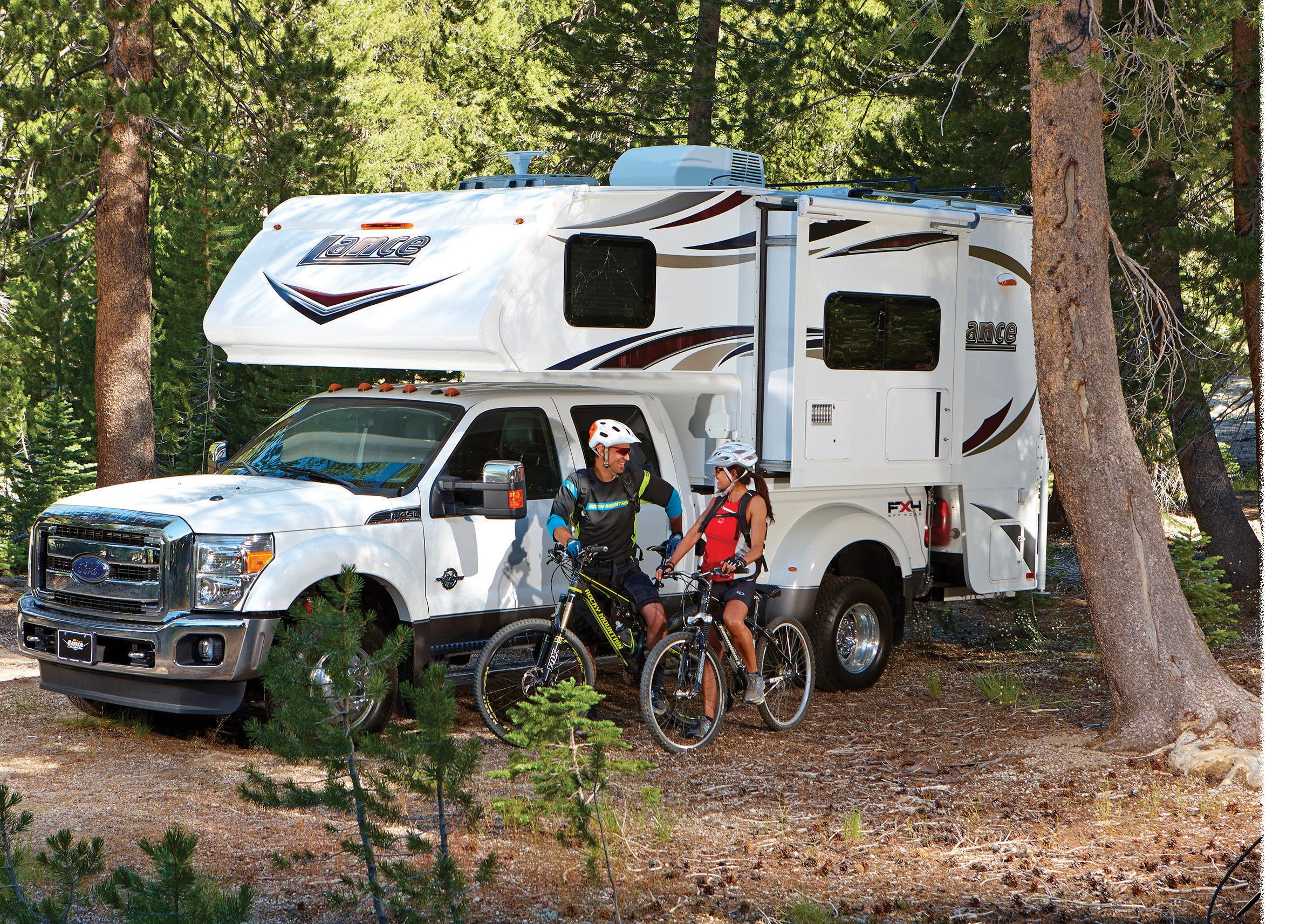
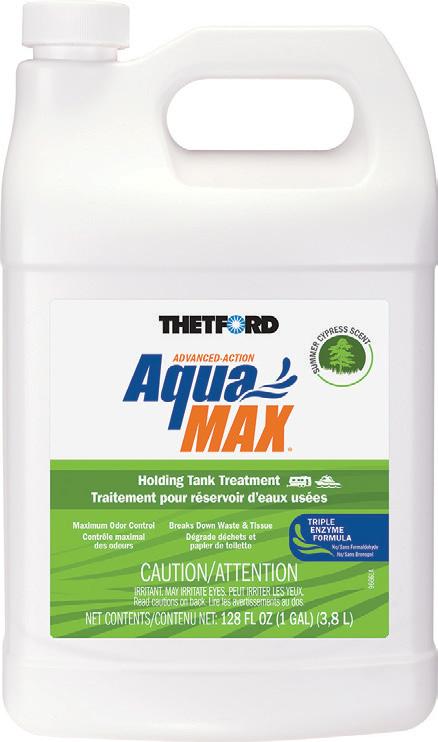
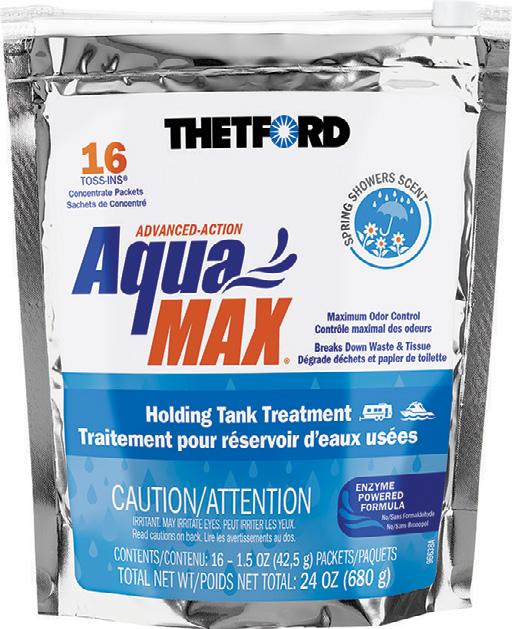


OFF-GRID
Why You Should Start Boondocking Now
By Kristen Sargent
We’re full-time RVers living off-grid in our Class A motorhome. We both still work full time, but we didn’t want to wait until retirement to travel more. We chose RV life in order to chase adventure and enjoy little moments of retirement every day. We travel in a 42-foot Gulfstream Yellowstone with a Jeep in tow.

RV TODAY | 63
We’re full-time RVers living off-grid in our Class A motorhome. We both still work full time, but we didn’t want to wait until retirement to travel more. We chose RV life in order to chase adventure and enjoy little moments of retirement every day. We travel in a 42-foot Gulfstream Yellowstone with a Jeep in tow. After staying exclusively at RV parks for the first 20 months of our RV life, we cut the cord and never looked back. Now, you can almost always find us camping in nature and exploring trails with our pup, Maddie. In fact, we’ve only spent 16 of the past 365 nights at RV parks. If you love wide open spaces, being out in nature, and having big, beautiful backyards all over the country, off-grid camping will likely be a good fit. It doesn’t hurt that it’s often free, too!
WHY WE CAMP OFF -GRID
■ Room to breathe —no neighbors right next door
■ Close to nature —trails, rivers, mountains, and outdoor activities are right there
■ Cost savings after the initial costs of outfitting your RV for off-grid living, boondocking is often free
■ Community it’s easy to coordinate with friends to camp together
■ Flexibility more spontaneity, no reservations required, and ability to move more often
We define boondocking as dispersed camping on public lands, and we do lots of this. However, we also off-grid camp in many other situations, using state parks, Hipcamp, Boondockers Welcome, and Harvest Hosts. This year, we also spent a couple of months driveway surfing—affectionately known as “moochdocking”—in driveways of family members. The best thing about having an off-grid setup for your RV is that you are truly self-supported and can go just about anywhere.
Cutting the cord opened up a whole new version of RV living for us; one that was a much better match for our nature-loving spirits. Now, we camp where we want to play, so our next adventure is just outside our door. When we wanted to explore the slot canyons of a state park, we camped inside the park and were able to go out to the canyons every day after work. This is especially important to us since our jobs leave us with limited time for weekday adventures.
RV rallies are often dry camping events, and before we had our solar system we were hesitant to register for an event. Now, communities like Xscapers and RV Entrepreneur have given us a community on the road and friends for life. Having confidence in off-grid camping makes events like these more accessible.
Off-grid camping opens up so many more possibilities of where you can camp and when. If we plan to visit a beautiful lake for a week, but we love it so much we don’t want to leave, we don’t have to! We feel so much more freedom with our off-grid systems than we did before installing them. Isn’t freedom what RV life is all about?
It does take some preparation to become selfsupported and able to fully use your RV when not hooked up, but we think it’s worth it!
W
64 | RVTODAY.COM


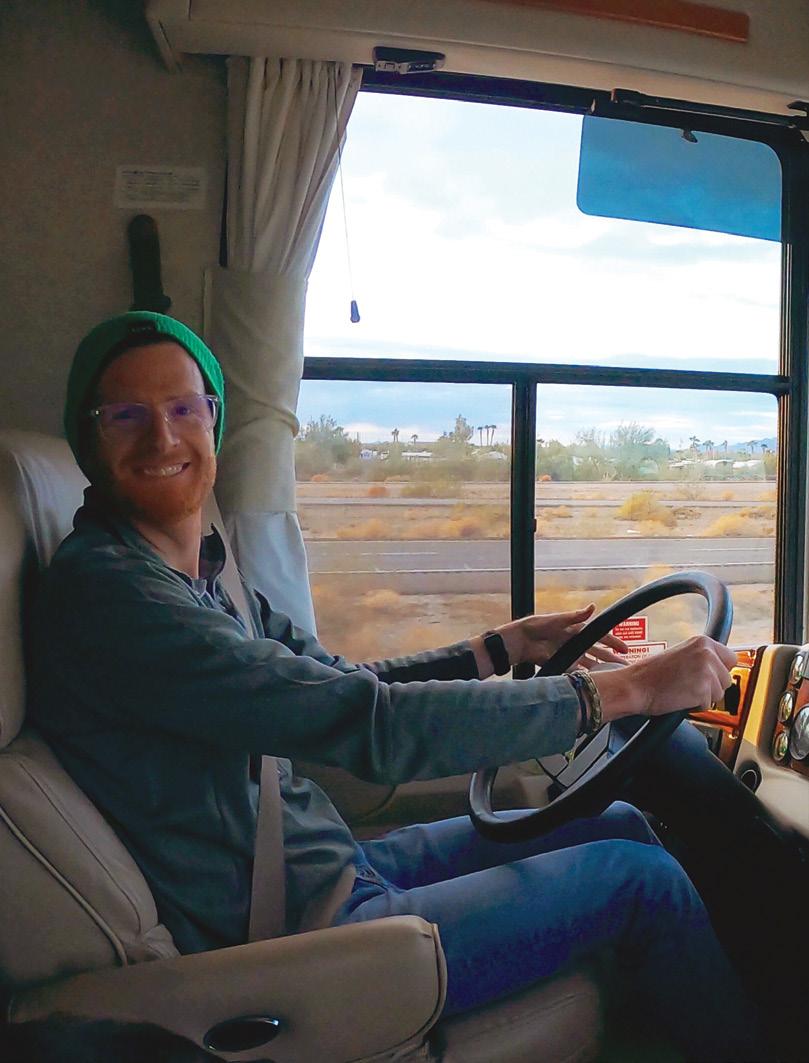

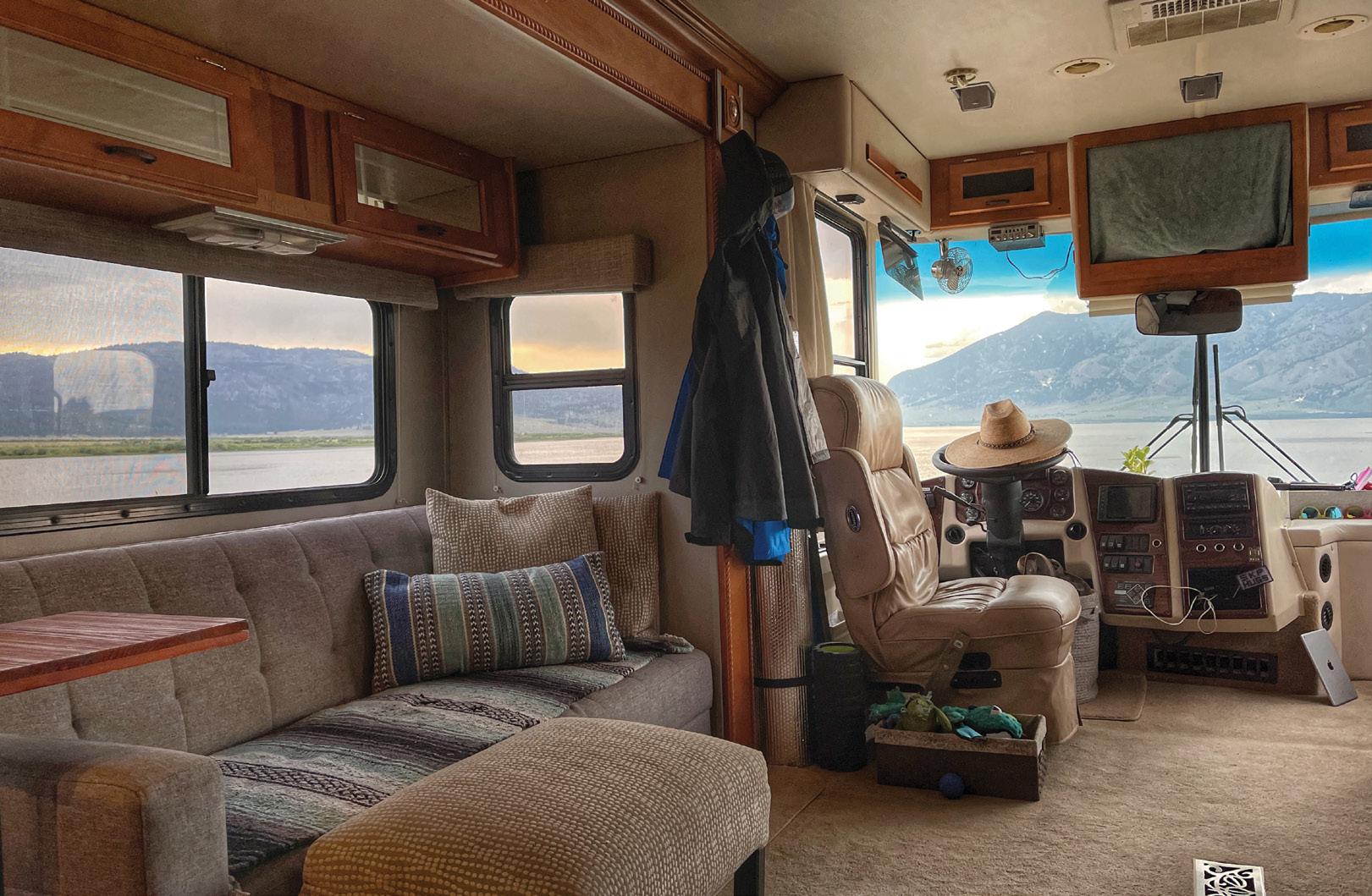
Close to Nature Room to Breathe Cost Savings
THE BASICS of how we navigate self-supported life and off-grid camping in our big rig:

☐ Solar: We installed 1,440 watts of solar on our roof, and upgraded to a new 3,000-watt inverter. This system powers everything we need in our everyday life.
☐ Generator: Our rig came with a 7,500-watt generator that is our backup power source and solution for cloudy days or extreme heat that requires more than an hour or two of air conditioning to cool off.
☐ Storage Tanks: We’re lucky enough to have a rig with huge storage tanks. We have 100 gallons of fresh water storage, and 75 gallons of both black and gray tank space These big tanks are the key to extending how long we can enjoy an off-grid camping location before having to move on.

☐ Propane: Our on-board propane tank is 40 pounds and fuels our fridge, water heater, and stovetop.
☐ Portable Solutions: We use smaller, portable solutions for refilling water and propane since our RV is large and not easy to navigate into gas stations or other places with smaller parking lots. We use a 60-gallon water bladder to refill our freshwater tank, and a five-pound propane grill tank with an extended stay fitting to supplement our propane supply.
Community and Flexibility
If you’re just starting out, don’t feel like you don’t have to go all in right away! Starting small with off-grid weekends or test trips is great. If you have friends who are used to camping off-grid, they can show you the way. Just get out there and enjoy our public lands with respect and care. ■
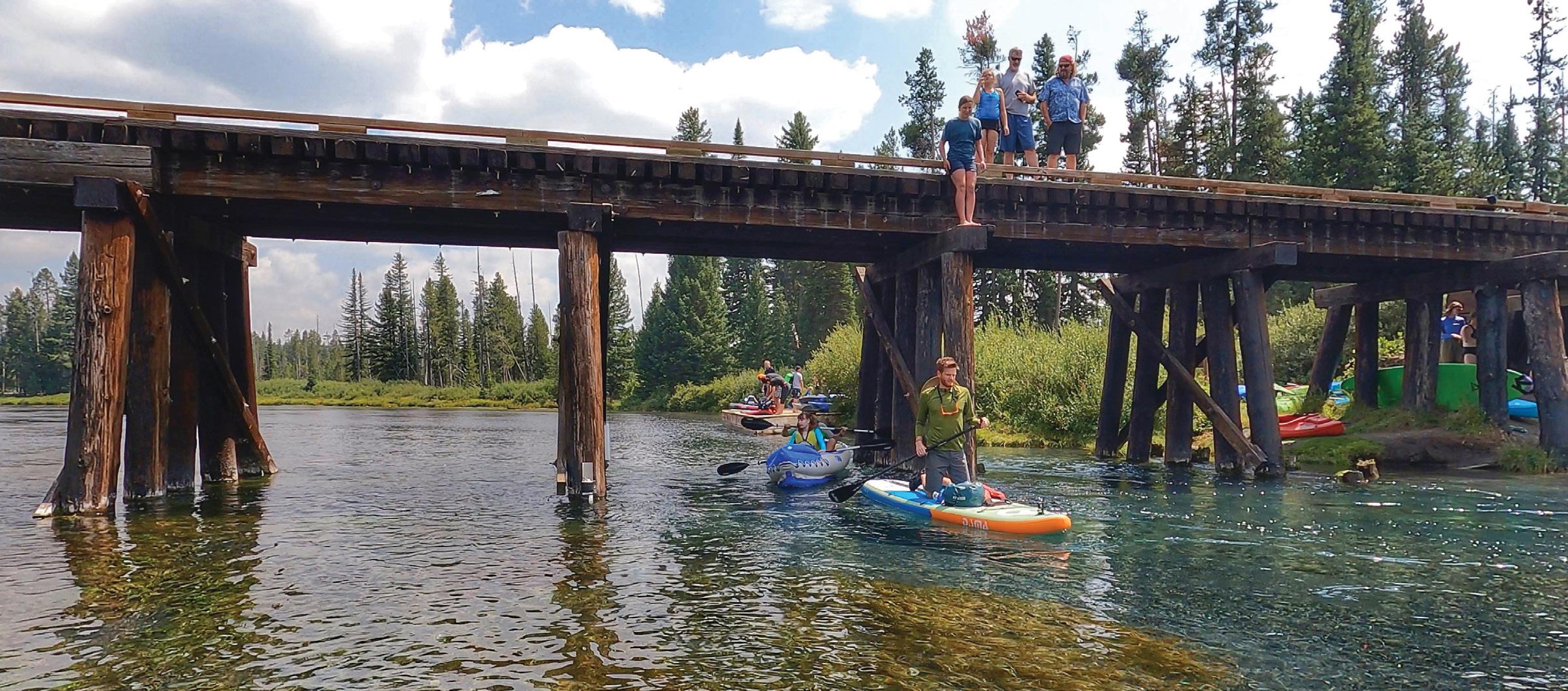 Follow Kristen Sargent on Instagram @perpetualmoves
Follow Kristen Sargent on Instagram @perpetualmoves
66 | RVTODAY.COM

DRY TORTUGAS NATIONAL PARK
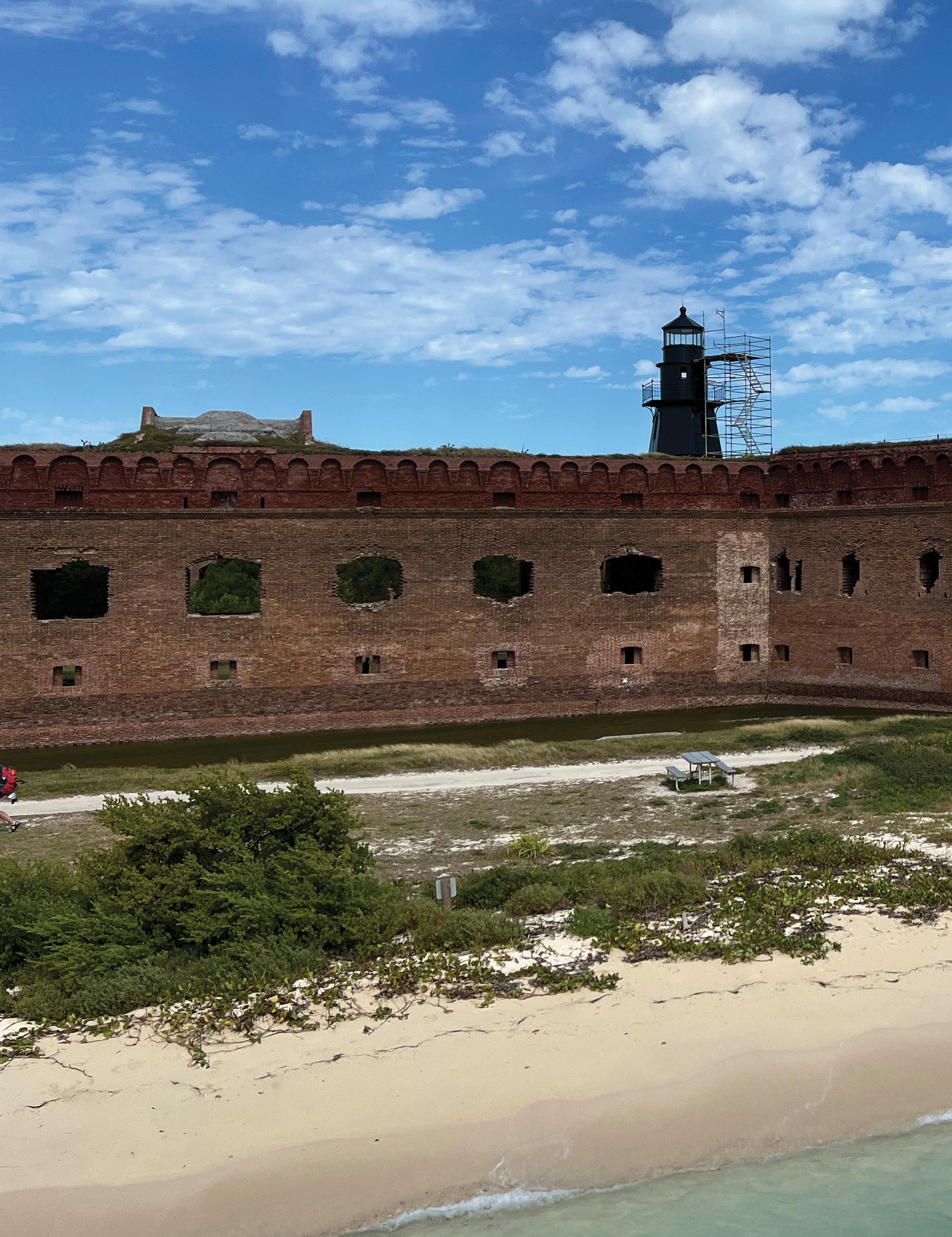
RV
By Nikki Kirk
68 | RVTODAY.COM
STAYcation

When you live and travel in your RV full time, you get the best of both worlds, with the ability to travel and be a homebody at the same time. But two things you’ll encounter sometimes in your travels are destinations where you can’t take your home on wheels with you, and destinations that require planning a year or more in advance. Key West and Dry Tortugas National Park are both.
We decided to extend our time in Florida to include the Keys when we were six months out and looking for a spot for January. If you know anything about RVing in Florida, you know this is pretty much impossible, as it’s the top destination for winter RV travel. On top of that, we have a 41-foot fifth wheel. RV parks in the Keys can definitely accommodate this … if you plan and book well over a year in advance. After a few weeks of calling around, I gave up and went with plan B—leave the RV at a park within driving distance and take an RV staycation!
I found out the city of Key West actually has local ordinances that restrict RVs and oversized buses from parking in some lots and on the city streets, due to the city’s historic nature and narrow roads. Even if we were lucky enough to grab an RV campsite elsewhere in the Keys,
we would still have an hour-plus commute to Key West, so leaving the RV behind turned out to be a great plan.
Our Key West itinerary included visiting Dry Tortugas National Park, our 19th national park since going full time. It’s one of the most remote national parks and requires adequate planning to visit. There are actually seven keys that make up Dry Tortugas—Garden, Loggerhead, Bush, Long, East, Hospital, and Middle.
FORT JEFFERSON
Fort Jefferson, on Garden Key, is named after President Thomas Jefferson, and its walls encompass 10 of the island’s 16 acres. Steeped in naval and maritime history, it’s the third-largest seacoast fortification the United States ever built.



Fort Jefferson was built between 1846 and 1875, with supplies coming from as near as the island itself and as far away as Maine. It was never completed due to fears that any more bricks or cannons would cause it to settle further and stress the water-collecting systems, which were designed to hold 1.5 million gallons of water in 110 cisterns. Fort Jefferson never saw any active combat, and in 1912 the Navy left the key, ending military presence on Dry Tortugas
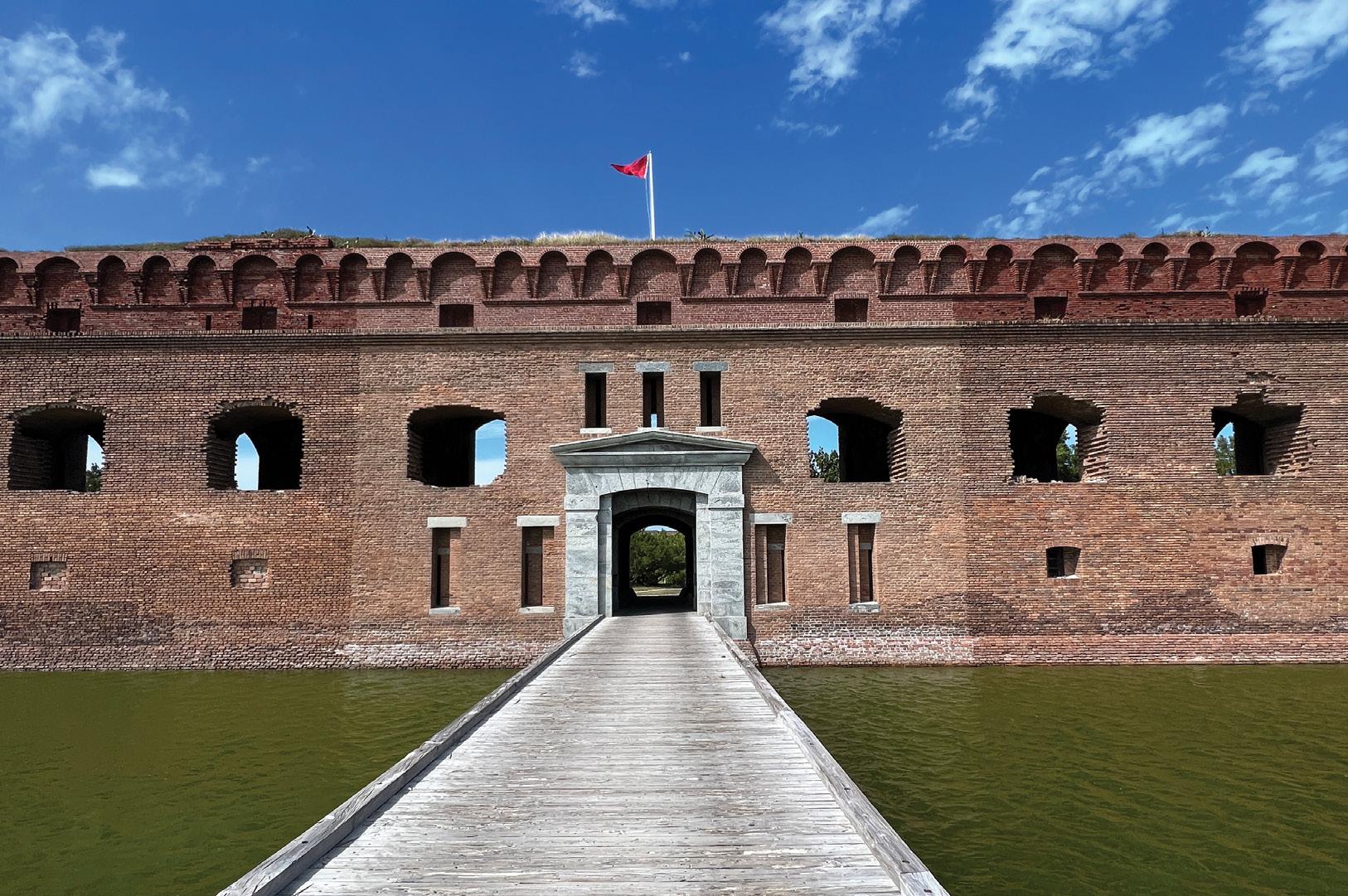

RV TODAY | 71
There are 2,000 brick arches in Fort Jefferson with a 70-foot-wide moat surrounding it.”
There are 2,000 brick arches in the fort and a 70-foot-wide moat surrounding it. In addition to the Harbor Light, there are six bastions, or defensive structures, each with its own granite spiral staircase to access all three levels. Dry Tortugas became a national monument first, in 1935, and was designated a national park in 1992.
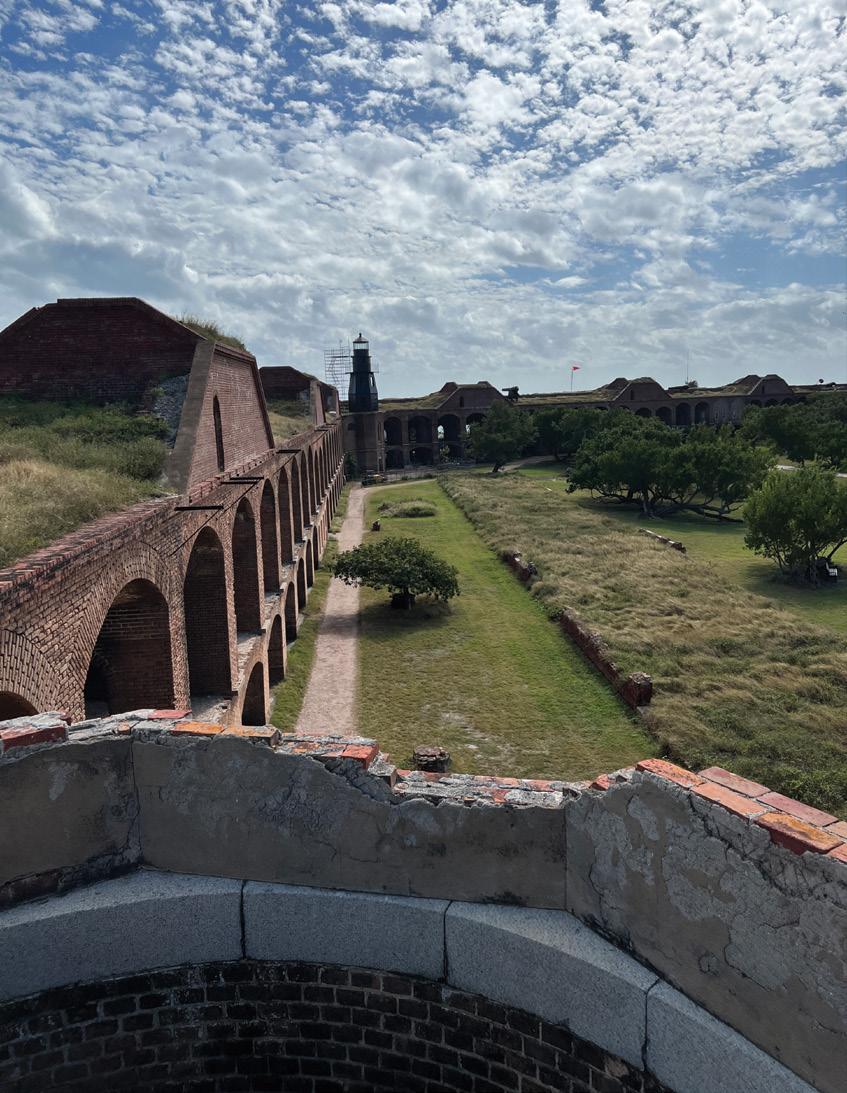

The fort has changed very little over the last 150 years. Today, visitors can walk inside, around, and on top of the fort, relax on the keys’ pristine beaches, snorkel the clear blue waters, and even camp for up to three nights.
GETTING TO DRY TORTUGAS
There are a few ways to visit Dry Tortugas National Park, the first being with your own boat. Like other national parks’ hiking permit systems, you can file a free boat permit with the National Parks Service if you plan to visit any of the seven keys— simply self-register at the Garden Key dock house. Going on your own boat allows you to visit all the keys, whereas the contracted ferry and seaplane services only take you to Garden Key.

The least expensive option if you don’t have your own boat is the Yankee Freedom Ferry. With your national parks pass, you can get reimbursed $15 per person, up to four
people per pass. The two-hour trip offers indoor and outdoor seating as well as free snorkel rentals on the key, and provides sandwich lunches with a cash bar on the return trip. Going by boat will be an all-day event, with about four total hours of your time on the boat. It does make for a fun trip, but if the weather is rough like it was when we went, you might be wishing you’d taken a seaplane.
For a little more money, Key West Seaplane Adventures takes you to Dry Tortugas for either a half- or fullday itinerary. Seaplane Adventures operates two 10-passenger planes, taking visitors to the park in just 40 minutes. They supply you with complimentary snorkeling gear, plus a cooler, ice, and water bottles.
While it does take some advanced planning to visit Dry Tortugas National Park, it’s almost impossible to predict the weather. We visited in late January when Florida had an unseasonably cool week, complete with windy conditions. Our boat ride was choppier than most, but once we arrived at Garden Key, it was everything the photos show you and more, full of untouched beauty ready to be explored. Our RV staycation was the perfect chance to get away, unplug, and enjoy one of the United States’ most remote and unique national parks. ■

72 | RVTODAY.COM




Our RV staycation was the perfect chance to get away, unplug, and enjoy one of the United States’ most remote and unique national parks.”
Through
RESOURCES FOR VETERANS TO SAVE MONEY AND GET OUTDOORS
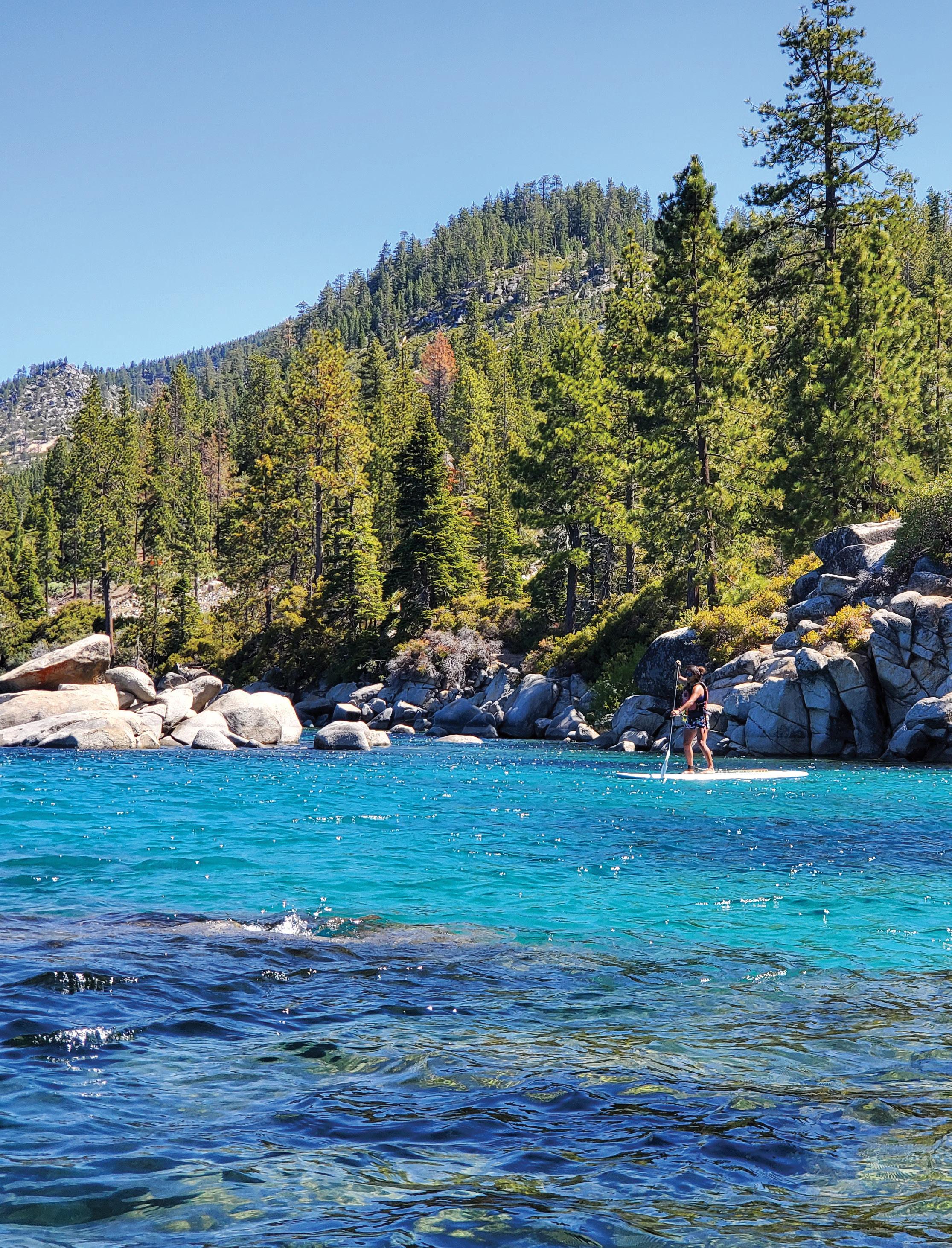 By Robert W. Bouchard Jr.
By Robert W. Bouchard Jr.
Nature
During our careers in the military, we never made it a priority to seek out military and veteran discounts. It wasn’t because we didn’t like saving money; we just never really thought of our day-to-day life as “service,” because it was what our jobs required. As we began to close in on the end of our careers with the Air Force and start planning for retirement, we were forced to look back at the years we served.
Something we discovered while we were still serving was that being out in nature provided a way for us to decompress, clear our minds, and facilitate healing when we needed it most. We realized the choice we had made to serve, and continued to make throughout those years, had come at a price, both physically and mentally
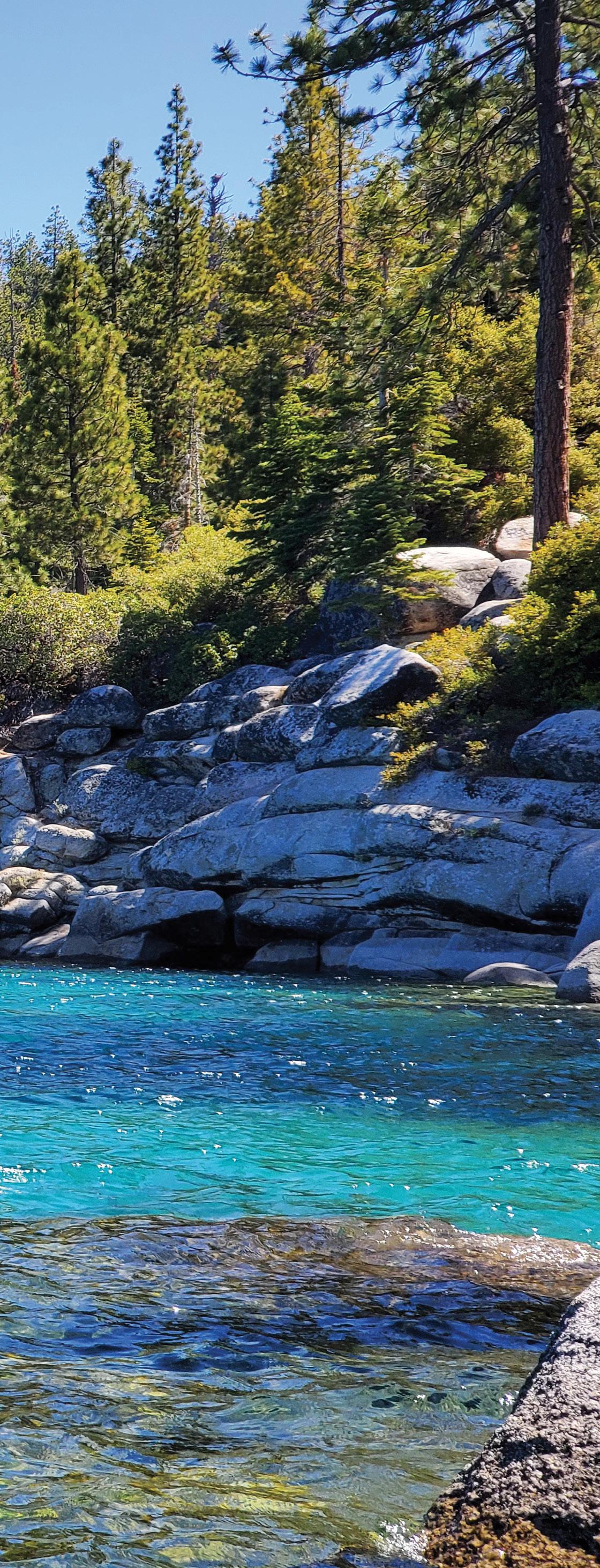
Although there are many ways for veterans to decompress, we know firsthand that easy access to the outdoors and connecting with nature can truly be life-changing for individuals coping with visible and invisible scars from military service. So when it came time for us to transition into civilian life, it only made sense for us to focus on getting out to seek the beauty this country has to offer
At first, when we retired and hit the road, we hadn’t considered the various benefits that would be available to us as veterans. We knew the basics, including asking about retired military or veteran discounts when making campgrounds reservations you’d be surprised at the number of campgrounds that offer a discount but don’t necessarily advertise it. As we’ve continued to travel, we began to find more benefits available to veterans that have helped us on our journey.
RV TODAY | 75
BENEFITS FOR CAMPING
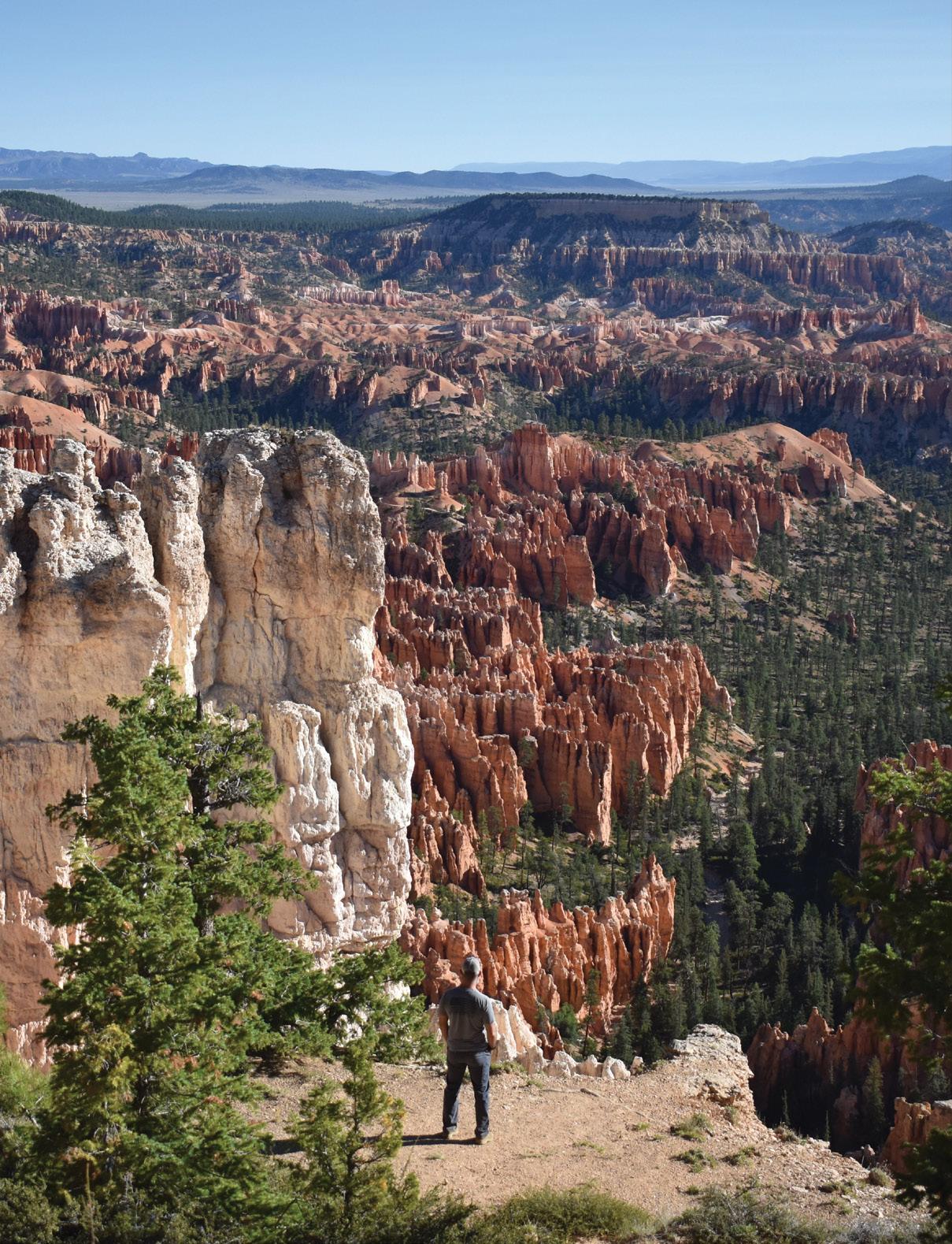
Military campgrounds: As a veteran, you have access to stay on military installations that have campsites, with prices ranging from about $20 to $35 per night. Amenities may vary, but typically include bathhouses, laundry facilities, and picnic areas. Campground sizes can range from a few overnight parking spots all the way up to 200-plus full-hookup RV sites. Every military installation has different requirements for when and how long you can make reservations for, so be sure to check directly with the specific installation campground for details.
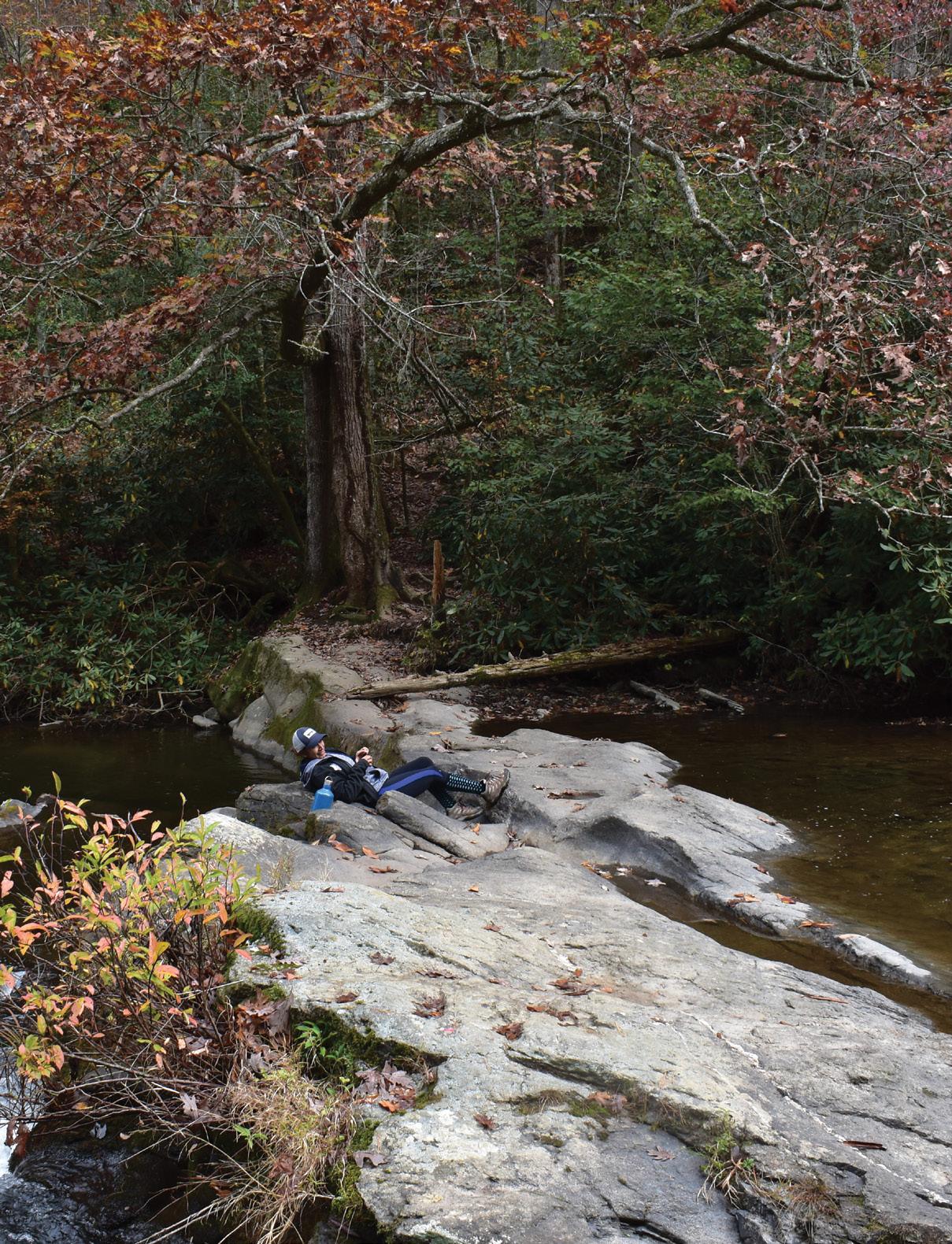
U.S. Army Corps of Engineers (COE) campgrounds: Although COE campgrounds are open to the public, there are discounts available to disabled veterans. COE is responsible for managing water recreation areas throughout the USA. Because of this, most of their campgrounds are located near a lake or body of water and not necessarily near military installations. Some of their facilities only have designated sites with picnic tables and a fire pit, but others have full hookups and waterfront views. Who doesn’t want to stay at a waterfront site for around $30 a night?
We have taken advantage of some of these campgrounds. We visited Desert Eagle RV Park, one of the bigger military campgrounds, located on
Nellis Air Force Base in Nevada. The campground offers 222 full-hookup sites and four partial-hookup sites. They also offer a tent camping area. There is a coin-operated laundry, plus restrooms and showers available onsite. We stayed in one of their extra-large concrete pull-through sites, which can easily fit any size rig. The site included 50-amp full hookups, which we definitely needed as we were there in the middle of summer.
When staying at military installations, expect aircraft flying overhead or nearby. Nellis is no exception, as it is home to the U.S. Air Force Thunderbirds demonstration team. We may be a little biased, but being able to sit outside our RV and watch these aircraft practice and fly around overhead was amazing. The campground is about 20 minutes away from the Las Vegas Strip, 40 minutes from Red Rock Canyon, and about an hour from Valley of Fire State Park.
We’ve also stayed at a COE campground in Waco, Texas. Midway Park is located on the shore of Waco Lake and offers 32 RV sites, of which only 11 have full hookups. Our site had 30-amp and water hookups. Though it wasn’t one of their 11 back-up waterfront sites, it was a corner spot with plenty of shade over the entire RV and more than enough space right outside our door. The site included a nice permanent
wood deck with a picnic table. The campground had restrooms and showers available onsite, as well as a dump station. The campground is about 15 minutes away from downtown Waco and the famous Magnolia Silos.
BENEFITS FOR GETTING OUTDOORS
U.S. National Parks: Our National Park Service now offers two different free passes to veterans. An annual pass is available to all honorably discharged veterans. This pass includes free access to more than 2,000 national parks, forests, and wildlife refuges. Additionally, for veterans with permanent disabilities, they offer a lifetime access pass. This pass includes all the benefits of the military pass along with additional discounts.
State Parks: Beauty is not limited to national parks; there are many amazing state parks throughout the country. Some states also offer military or veteran access passes to their parks. For example, Florida State Parks offers three different discounts for their Annual Entrance Passes. A 25 percent discount is available for active duty and honorably discharged veterans, while there are free lifetime passes available for serviceconnected disabled veterans and surviving spouses/ parents of deceased veterans. Other states offer various discounts and passes for veterans as well. For more information on veteran benefits in state parks,
visit the respective state park website.

One of the best ways to find these locations is the recreation.gov website, which includes national parks, COEs, and some state park campgrounds. It’s also a great resource for park shuttle tickets, wilderness permits, and lottery ticket entries. Additionally, if you have any of the national park passes, you can add them to your account and apply it to reservations for available discounts on campsites or tickets.
Keep in mind that you don’t need to be a veteran traveling full time to take advantage of these amazing benefits. There are so many incredible parks throughout our country that you can easily find a place near you to get outdoors, find serene campsites, visit majestic views that calm the soul, and explore everything nature can provide. ■
 Follow Bob and Grace Bouchard on Instagram @2veterans.onthemove
Follow Bob and Grace Bouchard on Instagram @2veterans.onthemove

RV TODAY | 77
A TRAVEL PHOTOGRAPHER’S BUCKET LIST ROAD TRIP
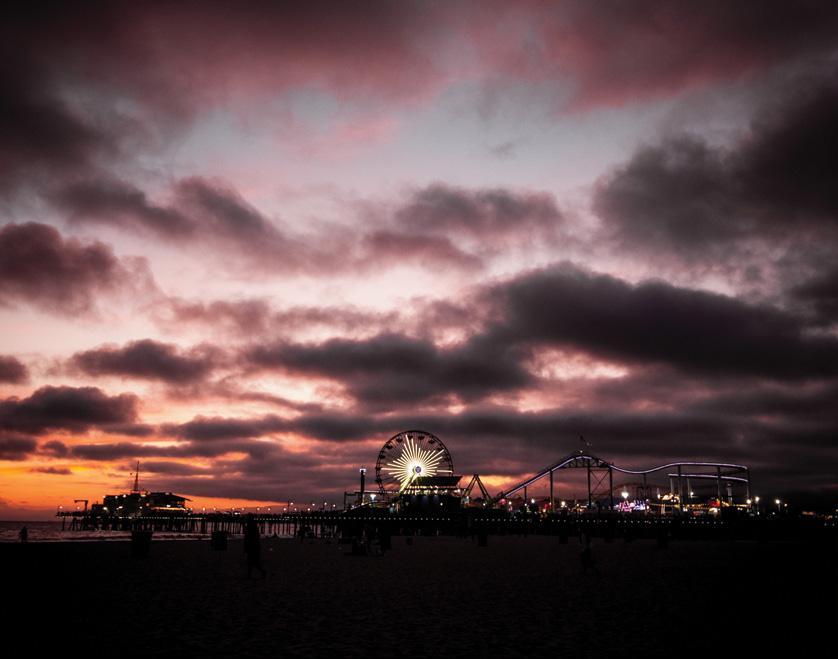
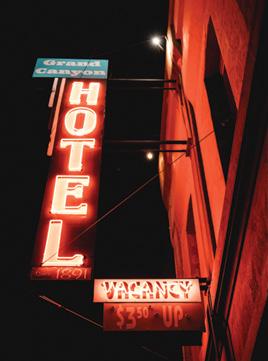 By Joy Newcomb
By Joy Newcomb
When thinking of an ultimate road trip, Route 66 is usually at the top of a short list. Historically, there are multiple landmarks representing eras from the 1920s through the 1970s. It’s a glimpse into a disappearing part of United States history, and it travels from the Midwest to the West Coast, through a wide variety of landscapes.
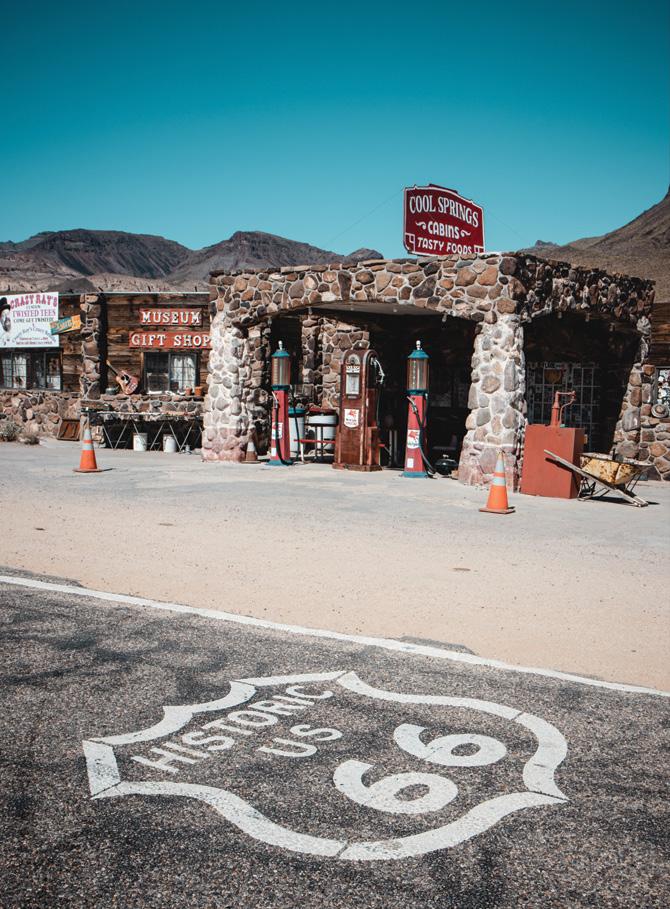
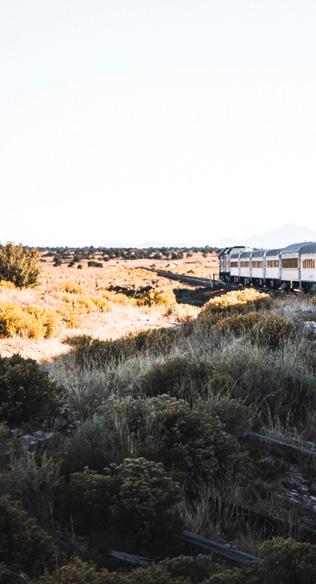

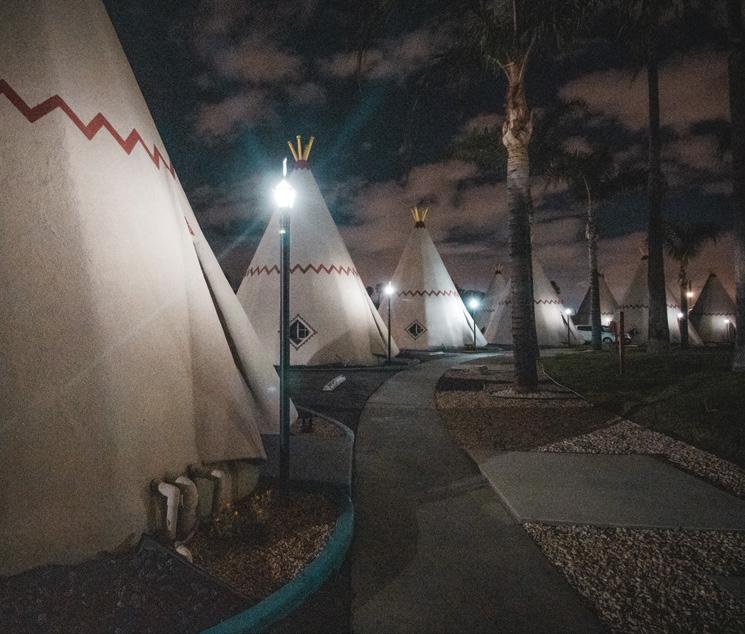


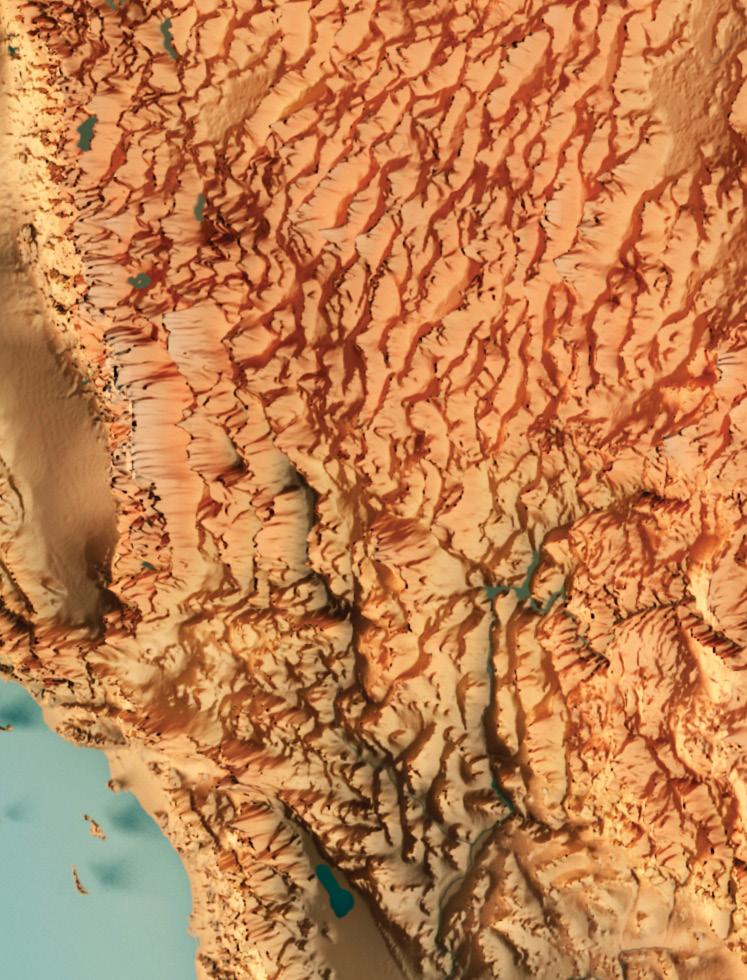
THE BACKSTORY
As a kid, I would hear stories from my grandparents about trips they took to visit family. Leaving from Ohio, they would head northwest to Chicago and weave their way into Wyoming and Montana. These were summer trips they took with my mom, my aunt, and my two uncles, using vacation time they had saved up. Eventually, I was able to finally see and experience what I only imagined. My grandparents decided to take each of the six grandkids on a three-week journey across the country when we turned 12. I was the oldest, so my trip came first. We drove from Ohio to Casper, Wyoming, up to a family’s ranch in Montana, into Oregon and Idaho, and then back to Ohio. We stopped at historic locations, including the Gateway Arch, Mount Rushmore, Yellowstone, Craters of the Moon, our family’s homestead in Montana, and the Corn Palace.
Along the beginning sections of our trip, I would see signs that said Historic Route 66. When my grandmother told me of the highway, explaining that it went from Chicago to Los Angeles and was a way to see America, it immediately became a goal. I wanted to see it and explore it. Thirty-five years later, it became a reality.
I had traveled parts of Route 66 when I initially moved to Los Angeles, and I spent countless hours on the pier in Santa Monica during my 15 years living in the city. I had never actually planned a trip specifically for this classic highway, but I knew the Santa Monica Pier was the end of the route. The sign, slightly inconspicuous and underwhelming, sits about halfway along the pier—not what I would have expected from a historic landmark and location.
PLANNING MY ROUTE ALONG “THE MOTHER ROAD”
When I purchased my first RV, I began planning my trip across the country. Since I wasn’t getting on the road until late in 2018, I knew heading north would be short-lived. Winter would quickly set in, highways could be closed, and since I had just begun my journey into RV life, I wanted to make my first trip a bit more memorable.


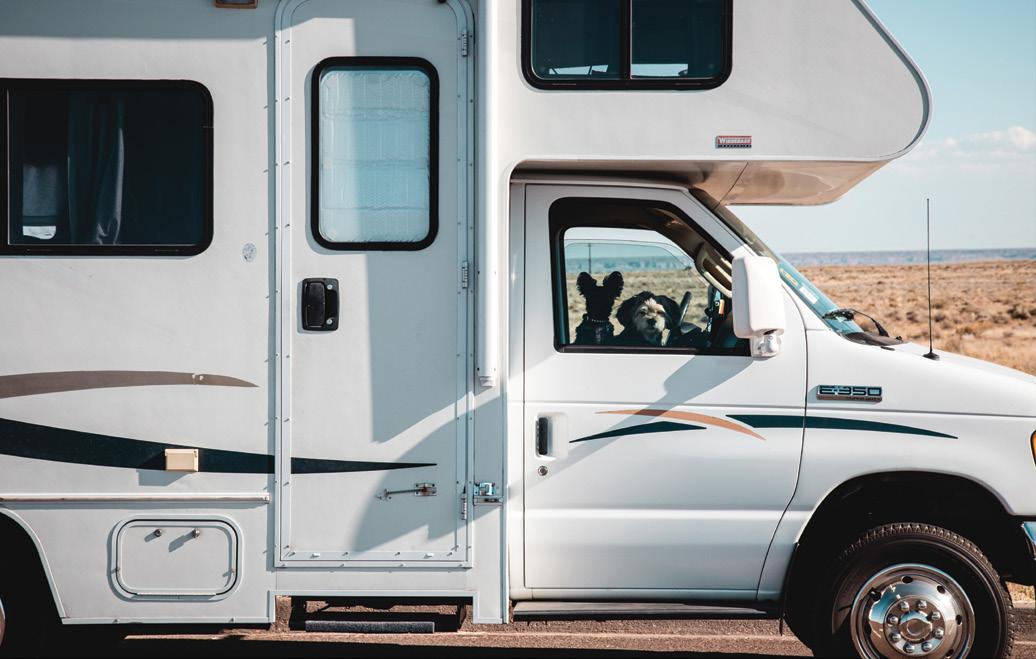
I decided I would visit family I hadn’t seen in a couple of years, and chose to plan my drive back to Ohio via Route 66. I began looking at various maps, blogs, and potential stops along the way, basing my research on my own interest as well as photography potential.


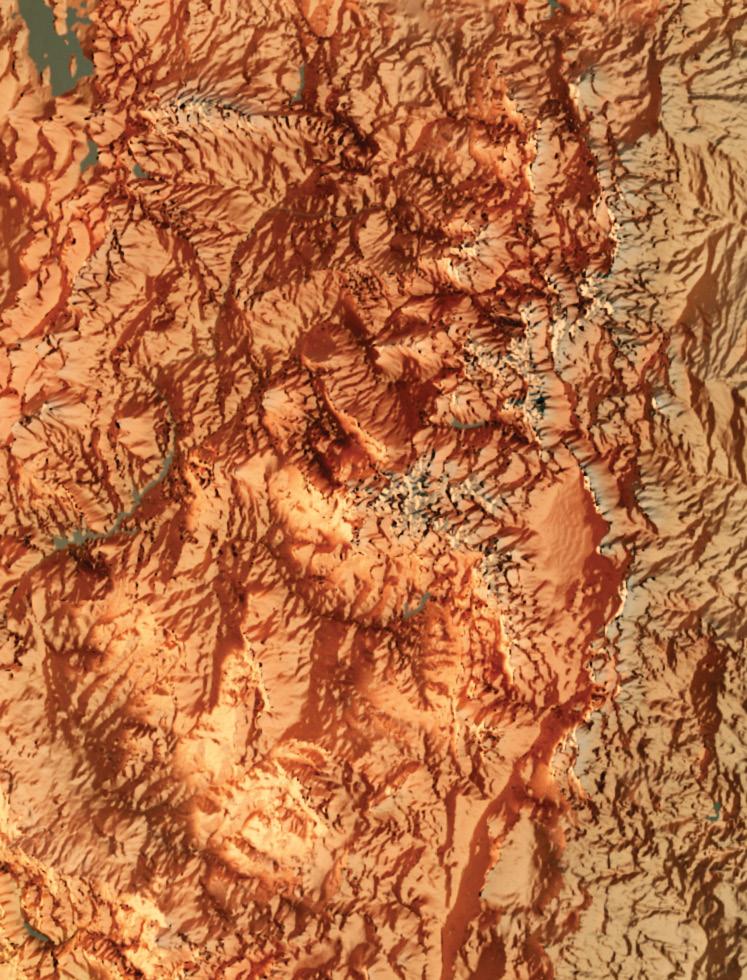
RV TODAY | 79
State Highlights
Each state captures a section of the famous highway in their own way. With museums, tourist stops, restaurants and a few giants along the way, the key is to choose one or two you want to prioritize, and if time allows, add a few more as you travel.

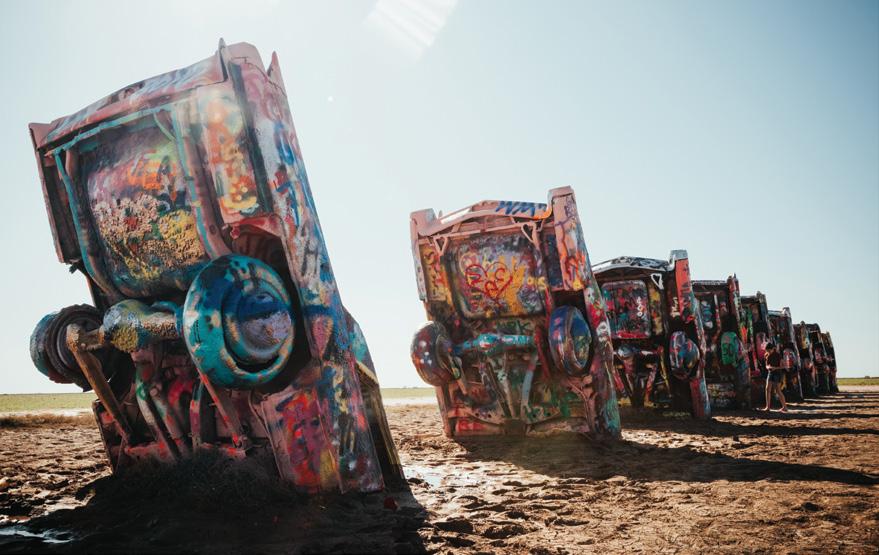
CALIFORNIA: Santa Monica Pier
ARIZONA: donkeys, the Grand Canyon, and a petrified forest
NEW MEXICO: multiple small western towns


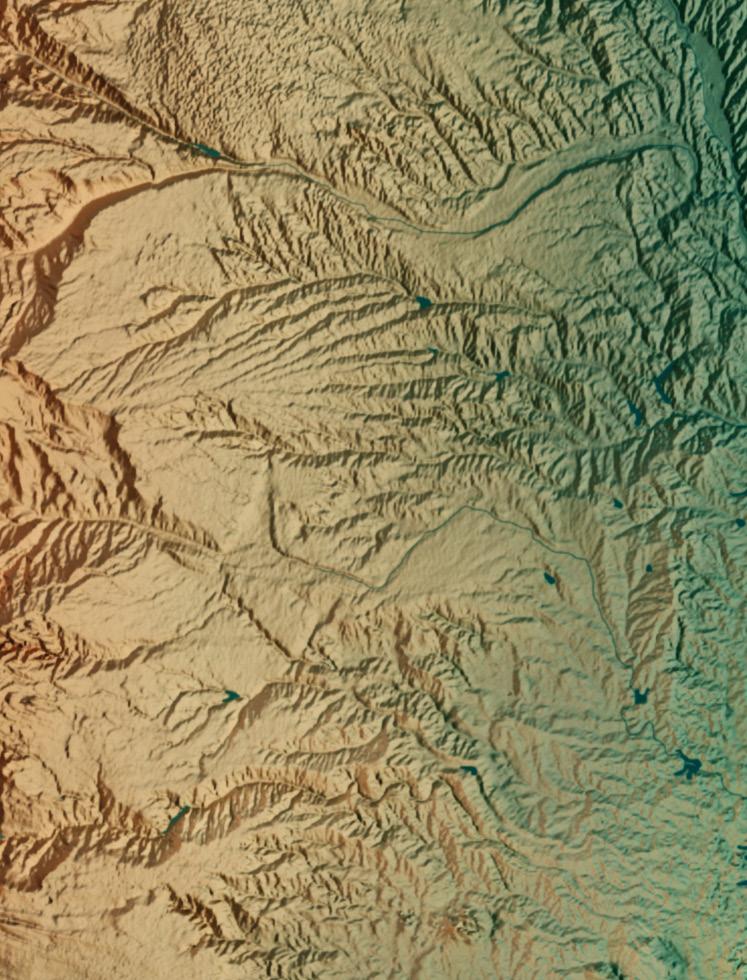
OKLAHOMA: the Blue Whale of Catoosa
KANSAS: a small corner of the Route, yet still memorable
MISSOURI: quite a few small gas stations and significant landmarks
ILLINOIS: a presidential stop, a brick road, and the beginning of Route 66


I highly recommend “Route 66: EZ66 GUIDE For Travelers” by Jerry McClanahan, which is a great resource for maps, points of interest, road issues, and limitations. It’s really the ultimate guide to navigating the route. There are also apps you can download, but personally, I enjoy maps and found the book to be tremendously helpful.
Using the guide, I went through each state and highlighted places I wanted to see. This allowed me to map out my route and plan my stops as I traveled across the country. I read as much as I could and roughly plotted my trek. It does take some planning—I needed to be aware of height limitations, road restrictions, and road closures.
If planned correctly, you can make this trip in a couple of weeks, with lots of stops, places to check out, donkeys to pet, whales to visit in Oklahoma, switchbacks to fear, food to experience, and people to meet.
BENEFITS OF TRAVELING ACROSS THE COUNTRY
Route 66 is an eye-opening experience and photographic bucket list dream. The landscape changes tremendously as you make your way east, from the ocean to the city, mountains to the desert, farm lands to more cities, and ending at Lake Michigan. Not only will you see how the scenery changes, you’ll also notice the world slowly becomes green. A wider variety of color begins to surround you and changes with each mile you travel. Architecture changes, too, from the style of buildings, colors, use of neon, structures, designs, and more.
If you stop for long enough, you can chat and meet people who grew up along the mother road, hearing their stories of what they remember and how their parents were influenced by the history of the highway. There are historic locations lovingly passed on through generations, places that are a stamp of a time that no longer exists.
DOWNSIDES OF TRAVELING THE FAMOUS HIGHWAY
It doesn’t exist. That is, the highway as a whole no longer exists. Route 66 was established on November 11, 1926, and was decertified in 1985. It covered 2,448 miles, but as technology advanced and towns expanded, the original highway moved, and parts of the original road aren’t there anymore. Some parts of the road—including Oatman, Arizona, known for the wild burros that still wander the streets—also have length limitations.

While traveling, you will see the abandonment, the change, and how one highway impacted so many small communities. It’s especially noticeable in the western half of the trek—many buildings sit empty as motels were replaced by updated hotels and diners by fast-food stops. Sideshow attractions are overgrown, and there are miles of empty road or historic locations that are not open, but can still be visited.

THE BEST TIME TO TRAVEL ROUTE 66
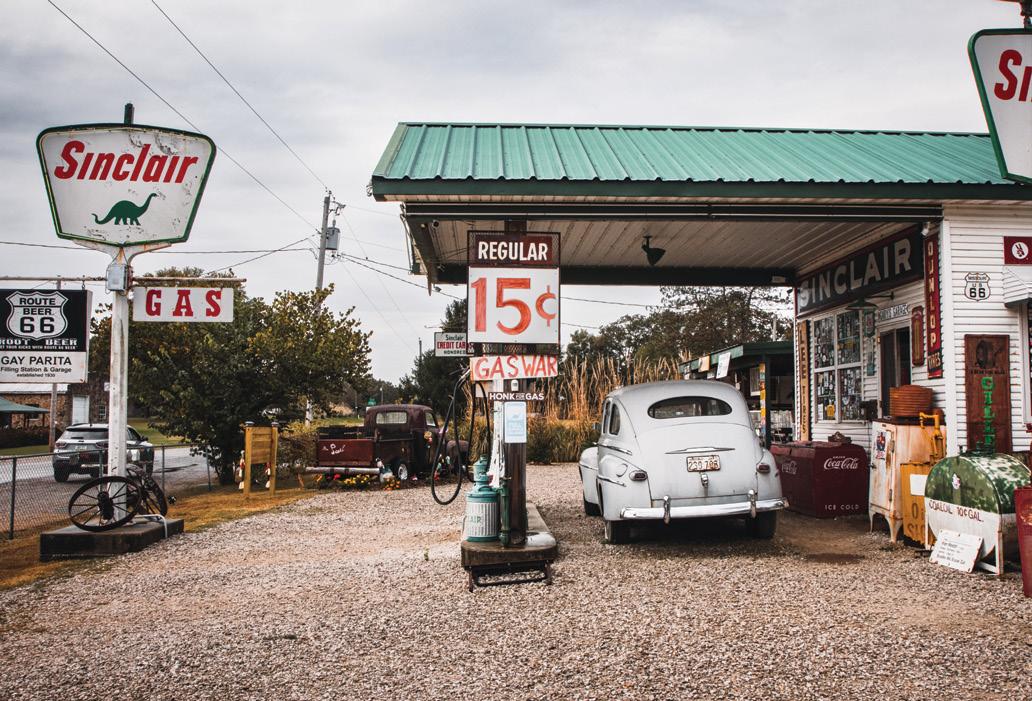

You can really travel Route 66 anytime, but I would recommend August through October. If you are heading west to east, the weather may be warm, and you could find yourself driving into gorgeous fall color as the leaves typically begin to change in September and October in the Midwest. Even if you are coming from the east, it would be the end of summer, and while it’s still fairly warm, I ended up in 20-degree weather at the Grand Canyon in September. Personally, I think you could travel this road multiple times and see something new every time.
I plan on traveling this road again a few times, including a start in Chicago. I’m hoping as the years pass, the love of history continues to grow and lead to new visitors, revitalizing areas that need the positive impact of travelers who prefer to take the scenic route.
Whether you’re a fulltime or part-time traveler, be sure to add the Mother Road to your list of travels to take—it’s worth every mile.

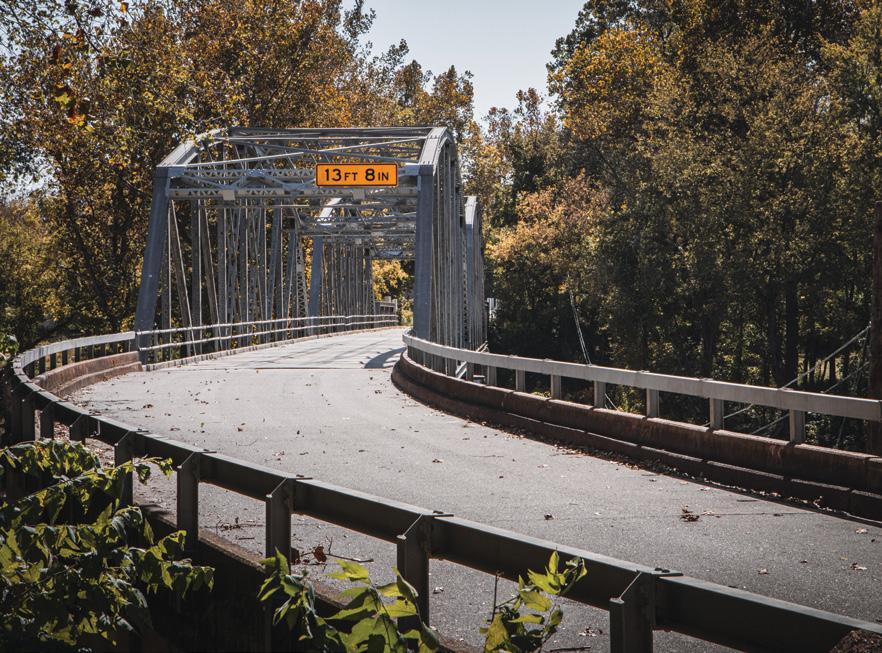
RV TODAY | 81
TRAVEL GUIDE
By Kathryn Frazer
Located in South Dakota, Badlands National Park is one of the most underrated national parks in the United States. Despite its name, it is anything but a bad experience.
In fact, when it was first suggested to be a national park, it was almost named Wonderland National Park. With many geological features, the largest undisturbed mixed-grass prairie in the United States, a variety of wildlife, a mix of easy to moderate hikes, and one of the richest fossil beds in the world, Badlands National Park is guaranteed to instill wonder in anyone who visits.

Overlook
Big Badlands
DID YOU KNOW?
● Badlands is one of two national parks in South Dakota

● Became a national park on November 10, 1978
● Lakota called the area “mako sica,” which means “bad lands”
● The park is home to bison, bighorn sheep, prairie dogs, and fossils
Notch Trail
RV TODAY | 83
ABOUT BADLANDS NATIONAL PARK
Badlands National Park became a national monument in 1939 before becoming a national park in 1978. The park is home to a geologic formation called badlands, which is a type of dry terrain with soft sedimentary rocks and clay-rich soils that have been eroded by wind and water.
The area was used as a hunting ground by the Lakota, and they called it “mako sica,” which translates to “bad lands.” When French fur trappers encountered the area, they echoed the same sentiment, calling it “les mauvaises terres à traverser,” which means “bad lands to travel across.” This is because when it rains, the terrain becomes slick and sticky, and the area experiences cold winters and hot summers.
HOW TO GET THERE
Badlands National Park is located in southwestern South Dakota, about 1.5 hours east of Rapid City and 2 hours east of the Black Hills, which are both great road trip stops in South Dakota. If you’re flying in, the best airport is Rapid City Regional Airport.
Badlands National Park encompasses 244,000 acres over the North and South units. We’ll focus on the North Unit in this travel guide, which offers the most iconic sights in the park.
To fully explore Badlands National Park, you will need your own vehicle, as there are no shuttles to take you around. Any type of vehicle will be fine, and there are RV parking spots throughout the park.

WHEN TO VISIT
Badlands National Park is open every day, except for weather closures. And when it comes to weather, the park experiences it all, with an average of 12 to 24 inches of snowfall during the winter, and warm temperatures, rain, and thunderstorms during the summer.
If you want the best weather and fewer crowds, we suggest visiting between April and May or September and October.
WHERE TO STAY
Inside Badlands National Park Badlands National Park has two campgrounds, the Cedar Pass Campground and Sage Creek Campground. RVs are not allowed at Sage Creek Campground.
The park is also home to the Cedar Pass Lodge, which has cabins you can stay in. And if you want to rough it, the park allows backcountry camping as long as you set up your camp at least a half mile off of a trail or road and are not visible from the road.
Outside of Badlands National Park There is a KOA south of the visitor center, making it a convenient home base outside of the park. If you prefer to boondock, just outside of the park’s boundaries is a spot called Nomad View, which is one of the coolest free camping areas we’ve ever stayed at.
At Nomad View, you can park your RV or set up your tent right at the edge of the Badlands. This is a very popular spot, so don’t expect solitude, and please remember to leave no trace so it can continue to be enjoyed by others.
Door Trail
THINGS TO KNOW
Entrance fee Visiting Badlands National Park costs $30 per vehicle, which covers seven days inside the park. We recommend getting the America the Beautiful pass, which is $80 per year and gets you into all National Park Service managed sites and federal lands.
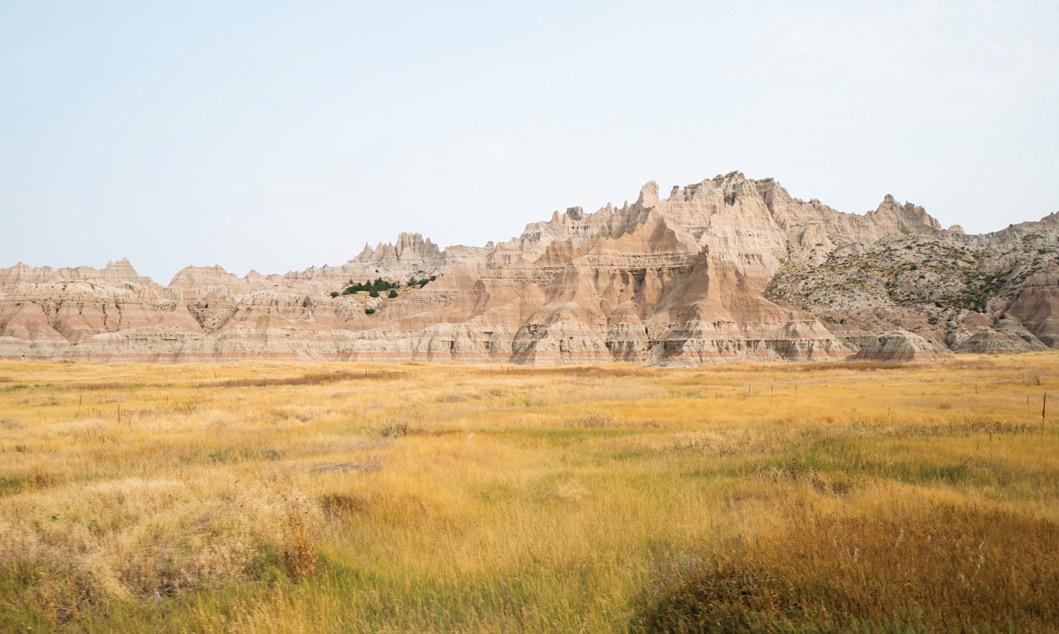
Dogs are not allowed Just like most national parks, dogs are not allowed on trails at Badlands National Park. They are allowed at campgrounds and on roads, including backcountry dirt roads.
Beware of wet ground If the Badlands are wet, they are very slippery, and you will get clay stuck to the bottom of your shoes. If you plan to visit during a rainstorm or shortly after, we suggest sticking to the paved trails.
THE BEST THINGS TO DO
Drive Badlands Loop Road Unlike many national parks that require longer hikes to see the best scenery, you can see many great views from the road at Badlands National Park! One of the best things to do in the park, especially if you’re short on time, is drive the Badlands Loop Road.
This is the main road that runs through the park, and it takes less than an hour to drive, but we recommend allotting at least half a day, as it is where you will find the most popular attractions, including trails, the Ben Reifel Visitor Center, and 12 overlooks.
Our favorite overlooks were the Big Badlands Overlook

(which is great for sunrise), the White River Valley Overlook, Panorama Point, Pinnacles Overlook (which is great for sunset), and the Yellow Mounds Overlook, which has unique yellow badlands that get their color from a mineral called goethite.
Hike one of the many trails Badlands National Park has a variety of trails. Most of them are less than 2 miles, and some are paved, making them very accessible!
Notch Trail, Miles (round trip): 1.3, Elevation: 131 feet
The Notch Trail was our favorite hike in the park! As you hike the trail, you’ll go through the badlands, with their walls surrounding you, before reaching the best feature of the hike, a wooden ladder.
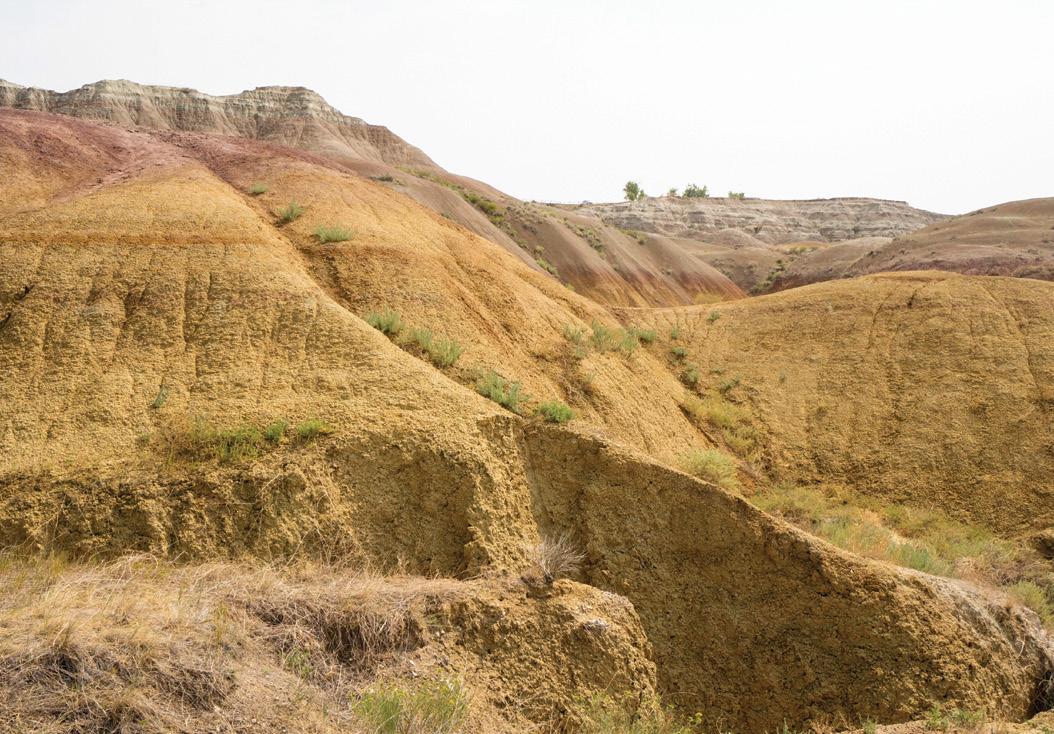
This ladder is a ton of fun to climb, and once at the top, you will continue along some ledges and back down through the badlands before reaching a gorgeous viewpoint at the end. We suggest doing this hike first thing in the morning so you can enjoy the ladder without many other people.
Window Trail, Miles (round trip): 0.3, Elevation: 13 feet
This short hike on a wooden boardwalk ends at a viewpoint that provides a window into the badlands.

Door Trail, Miles (round trip): 0.8, Elevation: 36 feet
The Door Trail is also an easy walk on a boardwalk and ends with an opening that acts as a doorway to walk into the badlands. From here, you can follow numbered poles farther into the badlands, with views that truly make you feel like you’re on another planet!
Window Trail
Drive Badlands Loop Road
RV TODAY | 85
Yellow Mounds
Saddle Pass Trail, Miles (round trip): 0.7, Elevation: 216 feet This short hike to Saddle Pass gives you a unique view of the White River Valley, with some badlands jutting out of the surface
Castle Trail, Miles (round trip): 11, Elevation: 314 feet
The Castle Trail is the longest maintained trail in the park and is a good way to get off the beaten path from the popular tourist spots. This trail will take you to the Fossil Exhibit Trail and on the Medicine Root Trail. You can also combine it with the Saddle Pass Trail for an even longer adventure!
Visit the Fossil Preparation Lab If you’re interested in seeing paleontologists at work, visit the Fossil Preparation Lab! The lab is open from mid-June to late September and gives you the chance to see paleontologists prepare and categorize the fossils found in the park.
Drive Sage Creek Rim Road Another popular scenic drive in the park is Sage Creek Rim Road, which is a dirt road that is safe to drive in any vehicle.
Along this road you can find three overlooks— Hay Butte, Badlands Wilderness, and Sage Creek Basin—all of which are quick roadside pull offs. This road is also a great place to see wildlife, including bison, bighorn sheep, and prairie dogs. Roberts Prairie Dog Town Roberts Prairie Dog Town is located on Sage Creek Rim Road and is a huge prairie dog habitat that is guaranteed to put a smile on your face.
Here you can watch prairie dogs play and pop in and out of holes, plus hear their cute little screams. These prairie

dogs are very friendly, but despite what you may hear or see from others, you should not feed or pet them! We know it’s tempting, but it’s against National Park rules.
Visit Wall Drug Although it’s technically 10 minutes outside the park, no trip to Badlands National Park is complete without a stop at the iconic Wall Drug. What started in the 1930s as a spot offering free ice water to travelers now attracts more than 2 million people per year!

While it is pretty touristy, it’s a whole lot of fun. Be sure to walk around all the different shops, grab a five-cent coffee, and eat one of their famous cake donuts, which are phenomenal
Badlands National Park is unlike any other national park we have visited and we hope you enjoy the park’s unique and otherworldly scenery. Don’t forget to enjoy a donut for us, too! ■


@adventuresofaplusk
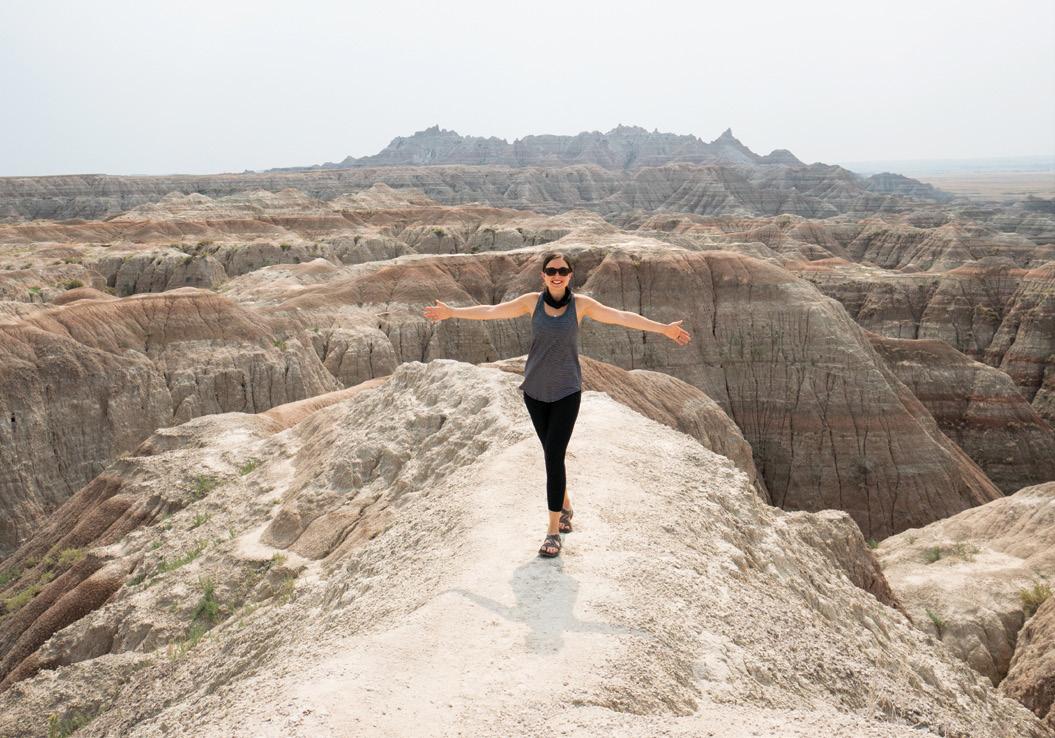
Natch Trail Wooden Ladder
Prairie Dog
86 | RVTODAY.COM
White River Valley Overlook
Follow Kathryn and Adam Frazer on Instagram
Expandable Solar

System tiers for all budgets

Custom fabrication for desired system intergration
LIFESTYLE. POWER. BUDGET. SOLUTION.

When we see a problem, we don’t just find a solution; we help make changes in the industry you’ve been waiting on that make your journey easier every single day. The products our team uses are the most innovative products on the market and we take the time to learn them inside and out so you don’t have to. With over 35 years of industry expertise, our team can design, fabricate, and install the Solar and Lithium system that’s fits your rig perfectly to make your battery life bigger.
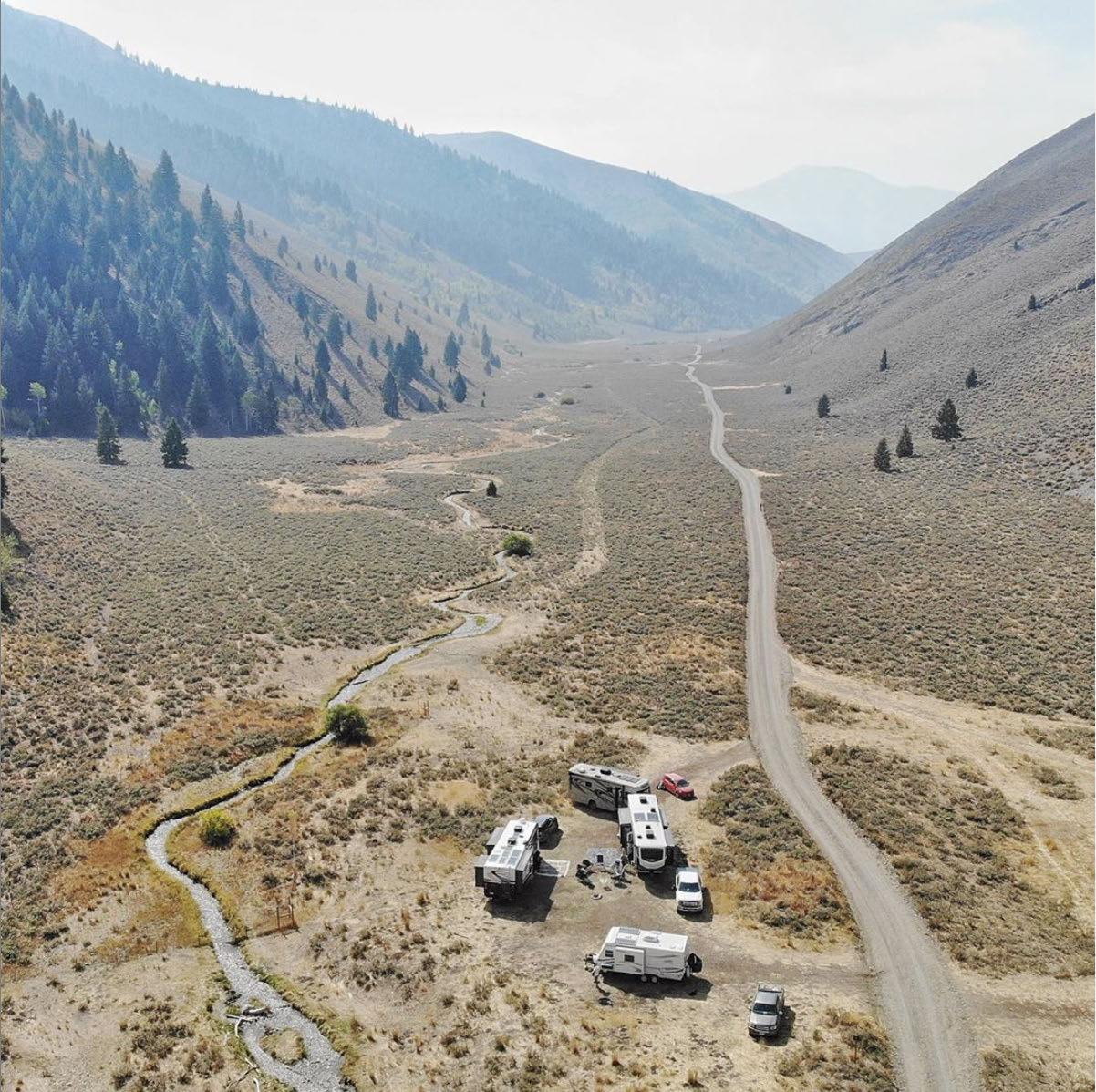
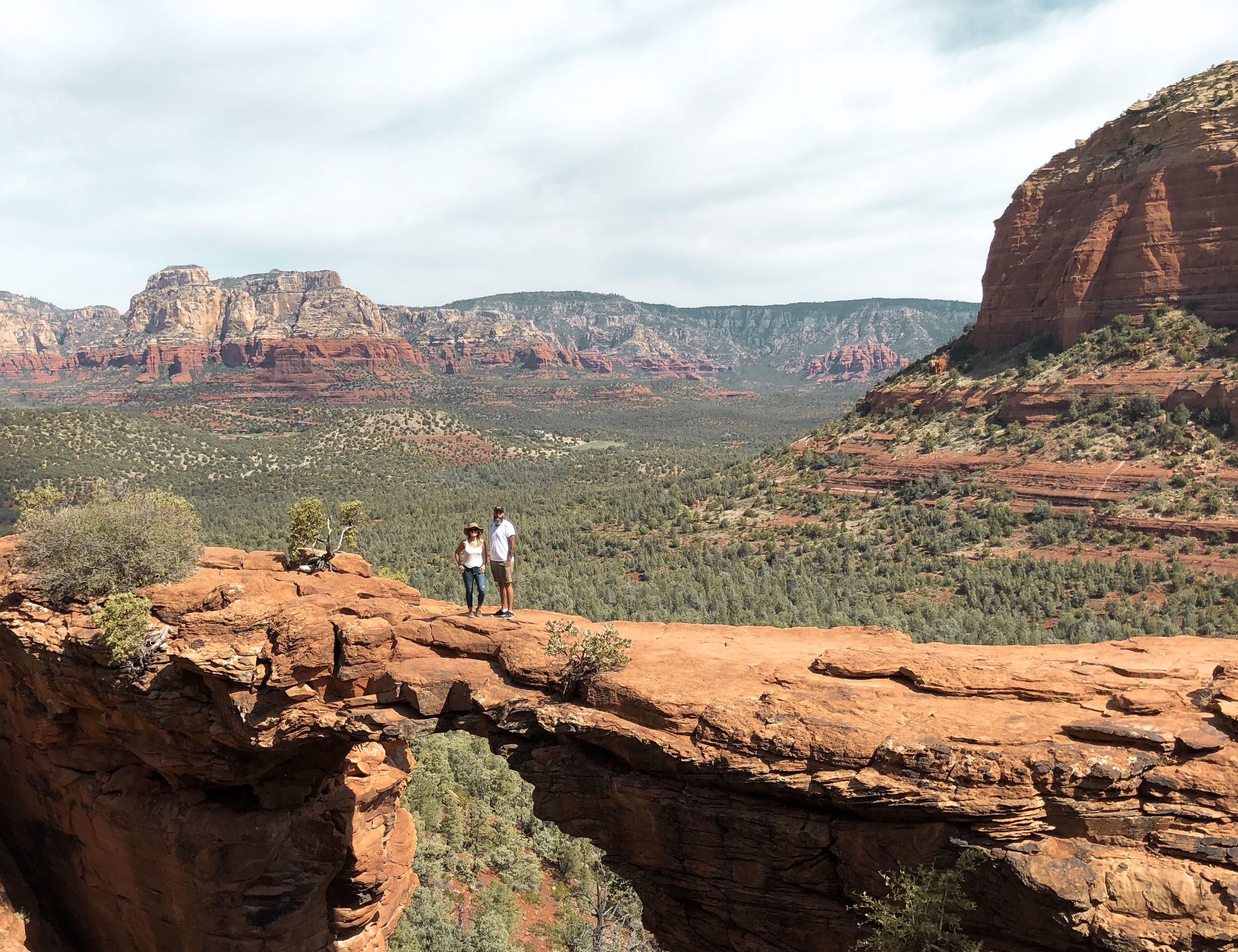
Products Approved 10RVer
Want some suggestions for products that will make your life easier on the road? We have them here for you! These products will help you take the chore out of making the bed; relax, play, and sway outside; get clean water to your next campsite; and even help you with laundry. Check them out.
Bluetti Portable Power Station
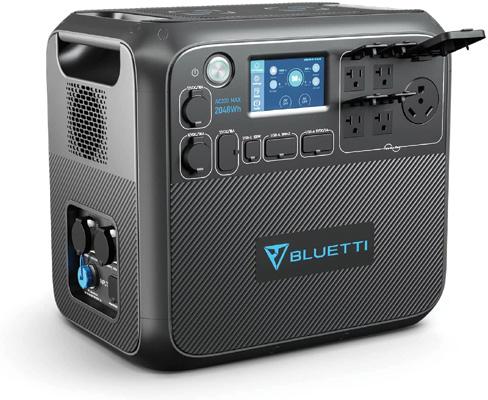
Stay powered up when you’re off-grid with this portable power station. The expandable system also connects to solar. It’s great for camping or at-home emergency use.
Outsunny Foldable Picnic Table

Compact, lightweight, portable, and beautiful, this outdoor picnic table set is the size of a long suitcase and even comes with a handle so you can carry it easily! It provides enough seating for four children or adults of medium size to sit comfortably. It’s sturdy and includes an umbrella hole. It’s also really simple to set up or take down
Lavario
If the idea of a washing machine in your RV sounds like a luxury, check out the Lavario portable clothes washer. It works by handpumping the handle. It’s non-electric, easy to drain, and a great way to clean clothes on the go.


Beddy’s
Do you struggle to make the bed in your rig? Here’s a solution. Beddy’s is an all-inone bedding set with zippered sides that makes making the bed in your RV a breeze! Different styles and sizes are available.

88 | RVTODAY.COM
Quik-Set by Clam Pavilion
Play or relax in the shade with the Quik-Set by Clam. The best thing about this screen room is that it can be set up by one person alone in just a minute or two.
Cameo 25’ TastePURE Hose

Connect to fresh water without that garden-hose taste. This hose is BPAand phthalate-free and is NSF-certified drinking water safe.
Footwell Water Tank by Front Runner
If you’re looking for an ingenious way to carry extra water, you’ve just found it. Front Runner offers sleek designs for water tanks, like this footwell water tank. Many of them fit most vehicles, but double-check the specs first to make sure it will fit in yours.
Pod Rocker Chair
Sway away while you’re protected from the sun in this pod rocker by GCI Outdoor. The canopy is UPF 50 and the entire chair folds up compactly to help you carry it anywhere, including the beach, park, or campground.

Rollercam
Increase the holding force of your cam straps with Rollercam. Their line of products use special technology to decrease friction. They’re perfect for keeping things in place when you’re out adventuring.
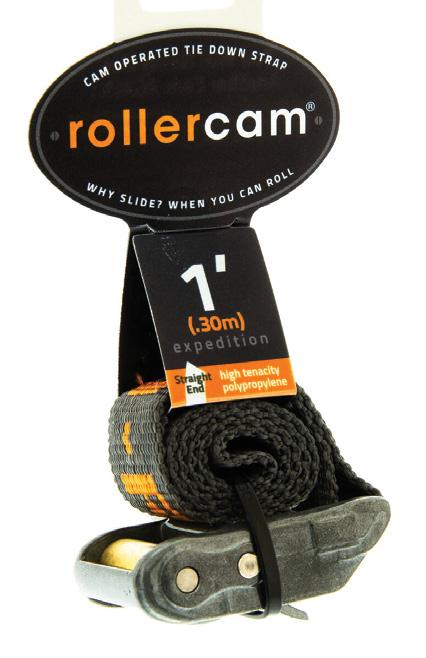
Solid Step by Lippert
Foldable and stable, Lippert’s Solid Step is a great addition to any RV entryway. These steps keep you safe and sound stepping in and out of your RV, and are available in double, triple, and quad. ■


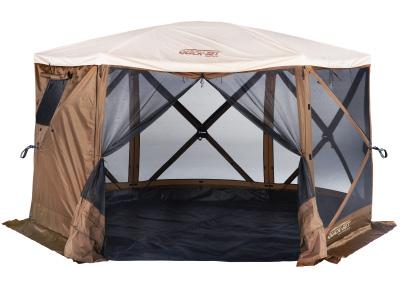
89 | RVTODAY.COM RV TODAY | 89
Events
Upcoming RV Events and Rallies

Stay connected with fellow RVers at these 2022 events
JUNE
Nebraska Good Sam Rally
June 2–5
Hastings, NE
Tennessee Trailblazer Express
June 3–16
Nashville, TN–Charlotte, SC
Escapees 61st Escapade
June 19–24
Lebanon, TN
JULY
People’s Tiny House Festival
July 16–17
Loveland, CO
Winnebago Grand National Rally
July 17–21
Forest City, IA
Van Nationals
July 20–24
Old Washington, OH
AUGUST
Freightliner Owners Club
Summer Rally
August 1–5
Amana, IA
Rootless Living Magazine Digital Nomad Meetup
August 5–7
Elkhart, IN
Grand Design RV National Owners Rally
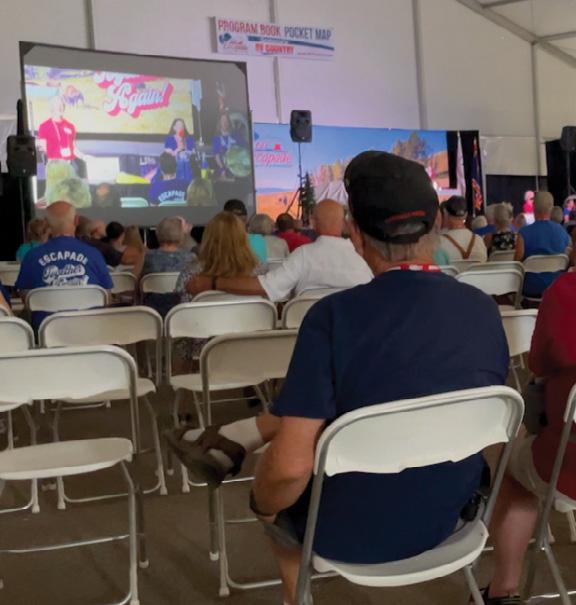
August 30–September 2
Goshen, IN
SEPTEMBER
Keweenaw Overland Adventure Retreat
September 15–18
Copper Harbor, MI
Direction Wide Open RV and Motorcycle Rally
September 22–25
Bandera, TX
The Indianapolis Fall Boat and RV Show
September 23–25
Indianapolis, IN
OCTOBER
Albuquerque International Balloon Fiesta
October 1–9
Albuquerque, NM
Lippert Getaway
October 24–30
Pine Mountain, GA
Quebec RV Show
October 27–30
Quebec City, QC, Canada
NOVEMBER
Passport American Mega Rally
October 31–November 6
New Orleans, LA
Vanarky Fall Campout
November 3–6
Location TBD
Freightliner Owners Club Fall Rally
November 14–18
Sevierville, TN
Events listed are a courtesy to our readers, with dates and details subject to change. For more information, contact the event organizers directly. If you want your next event listed here, please email info@rvtoday.com.
90 | RVTODAY.COM
RV Yesterday
A family poses with their 1920’s motorhome.
 Photo Credit: RV/MH Hall of Fame and Museum
Photo Credit: RV/MH Hall of Fame and Museum
RV TODAY | 91
GO LOSE YOURSELF IN A LONG WEEKEND.



GO EXPLORE








































































































 By Robin Goudeau-Baxter
By Robin Goudeau-Baxter
















 Samantha Gardiner @toasteronwheels
Samantha Gardiner @toasteronwheels
 By Larry McDonald
By Larry McDonald







 By Danielle Isermann
By Danielle Isermann


















































































 By Red and TJ Breen
By Red and TJ Breen





 Follow Red and TJ Breen on Instagram @lovinglifehitchedup
Beach on St. Andrews Bay
Gulf of Mexico Sunset
Pier View of Panama City Beach
Follow Red and TJ Breen on Instagram @lovinglifehitchedup
Beach on St. Andrews Bay
Gulf of Mexico Sunset
Pier View of Panama City Beach

 By Jess Stiles
By Jess Stiles


























 Follow Kristen Sargent on Instagram @perpetualmoves
Follow Kristen Sargent on Instagram @perpetualmoves
















 By Robert W. Bouchard Jr.
By Robert W. Bouchard Jr.




 Follow Bob and Grace Bouchard on Instagram @2veterans.onthemove
Follow Bob and Grace Bouchard on Instagram @2veterans.onthemove


 By Joy Newcomb
By Joy Newcomb























































 Photo Credit: RV/MH Hall of Fame and Museum
Photo Credit: RV/MH Hall of Fame and Museum


